
Mississippi Pinkeye 2 retains the most desirable characteristics of superior yield and disease resistance of Mississippi

Pinkeye, with the additional benefit of improved emergence and survivability in cool, wet soils typical of early spring weather.
“I'll never plant another variety of pinkeye peas if I can't have Mississippi Pinkeye 2. I don't want any other variety. I have tried other pinkeyes, but they don't yield, cook or taste like Mississippi Pinkeye 2. I like the size of this big pea and it shells out easy. It freezes pretty and tastes like you just shelled them.
We planted late and it was a dry year, but the plants still got knee high loaded down with peas. Mississippi Pinkeye 2 - that's my pea.”
- Lisa Holmes

“Planted two varieties of pinkeye peas this year: Texas and Mississippi Pinkeye 2. I planted the second week of March.
Mississippi Pinkeye 2 was the best pea by far. The plant was larger, had longer pods and more pods per plant than the Texas, and was taller and also grew off faster. The pods had a good purple color and shelled out better. They also freeze well. Again, there were more peas per bush than the Texas plant, plus you can pick all season long.”
- Michael Anderson

“Our Mississippi Pinkeye 2 Purplehull peas were really good producers and our customers liked them. They made long pods and the peas were larger than the other varieties we planted. They mature more evenly which makes picking easier and more profitable.
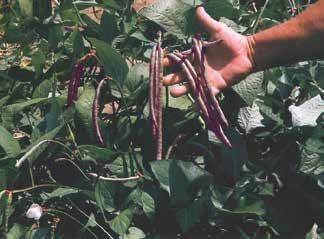
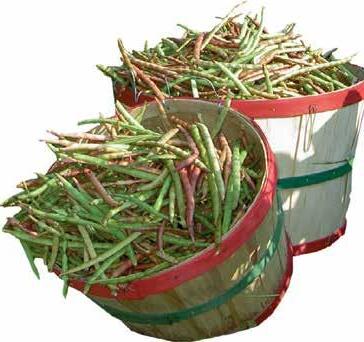
The new Mississippi Pinkeye 2 Purplehull will be a big part of my operation again next year.”
- Bob Compton
Seeds for Southern Soils

2 Cooperative Farming News NEW
RELEASE!
“I'll never plant another variety “ I ' l l n e v e r p l a n t a n o t h e r v a r i e t y of pinkeye peas if I can't have o f p i n k e y e p e a s i f I c a n ' t h a v e
Mississippi
Pinkeye M i s s i s s i p p i P i n k e y e 2 .” . ”
“I'll never plant another variety of pinkeye peas if I can't have Mississippi Pinkeye 2 .”
Pinkeye
Pinkeye
UTILITY PATENT PROTECTED
Mississippi
2 Purplehull Mississippi
2 Purplehull
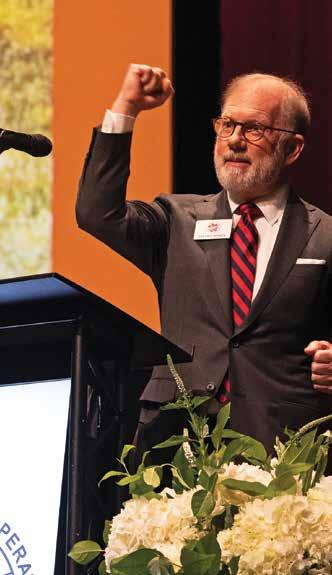

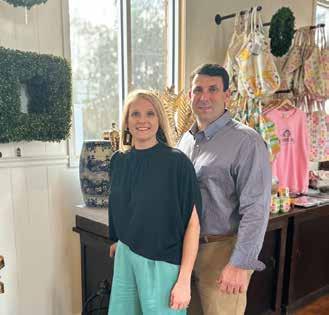

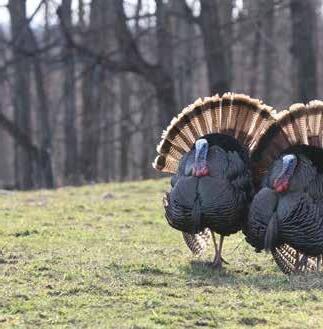
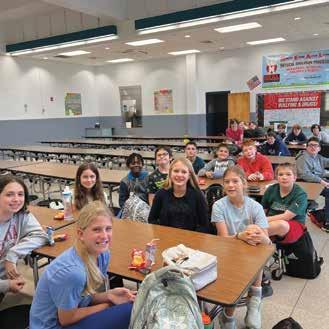
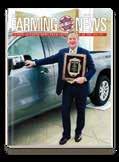
April / May 2023 3 CO-OP MATTERS 18 Future Leaders Program 46 86th Annual Membership Meeting 49 Manager of the Year Award 51 Keynote Speaker 53 Breakfast Speaker 55 Retirement Banquet 56 Guest Program & Entertainment LIFE ON THE HOMEPLACE AND IN THE COMMUNITY 58 On the Hill Garden & Market YOUTH MATTERS 28 FFA Sentinel: Winners of the Fall 2022 National Living to Serve Grant 30 4-H Extension Corner: Recognizing Difference Makers 33 PALS: Gulf Shores Middle School Joins Clean Campus Program REGULARS Letter from the Editor 4 Ag Insight .......................................... Business of Farming Feeding Facts .................................... From the State Vet’s Office Homegrown with Sweet Grown What’s the Point ............................... Horse Sense from Purina Outdoor Logic with BioLogic Cooking with Stacy Lyn Farming Your Forest Shepherding Outdoors How’s Your Garden? Howle’s Hints.................................... Magic of Gardening Lawn & Garden Checklist Simple Times ..................................... 72 Food Safety ........................................ 76 Grazing Grace .................................... 79 The Co-op Pantry .............................. 81 What’s Happening in Alabama 84 www.alafarm.com CONTENTS On the Cover: 2022 E.P. Garrett Manager of the Year, Tim Wood, Central Alabama Farmers Cooperative 37 58 34 46 51 33
er from the Editor
Spring is in full swing at the Co-op as our member stores work hard to provide for local farmers and gardeners, especially during the Bonnie Plants Spring Sale happening April 3-15.
is issue is special because it showcases our 86th Annual Membership Meeting where we celebrated historic accomplishments and even shed some tears.
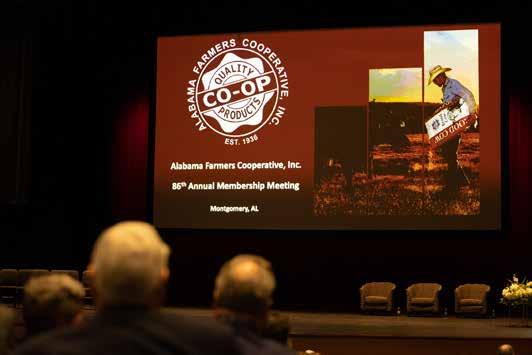
Please join us in congratulating our 2022 E.P. Garre Manager of the Year Tim Wood of Central Alabama Farmers Cooperative on his second win. Hear from him as he credits the achievement to his strong support system and love of the job.
e regulars we know and love are back with tips on gardening, thinning pines and showcasing the ongoing successes of organizations such as FFA, 4-H and PALS.
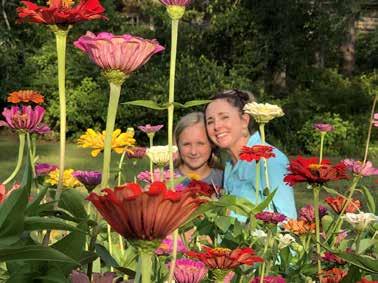

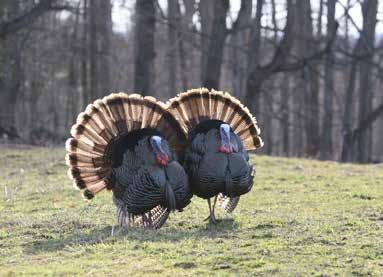
Don’t forget to check in the Co-op Pantry for some refreshing recipes to keep you cool as the temperatures start to rise. You can nd those and more inside our Co-op Cookbook, which is now joined by new merchandise available for purchase at www.alafarm.com.

Now, as we gear up for Spring and the new growth that comes with it, we look forward to working and growing together towards a bright future.
ank you for being a loyal reader, customer and part of the AFC family.
Tiffany Lester
 Editor-in-Chief
Editor-in-Chief
4 Cooperative Farming News
Le
Through diversity and strong leadership, Alabama Farmers Cooperative, Inc. has grown to become one of the largest farmer owned agriculture related businesses in the Southeast.



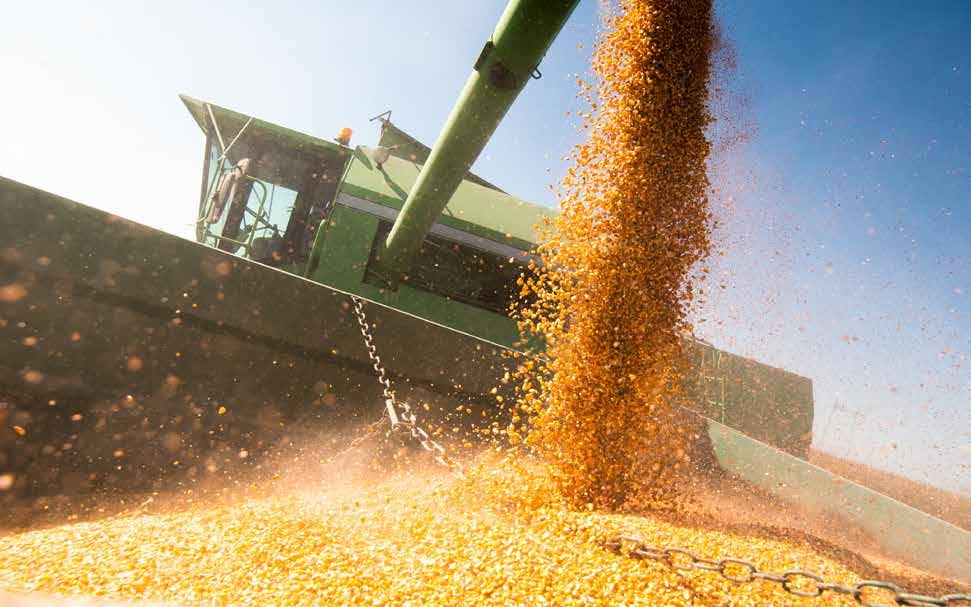
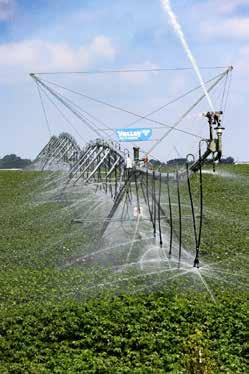

/ALAFARM


VISION
To be a relationship driven partner integrating vital resources to ensure our members/farmers success.

April / May 2023 5
@ALAFARM_COOP WWW.ALAFARM.COM
Editor-in-Chief: Ti any Lester
Editor: Jessie Shook
Contributing Editor: Jade Randolph
Advertising, Editorial, Subscription and Publication O ces
121 Somerville Road NE
Decatur, AL 35601-2659
P.O. Box 2227 Decatur, AL 35609-2227
256-308-1618
AFC O cers
Rivers Myres, President Ben Haynes, Chairman of the Board
AFC Board of Directors
Je Sims - Vice Chairman
Rickey Cornu , Ma Haney, Brooks Hayes, Rick Hendricks, Steve Stroud, Mike Tate and David Womack Honorary Directors: Sam Givhan, Bill Sanders and Lawrence Smith
Subscription $10 per year
For subscription inquiries or change of address: P.O. Box 2227, Decatur, AL 35609-2227 or call 256-308-1618

Subscribe online at h ps://www.alafarm.com/magazine
To advertise:
Wendy McFarland 334-652-9080 or email McFarlandAdVantage@gmail.com
Cooperative Farming News is published bi-monthly by Alabama Farmers Cooperative, Inc.

121 Somerville Road NE, Decatur, AL 35601-2659
P.O. Box 2227, Decatur, AL 35609-2227
Reproduction in whole or in part without wri en permission is strictly prohibited. e publisher reserves the right to refuse any advertising and will not be responsible for copy errors or misprints in advertising or editorial material, other than to publish corrections of errors in fact. Feature articles, news items and columns are published for the information of our readers from quali ed, reputable sources; however, the editors and publisher make no guarantees and assume no liability for any reader’s decision to implement any procedure, recommendation or advice printed in this publication. Photos are credited to author unless otherwise noted. Advertised sale items may not be stocked by every Quality Co-op store and prices may vary.
www.alafarm.com
Postmaster:
Please send notice of address change (enclosing latest address label) to publication
o ce: Cooperative Farming News
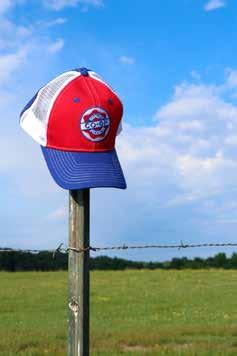
P.O. Box 2227 Decatur, AL 35609-2227
www.alafarm.com/magazine
6 Cooperative Farming News
Visit our website to subscribe to our magazine, read online, order our signature Co-op Cap or e Co-op Kitchen Cookbook. FOLLOW US: @Alafarm_coop /Alafarm
Altha Farmers Cooperative
Blountstown, FL - James Lynn, Gen. Mgr.
Phone 850-674-8194
Andalusia Farmers Cooperative
Andalusia - Russell Lassiter, Gen. Mgr. Phone 334-222-1851
Florala - Pete Blackwell, Mgr.
Phone 334-858-6142
Opp - Brandon Bledsoe, Mgr. Phone 334-493-7715
Atmore Farmers Cooperative
Atmore - Todd Booker, Gen. Mgr. Phone 251-368-2191
Blount County Farmers Cooperative
Oneonta - Eric Sanders, Gen. Mgr. Phone 205-274-2185
Central Alabama Farmers Cooperative
Tim Wood, Gen. Mgr.
Demopolis - Tom Eunice, Mgr.
Phone 334-289-0155
Faunsdale - Bryan Monk, Mgr.
Phone 334-628-2681
Selma - omas Reeves, Mgr.
Phone 334-874-9083
Cherokee Farmers Cooperative
Centre - Seth Eubanks, Gen. Mgr.
Phone 256-927-313
Jacksonville - Tommy omas, Mgr.
Phone 256-435-3430
Piedmont - Kevin Bobbi , Mgr. Phone 256-447-6560
Clay County Exchange
Lineville - Je Kinder, Gen. Mgr. Phone 256-396-2097
Colbert Farmers Cooperative
Daniel Waldrep, Gen. Mgr.
Leighton - Brad Balentine, Mgr.
Phone 256-446-8328
Tuscumbia - Chuck Hellums, Mgr. Phone 256-383-6462
Dekalb Farmers Cooperative
Jason Plunke , Gen. Mgr.
Albertville
Phone 256-878-3261
Crossville - David Tierce, Mgr.
Phone 256-528-7188
Rainsville - Cody Etherton, Mgr. Phone 256-638-2569
Elberta Farmers Cooperative
Elberta - Justin Brown, Gen. Mgr.
Phone 251-986-8103
Farmers Co-op Of Ashford
Ashford - Timothy Tolar, Gen. Mgr.
Phone 334-899-3263
Farmers Cooperative Market
Doug Smith, Gen. Mgr.
Frisco City - Tim Goldman, Mgr.
Phone 251-267-3175
Fertilizer
Phone 251-267-3173
Leroy - Je Hughston, Mgr. Phone 251-246-3512
Farmers Cooperative, Inc.
Barry Long, Gen. Mgr.
Live Oak, FL - Judd Chancey, Ag Div. Mgr. Phone 386-362-1459
Madison, FL - Virginia Kurtz
Phone 850-973-2269
Genco Farmers Cooperative
Enterprise - Ricky Wilks, Gen. Mgr. Phone 334-347-9007
Elba - Colin Morris, Mgr. Phone 334-897-6972
Hartford - Todd Smith, Mgr. Phone 334-588-2992
West Geneva - Robert Pi man, Mgr. Phone 334-898-7932
Headland Peanut Warehouse Co-op
Headland - Chris Hix, Gen Mgr. Phone 334-693-3313
Jay Peanut Farmers Cooperative
Jay, FL - Ryan Williams, Gen. Mgr. Phone 850-675-4597
Luverne Cooperative Services
Luverne - Perry Catre , Gen. Mgr. Phone 334-335-5082
Madison County Cooperative
Hazel Green - Keith Gri n, Gen. Mgr.
Phone 256-828-2010
Meridianville - Ma Dunbar, Mgr. Phone 256-828-5360
New Market - Ben Smith, Mgr. Phone 256-379-2553
Sco sboro - Ramsey Prince, Mgr. Phone 256-574-1688
Marion County Cooperative
Steve Lann, Gen. Mgr.
Faye e - Kellie Trull, Mgr.
Phone 205-932-5901
Haleyville - Jessica Steward, Mgr.
Phone 205-486-3794
Hamilton
Phone 205-921-2631
Marshall Farmers Cooperative
Holly Pond - Brian Keith, Gen. Mgr. Phone 256-796-5337
Arab - Mark Upton, Mgr. Phone 256-586-5515
Morgan Farmers Cooperative
Bradley Hopkins, Gen. Mgr.
Hartselle - Jason Pealor, Mgr. Phone 256-773-6832
Pike County Cooperative
Goshen - Danny Dewrell, Gen. Mgr. Phone 334-484-3441
Troy - Je Baron, Mgr. Phone 334-566-1834
Quality Cooperative, Inc.
Greenville - Daniel Salter, Gen. Mgr. Phone 334-382-6548
Taleecon Farmers Cooperative
Notasulga - Sco Hartley, Gen. Mgr. Phone 334-257-3930
Wetumpka - Timothy Richardson, Mgr. Phone 334-567-4321
Talladega County Exchange
Chris Ellio , Gen. Mgr.
Ashville - Katie McNu , Mgr. Phone 205-594-7042
Columbiana - Barry Keller, Mgr. Phone 205-669-7082
Pell City - Joseph Taylor, Mgr. Phone 205-338-2821
Randolph - Tim Brown, Mgr. Phone 256-357-4743
Talladega Phone 256-362-2716
Tennessee Valley Cooperative, LLC
John Curtis, President
Athens – Bri Christopher, Mgr. Phone 256-232-5500
Courtland - John Holley
Phone 256-637-2939
Elgin - Blair Shook, Mgr. Phone 256-247-3453
Florence - Reggie Shook, Vice Pres.
Robbie Neal, Mgr. Phone 256-764-8441
Grassy
Phone 256-229-6664
Lynnville, TN - Kyle Dogge , Mgr. Phone 931-527-3923
Moulton - John Holley, Vice Pres.
Greg McCannon, Mgr.
Phone 256-974-9213
Pulaski, TN - Je Wales, Mgr. Phone 931-363-2563
Tuscaloosa Farmers Cooperative
Wayne Gilliam, Gen. Mgr.
Northport - Cole Gilliam, Mgr.
Phone 205-339-8181
Walker Farmers Cooperative
Jasper - Cody King, Gen. Mgr.
Phone 205-387-1142
*Please contact each store directly for all of the services they o er*
April / May 2023 7
DIRECTORY
MEMBER
PEANUTS PECANS PROPANE PEA SHELLING CATFISH
OF
COOPERATIVES
AG INSIGHT
BY JIM ERICKSON
Bee research shows possible way to curb overwintering colony losses
Agricultural Research Service scientists and their colleagues in China have identified a specific metabolic pathway that controls how honey bees apportion their body's resources such as energy and immune response in reaction to stresses such as winter's cold temperatures, according to recently published research.
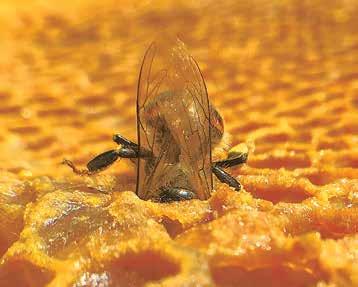
This cellular pathway has the strongest connection yet found to the large overwintering colony losses that have been plaguing honey bees. This has caused so much concern among beekeepers and farmers, especially almond producers, during the last 15 years, said entomologist Yanping "Judy" Chen, who led the study. She is with the ARS Bee Research Laboratory in Beltsville, Maryland.
The researchers also found that bees under cold stress were associated with an increased risk of disease infections, which in turn led to an increased likelihood of colony losses.
The study suggests that the increased energy overwintering bees use to maintain hive temperature reduces the energy available for immune functions. This leaves overwintering bees more susceptible to disease infections; all leading to higher winter colony losses. The research also offers a promising avenue for new therapeutic strategies to mitigate overwintering and annual colony losses.
USDA to use online application for 1890 scholars program
The U.S. Department of Agriculture (USDA) has unveiled a new e-application for the USDA/1890 National Scholars Program, which aims to encourage students at 1890s institutions to pursue food and agriculture career paths
For the first time, the new e-application for the USDA/1890 National Scholars Program allows young people around the country to complete and submit their applications online. The program is administered through USDA’s Office of Partnerships and Public Engagement (OPPE).
“The USDA/1890 National Scholars Program is crucial to USDA’s efforts to provide career opportunities for the next generation of leaders in food and agriculture,” said Office of Partnerships and Public Engagement Director Lisa Ramirez. “It introduces young people to the vast array of current needs and priorities in food, agriculture and natural resources, at
8 Cooperative Farming News
AG INSIGHT
a time in their lives when they are making decisions about their future careers.”
The USDA/1890 National Scholars Program is a partnership between USDA and the country’s 19 historically Black land-grant universities that were established in 1890. USDA works with these 1890 universities to provide scholarship recipients with full tuition, fees, books, room, and board.
Scholarship recipients attend one of the 1890 land-grant universities, and pursue degrees in agriculture, food, natural resource sciences or related academic disciplines. The scholarship also includes work experience at USDA.
Final rule announced for National Organic Program
Early this year, the USDA National Organic Program (NOP) previewed the Strengthening Organic Enforcement (SOE) final rule. This update to USDA’s organic regulations strengthens oversight and enforcement of the production, handling, and sale of organic products. The final rule implements 2018 Farm Bill mandates, responds to industry requests for updates to the USDA organic regulations, and addresses National Organic Standards Board (NOSB) recommendations.
“Protecting and growing the organic sector and the trusted USDA organic seal are key parts of the USDA Food Systems Transformation initiative,” said Under Secretary for Marketing and Regulatory Programs Jenny Lester Moffitt. The Strengthening Organic Enforcement rule is the biggest update to the organic regulations since the original Act in 1990, providing a significant increase in oversight and enforcement authority to build the trust of consumers, farmers, and those transitioning to organic production, she added, noting that the new rule is another demonstration that USDA fully stands behind the organic brand.
What the rule does
SOE protects organic integrity and bolsters farmer and consumer confidence in the USDA organic seal by supporting strong organic control systems, improving farm to market traceability, increasing import oversight authority, and providing robust enforcement of the organic regulations. Key updates include:
• Requiring certification of more of the businesses, like brokers and traders, at critical links in organic supply chains.
• Requiring NOP Import Certificates for all organic imports.
• Requiring organic identification on non-retail containers.
• Increasing authority for more rigorous on-site inspections of certified operations.
• Requiring uniform qualification and training standards for organic inspectors and certifying agent personnel.
• Requiring standardized certificates of organic operation.
• Requiring additional and more frequent reporting of data on certified operations.
• Creating authority for more robust recordkeeping, traceability practices, and fraud prevention procedures.
• Specifying certification requirements for producer groups.
U.S. beef exports to East Asia set new highs in 2022
U.S. beef exports to East Asia in 2022 are again on a record pace after a high-production year in 2021. Despite economic uncertainties due to the COVID-19 pandemic, continued global supply chain challenges and a competitive global beef market, U.S. beef exports to East Asia, both in value and volume, were outstanding in the first half of 2022.
East Asia’s relatively robust middle class has supported the demand for high-quality beef and a developed e-commerce retail sector has provided flexible avenues for suppliers to promote beef products during the pandemic.
East Asia is the top regional market destination for U.S. beef exports. During the first three quarters of last year (January – September 2022), U.S. beef exports to East Asia1, including the Republic of Korea (South Korea), Japan, China/Hong Kong, and Taiwan, were a record $6.6 billion, exceeding 2021’s exports of $5.4 billion, a 22% increase on a value basis. On a
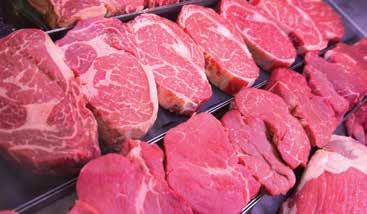
April / May 2023 9
volume basis, exports were up 6.4%. Despite surging food prices in recent months, higher-volume shipments indicate a continued demand for beef products and that East Asia’s relatively stable middle class with high disposable household income has been willing to absorb the rising costs.
Climate-smart partnership funding draws heavy interest
Agriculture Secretary Tom Vilsack has announced that the Biden-Harris Administration, through the U.S. Department of Agriculture, is investing an additional $325 million for 71 projects under the second funding pool of the Partnerships for Climate-Smart Commodities effort.


The additional funding brings the total investment from both funding pools to over $3.1 billion for 141 tentatively selected projects. The program is working to expand markets for American producers who produce climate-smart commodities, leverage greenhouse gas benefits of climate-smart production, and provide meaningful benefits to producers, including small and underserved producers.
“Expanding opportunities for small and underserved producers is a key goal of the program,” Vilsack said. These producers are facing the impacts of climate change head on, with limited resources, and have the most to gain from leveraging the growing market demand for agricultural goods produced in a sustainable, climate-smart way. Expanding markets for climate-smart commodities will help ensure that small and underserved producers reap the benefits of these new opportunities, he added.
The Partnerships for Climate-Smart Commodities funding opportunity has had high demand across agriculture and forestry. Between the two funding pools, USDA has received over 1,000 proposals requesting more than $20 billion in funds from more than 700 entities, including nonprofit organizations; for-profits and government entities; farmer cooperatives; conservation, energy and environmental groups; state, tribal and local governments; universities; small businesses; and large corporations. Applications have been received from all 50 states,
tribal lands, Washington, D.C., and Puerto Rico.
Alabama’s Tuskegee University, a Historically Black College and University (HBCU) and 1890 Landgrant University, is the lead partner on two of the projects: one focused on providing underserved producers assistance in transforming traditional production systems into agroforestry-based climate-smart production systems, and the other working with underserved producers to implement silvopasture and climate-resilient forage systems and market climate-smart sheep and goat products.
Partnerships for Climate-Smart Commodities is part of USDA’s broader strategy to position agriculture and forestry as leaders in climate change mitigation through voluntary, incentive-based, market-driven approaches.
Farm wages growth outpacing non-farm sector
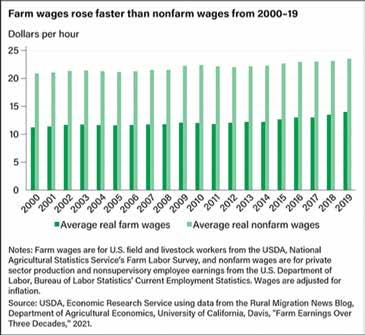
Average hourly earnings of U.S. field and livestock workers, adjusted for inflation, increased 16% between 2001 and 2019.
In 2022, minimum wages in 29 States were higher than the Federal minimum wage of $7.25. California and Washington, two major employers of hired agricultural labor, had some of the highest minimum wages at $15.00 an hour and $14.49 an hour, respectively.
While empirical evidence of widespread farm labor shortages is limited, agricultural wage growth (16%) outpacing that of non-agricultural wages (5% growth) suggests farm labor markets are becoming tighter.
10 Cooperative Farming News
Agriculture Secretary Tom Vilsack
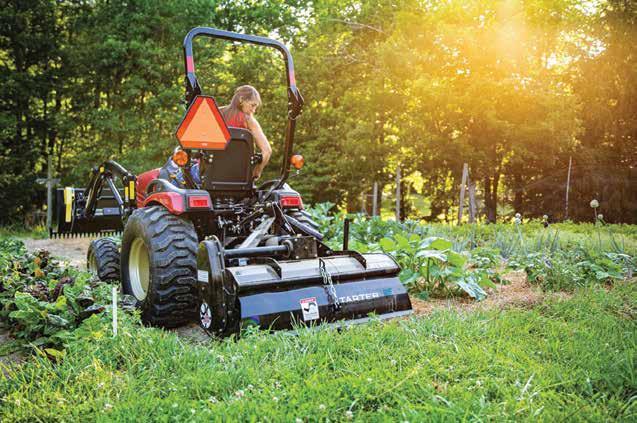



April / May 2023 11 T A R TE R U S A . CO M | 1. 800 .3 4 6. 448 6 WITH
IS AGRITOURISM A POTENTIAL PATH TO PROFITABILITY?
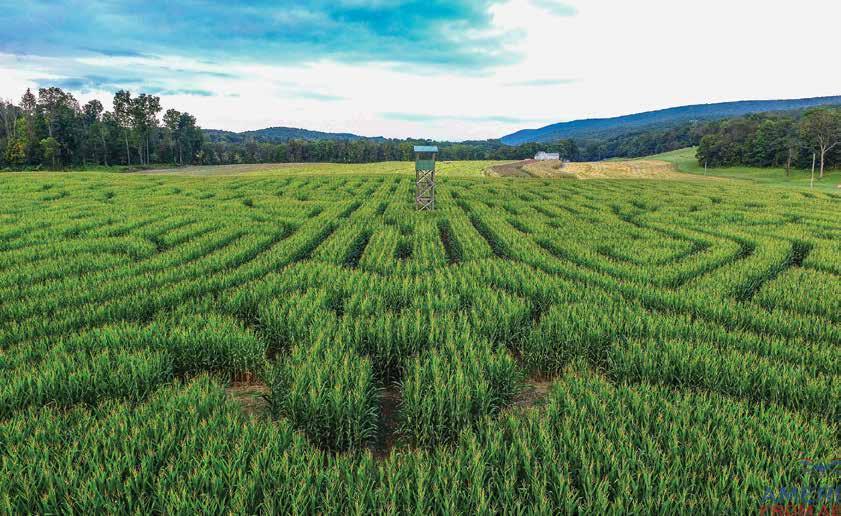 BY JARED DANIEL
BY JARED DANIEL
PROFITABILITY
On a national level, 2021 and 2022 were some of the most profitable years on record for the agriculture industry. Strong commodity prices and some assistance from government programs resulted in successful years for many farms despite soaring input costs. However, this doesn’t tell the whole story. For many farms, profit margins continue to tighten. For inheritors of land, it feels less and less feasible to hold on to the family farm. For individuals interested in farming, it’s becoming harder and harder for budgets to show a profit, depending on how conservative or optimistic the potential costs, prices and yields are. It’s no surprise then that Alabama continues to follow the national trend of fewer farms every year as farms are consolidated, sold to developers or simply cease production (Figure 1.)
However, there is hope! There are management strategies that allow farmers to keep doing what

12 Cooperative Farming News
BUSINESS OF FARMING
Figure 1 - Source: USDA NASS
they love. Oftentimes the strategy used to increase profit is to cut costs due to the limited amount of control farmers have over prices received. There is only so much that can be done to limit costs year after year while maintaining production and not every farm is able to do so. When it no longer becomes possible to reduce costs, that leaves only one other option for increasing profit: increasing revenue. Many farms have found success increasing their revenue by diversifying. Diversification of ag operations takes many different forms. One such form is the integration of an agritourism enterprise on the farm.
AGRITOURISM
Agritourism is defined as a farm operation that includes on-farm services such as recreation, hospitality and entertainment services. Common examples of agritourism include petting zoos, “u-pick,” and hayrides. In 2021, only 3% of U.S. farms were engaged in agritourism, and it can work for an operation of any size, as shown in Figure 2. At a glance, it seems that there is plenty of untapped potential and room for more in Alabama. There are a variety of ways that an agritourism enterprise can increase revenue.
Revenue sources could include but aren’t limited to:
• Direct Marketing of farm produce and/or value-added items

• Entrance/Participation fees
• Retail sales of nonfarm goods
• Recreational leases
• Venue rentals
Consumers are attracted to agritourism enterprises for a variety of reasons. You may have noticed
that all the above examples included some sort of physical interaction with agriculture. Agriculture, for a large part of our populace, has become a novelty that they’re willing to pay to experience. Yes, you read right, people will pay money to have a taste of your daily life! In addition, consumers of today also appear to be willing to pay more for local food, and care more about the means of how it was raised than consumers of 10 or 20 years ago. Agritourism is an opportunity to educate consumers and capitalize on their willingness to pay for your authentic agricultural experience, beautiful rural scenery, locally grown product or all the above.
CONSIDERATIONS
Of course, agritourism may not work for all operations, and there are a few crucial considerations when thinking through the potential for agritourism to work for you. Safety of your customers should be your top concern. While Alabama does have an Agritourism Liability Law that provides protection to operators of agritourism enterprises from lawsuits concerning risks that are inherent to agricultural activities, it does not provide complete protection from any negligence that causes injury to guests. Other considerations and questions that could be important to ask are:
• Is your farm a convenient location for visitors?
• Do you enjoy having guests on your farm?
• Will an agritourism enterprise complement the current operation(s)?
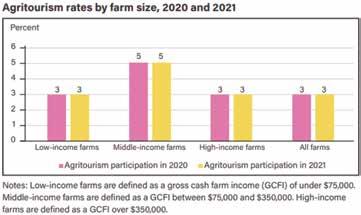
• Are you willing to be open on weekends (prime time for family spending)?
• Does your farm offer a unique experience not already offered nearby?
If you answered yes to the above questions, agritourism could be part of your path to a financially sustainable farm that your family and future generations can continue to enjoy.
This article was written by Jared Daniel, a member of the Alabama Cooperative Extension System’s Farm and Agribusiness Management team. This team seeks to collaborate with and provide leadership to agricultural producers, allied industries and local communities to increase knowledge, skills and economic decision‐making abilities designed to improve risk management, enhance resource allocation, and boost economic growth. For more information, please visit https://www.aces.edu/ or contact your local extension office.
April / May 2023 13
Figure 2 - Source: Miller, Olver and Whit. “America’s Farms and Ranches at a Glance: 2022 Edition.” U.S. Department of Agriculture Economic Research Service. December 2022.
BLUEPRINT
TARGETED NUTRITION — WITHOUT EXCESS — FOR PEAK PERFORMANCE
What if there was a simple way to improve the performance and, ultimately, the profitability of your cattle operation? I think many producers would be intrigued to know the answer to that question — and yet, at the same time, leery of making any big changes, since what we are doing isn’t broken. Or is it? We know minerals are important for reproductive performance, growth, immune responses and many other critical components of a successful cow herd. What we have learned in recent years is that more isn’t always better and that the form in which the mineral is provided has a bigger impact than anything else.
Blueprint® is the next step forward in high-performing animal nutrition. It is founded on the proven science that the form in which trace minerals are delivered is just as important as the level of the supplementation — if not more. Over time, nutritionists have chased a higher level of supplementation, hoping to see better performance by delivering more mineral to the animal. However, inorganic mineral forms— such as sulfates, oxides and chlorides — have been shown to be less bioavailable to the animal compared to organic, or chelated, forms. Inorganic trace minerals are also less expensive due to the fact that inorganic minerals are byproducts of other industrial processes. It is common to see inorganic trace minerals being supplemented at levels beyond the animal’s actual requirements due to the negative interactions between these minerals, rendering them unavailable or poorly absorbed by the animal. Ultimately, this excess mineral is excreted back into the environment.
Organic trace minerals — or trace minerals that are bound, or chelated, to a carbon-containing molecule, such as amino acids or peptides — are provided in a

form that is more similar to the form in which minerals are found in nature, resulting in better absorption and use by the animal. Blueprint® is made up of 100% Bioplex® organic trace minerals, making it the most transparent animal nutrition available comprised of the highest-quality, most research-proven trace minerals. Multiple trials from across the United States have shown that feeding Blueprint® can result in not only more calves but heavier and healthier ones, too. Data gathered from several university studies and large ranch trials have proven that feeding Blueprint® can result in:
• Improved weaning weights (with an average increase of 24 pounds)
• Better conception rates (+2.7% increase, even in highly managed herds)
• More cows bred earlier
• Better calf health (2.1% drop in pre-weaning mortality rate)
• Earlier puberty in heifers
The more effective level of fortification provided by Blueprint® products — which can be fed at lower doses than inorganic alternatives — allows them to be a feasible option for producers while delivering even better results. If you are looking for a greater return on your mineral investment, look to Blueprint® Cow-Calf 5 or Blueprint® Cow-Calf High Mag minerals, depending on the needs of your cattle. Blueprint® goes beyond just meeting trace mineral requirements; its superior bioavailability supports exceptional animal performance and health. Blueprint® is targeted nutrition, without excess, for peak performance.
14 Cooperative Farming News
FEEDING FACTS
MAXIMIZE IMMUNE HEALTH
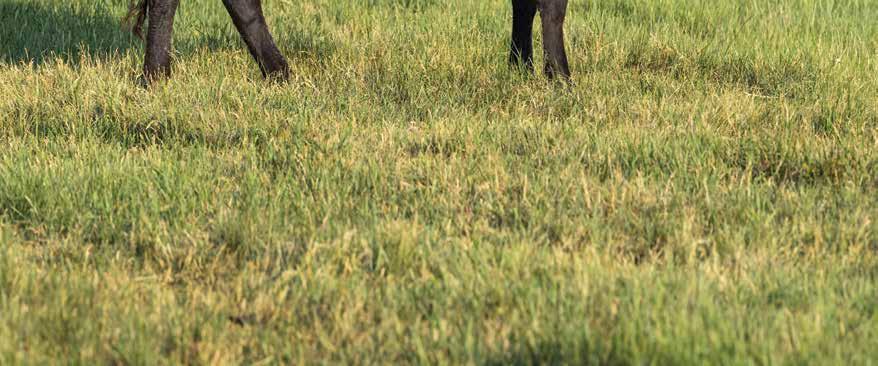
SUPPORT FERTILITY
BOOST PERFORMANCE
BLUEPRINTANIMALNUTRITION.COM
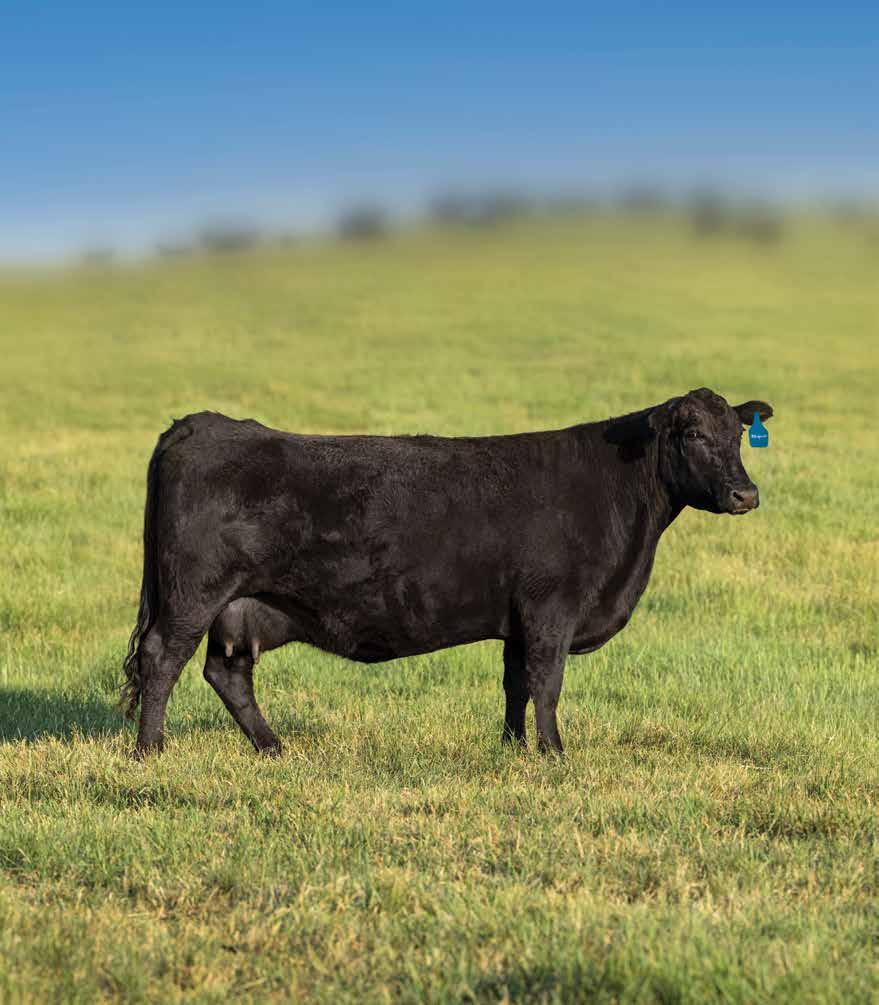
Don’t just hope for the best. Plan for it.
SAYING GOODBYE TO MY COLLEGE DEAN
REMEMBERING DEAN JOHN
 THOMAS VAUGHAN
BY DR. TONY FRAZIER
THOMAS VAUGHAN
BY DR. TONY FRAZIER
Most people who know me well and maybe some casual observers could tell you that Merle Haggard is my favorite singer. I don’t even think there is a close second place. A line from one of Merle’s songs, "Okie from Muskogee," is “And the kids here still respect the college dean.” Dr. Tom Vaughan was my dean when I went through veterinary school at Auburn University back in the mid-1980s. And if I were writing that line in the song, “respect” would not have nearly come close to how I and hundreds of veterinary students felt about our college dean. The word admiration gets closer, but I
don’t think yet a good enough word. Anyway, back in January when I heard of the passing of Dean Vaughan at age 90, I realized how fortunate and blessed I was to have been directly affected by his leadership while in veterinary school. To me, the man who sat behind the desk in the dean’s office was a huge icon in veterinary medicine and his reputation certainly preceded him. His name, along with Dr. Walker, was on the cover of the "Bovine and Equine Urogenital Surgery" book. To someone who planned to and did enter a significant degree of large animal medicine when I was in
FROM THE STATE VET'S OFFICE
private practice, to see the man whose name was on the book was humbling. Over the years, I have found that I am not alone in my way of thinking. We often spoke in hushed and reverent tones when referring to our college dean.
When I was in veterinary school, I didn’t really know Dean Vaughan. And probably at the time didn’t fully realize the impact he had on veterinary medicine and also on the students. I only knew how fortunate we were to have him at the helm. I have always been thankful for the education I got at Auburn and realize that it takes great leadership to keep all the parts welloiled and moving.
My job as state veterinarian has given me the opportunity to meet many of the people who have played important roles in the veterinary profession. But few still impress me more than to reacquaint with Dr. Vaughan. He had the unique ability to make you feel like you were the important person and that he was the one who was fortunate to meet you. And there was no phoniness about that. He was a humble man and every time I was around him, he encouraged me to keep up what I was doing. I will never forget getting a call from him complimenting me on articles we wrote for the Farmers Co-op magazine. That meant a lot to me.
Dean Vaughan graduated from Auburn with his veterinary degree in 1955. Interestingly that was the year the first edition of the Merck Veterinary Manual was published. The current Manual is the 11th edition. The veterinarians who graduated during that era didn’t just kick the can a little farther down the road, they kicked it hundreds of miles. I once read that when the first astronauts went into space, they did it with not a lot more technology than they had on the "Mayflower" when it sailed to America. That may be a stretch, but I have read that there was more technology in the early wrist watches that you could set to alarm and set the calendar dates than the rockets that propelled those pioneers into space. Well, I equate the veterinarians of Dr. Vaughan’s era. They had very little of the technology that we have today. They didn’t have nuclear medicine, advanced diagnostic imaging such as ultrasound and CT scan. They didn’t have PCR tests and advanced diagnostic blood chemistry tests. Yet, they were able to practice excellent veterinary medicine for their clients while carving out the path that leads to where we are now.
Dean Vaughan had an interest in the public health
aspect of veterinary medicine and was an advocate of “One Health Medicine,” a concept that says that you cannot segment off the health of animals from the health of humans and what affects one link in the food chain affects the complete chain. He was very interested in the beginning of veterinary medicine at Auburn University, where the first dean, Dr. Charles Allen Cary, was also the first Alabama state veterinarian. Those pioneers set up the foundation that became USDA and State sanitary livestock disease laws as well as Public Health regulations. These laws have led to the eradication, or very nearly, of diseases like hog cholera, pseudorabies, brucellosis and tuberculosis. His ability to communicate both orally and in writing was nothing short of amazing. While all of us who graduated while he was dean will remember his vice grip handshake, we will always remember his ability to write. He wrote a monthly article in the Auburn Veterinarian quarterly magazine. The articles were not only excellent in their content, but the vocabulary he used was extraordinary. It was not uncommon for me to spend several minutes searching for a word in the dictionary to fully get the concept! I think Dean Vaughan had a vocabulary that was about 10 times that of mine. I will certainly miss reading his articles. I hope someday someone compiles his articles into a book.

Dean Vaughan also taught us something about retirement. It doesn’t mean to disengage. It simply means to change gears. He continued to contribute to our profession until right before he passed away. He continued to share his wisdom and knowledge about veterinary medicine and life in general. And those of us who were fortunate to have crossed paths with Dr. John Thomas Vaughan, Dean Emeritus of Veterinary Medicine at Auburn University, were truly blessed.
And finally, I would mention that Dean Calvin Johnson, current dean of the Auburn University College of Veterinary Medicine, was a disciple of Dean Vaughan. It is a comfort to me knowing that Dean Vaughan was at Auburn when Calvin Johnson was a student in Veterinary Medicine. Dean Vaughan set the bar high for those that followed him. I know that Dean Johnson will continue to expand on the trail blazed by Dean Vaughan. And because of that, the future of veterinary medicine at Auburn University looks bright. Thank you, Dean Vaughan, for everything.
April / May 2023 17
Dean Vaughan had an interest in the public health aspect of veterinary medicine and was an advocate of “One Health Medicine,” a concept that says that you cannot segment off the health of animals from the health of humans and what affects one link in the food chain affects the complete chain.
For more information on this program please contact Samantha Hendricks at samantha.hendricks@alafarm.com

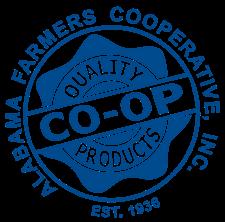

CORNERCo-op FUTURE LEADERS PROGRAM
Alabama Farmers Cooperative, Inc.
Health/Vision/Dental Continuing Education Customer Service Crop Nutrients and Feed Team Building Merchandising Sales and Finance
AFC’s Future Leaders Program is designed cooperative system the next generation equipped to handle the challenges of agribusiness FLPs will be exposed to all aspects of the Co-op, opportunity to attend organized training variety of store experience and continued education, gain the tools needed to be successful in the
FUTURE LEADERS PROGRAM Hunter Thrasher
ery department at the Co-op, giving him a well-rounded experience with a good foundation for future positions. “Since my first day in the program, I noticed AFC’s staff was passionate about equipping me with all the necessary tools and went out of their way to enable me with the ability to have a successful career within AFC or any of their affiliated partnerships,” Thrasher said. “I learned the key components to a financially sound business and how AFC has continued to thrive throughout the years. They instilled in me the importance of doing quality work and that pleasing customers while being financially profitable is the key to success.”
Julia Schmidt
Julia Schmidt relocated to Scottsboro, Alabama from Kansas and entered the Future Leaders Program with the desire to expand her agriculture and leadership skills. “I knew I wanted to work in the agriculture industry, but I wasn’t quite sure what that would look like in Alabama, as I have never lived this far east,” Schmidt explained. “After researching Alabama Farmers Cooperative, I was impressed with the amount of partnerships, yet they still had the ‘local feed store’ feel. On the AFC website I came across the Future Leaders Program position and felt that the company’s mission and vision aligned with what I was looking for in a career.”
Schmidt now works at Jackson Farmers Co-op with store and office management. She is learning retail operations such as inventory management, merchandising and advertising through social media. “The Future Leaders Program has provided new experiences to expand my knowledge and skills through product training, networking, retail operations and agronomy,” Schmidt said.

Seth Armbrester
Seth Armbrester came to the program as a Mississippi State graduate with a dairy background. He had hopes of learning more about Alabama’s agricultural community and gaining real life skills that he was not taught in college. As a member of the Marion County Cooperative’s team, Armbrester has been responsible for feed orders, unloading trucks and working the front counter, giving him a background in many different positions. “I have gotten the opportunity to meet so many great people both in the community and within AFC,” Armbrester said. “I have had the chance to travel all over the state attending meetings where I have gotten to learn more about the services we provide and furthering my education on animal health, feed, fertilizer, chemicals, seed and crop management. I have been truly blessed by the opportunities that have been made available to me through this program.”

April / May 2023 19
Julia Schmidt Seth Armbrester
Kayla Black
Auburn University Graduate Kayla Black returned home to the Shoals and is completing the program as part of Tennessee Valley Cooperative, Florence team. She is responsible for assisting customers and helping with the deposits and weekly purchases. Black has enjoyed the networking aspect of the program the most. “I’ve enjoyed the opportunity to connect with customers,” Black explained. “Hearing about their desires, their families, personal lives and being that sounding board when they need ideas has been one of the best experiences.”

Black was interested in the Future Leaders Program for the work experience but found it was a lot more. “I thought it was just going to be work experience, but I have gained a wealth of real-life experience that will follow me for the rest of my career,” Black said.
Warren Maddox
Warren Maddox spent six years in the military and has a bachelor’s degree in business management. He had an interest in the Future Leaders Program because he wanted to follow his passion. “I wanted to find a career doing what I love in farming, cattle and the outdoors,” Maddox said. “The Future Leaders Program has certainly done that for me.”
Maddox works at Andalusia Farmers Co-op where he assists with the front counter, warehouse operations, deliveries and pick-ups. “I have enjoyed being a part of this program because I have gotten to meet members from other Co-ops and learn from their experiences,” he said.
Vice President of Management Services Andrew Dempsey would like to thank the Future Leaders for their hard work. “They put in a lot of time and effort at AFC events and at their local Co-op,” he said. “I am very excited and optimistic about all of their futures

We are looking for motivated future leaders to join our team. If you enjoy working outdoors, learning about agriculture, and supporting farmers – this may be the position for you. This entry-level position offers an active, hands-on opportunity to connect with growers and producers across the south, creating a solid foundation for a career in the agriculture industry.
For more information visit www.alafarm.com/jobs or contact Samantha Hendricks at samantha.hendricks@alafarm.com

20 Cooperative Farming News
Kayla Black
Warren Maddox
Sunshine Farms U-Pick
Strawberry Field
Sunshine Farms u-pick strawberry eld has been in operation since 1990. Our eld of 200,000 plants will begin producing strawberries for picking beginning April 1st. Sunshine Farms o ers u-pick strawberries and pre-picked berries with curbside pickup available. We encourage you to bring your camera and take pictures while you pick! Sunshine Farms a ords the perfect climate for the berries grown, with neat, clean strawberry elds. Sunshine Farms cultivates elds for both commercial and u-pick purposes.
Sunshine Farms is known for having some of the freshest strawberries in Clanton. ere is nothing more breathtaking than our gorgeous delicious elds of berries!

We invite you to visit the farm to encounter a trip you'll never forget! Instagram:
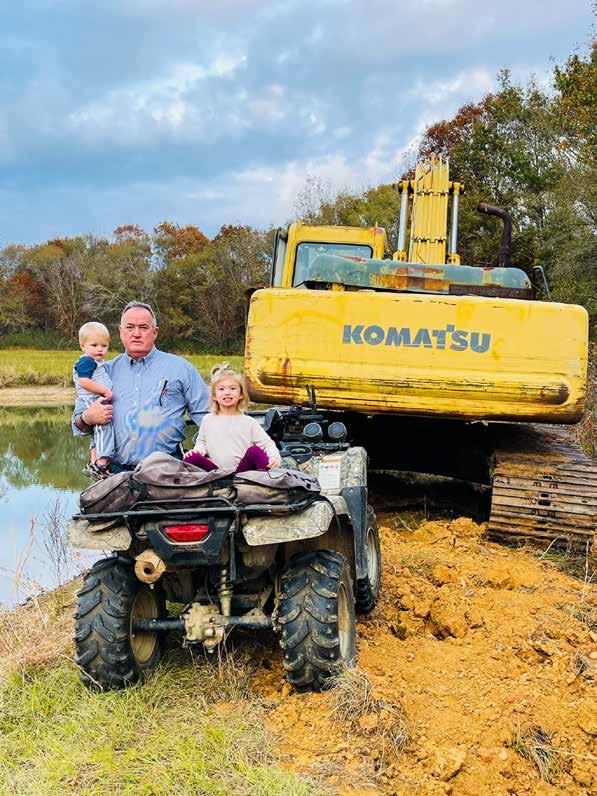
April / May 2023 21
JimDurbinFarms
www.jimdurbinfarms.com
SAFETY STARTS WITH ME THIS PLANTING SEASON, MAKE SAFE FARMING A PRIORITY
BY TIM BOGY
This month launches one of the busiest times of the year as, weather permitting, farmers begin the 2023 planting season. This means long hours and hard days for growers as they work to get seed in the ground for this year’s crop.

As the demands of this busy season begin, safety should be at the forefront of everyone’s mind. At GreenPoint Ag, safety is a topic of daily discussion. It’s not something we only do in the off season, or focus on this week, but not the next. Every GreenPoint Ag employee takes the pledge, “Safety starts with me.”
We recommend you and your farm employees focus on safety as well. Throughout the harried pace
WHAT’S THE
GREENPOINT
POINT WITH
AG
22 Cooperative Farming News
of the season, it’s easy to focus more on just getting the job done. But a bit of preparation and consideration can help everyone stay safe.
Make sure your equipment is adequately maintained and in good working condition. Ensure safety equipment and features are in place and operating properly. Follow all laws concerning travel on roads and ensure proper lighting and safety placards are in place.
Maintain your focus on the task at hand. Be aware of your surroundings and watch for children. (They are often attracted to the machinery and want to be around parents and friends.)
If you are in a leadership position on the farm, communicate the importance of safety to all workers. A brief meeting to discuss safety and the chores ahead can help everyone focus. Do this daily to ensure proper procedures are so ingrained, they become habit. You or your employees shouldn’t have to think about the safest way to do something — you want it to just come naturally.
I was growing up on my family’s farm in Wabbaseka, Arkansas, my uncle kept on an old, worn-out monkey wrench handy on the farm. He would use that tool like a hammer or a prybar, but rarely for its intended purpose. His approach was certainly one I would advise against. Instead of using an adjustable wrench as a hammer, take a few extra moments and get the proper tool. Farmers have an admirable “get it done” attitude — that’s our nature — but we should always slow down and do things properly.
If you are in a leadership position on the farm, communicate the importance of safety to all workers. A brief meeting to discuss safety and the chores ahead can help everyone focus.
Often, the safest method is not the quickest alternative, but it is always the best choice. Taking a little extra time to do things properly will save you money and frustration in the long run.
Follow label directions on any crop protection products. Be sure adequate safety equipment is available. Choose the right tool for the job. I remember when
Planting season can be hard on both body and mind. Growers may spend 16 to 18 hours in the tractor seat, and fatigue can cause us to take shortcuts and be unsafe. It’s a good idea to take breaks often, get adequate sleep, and don’t skip meals. If you are getting tired and starting to work unsafely, you may not recognize when it’s time to call it a day. Be mindful of the dangers of fatigue, and watch out for one another.

Let’s get through this challenging time safely.

April / May 2023 23
HORSES DON'T EAT FEED TAGS
READING, COMPARING AND UNDERSTANDING HORSE FEED TAGS
KELLY VINEYARD, M.S., PH.D.
Not only do you need a little background knowledge about nutrition terminology, but you also need a good understanding of horse nutrient requirements to make sense of it all. Because a feed tag is required by law to be on every bag of commercial horse feed, it is the only consistent information available to make comparisons across all brands. However, there are limits to what can be included on

a horse feed tag and it’s important to understand what you can and cannot determine from the information presented.
Feed tags are legal documents regulated by the Association of American Feed Control Officials (AAFCO), as well as individual state regulatory agencies and the U.S. Food and Drug Administration (FDA). AAFCO publishes an official document each year outlining feed labeling requirements for all animal feeds.
24 Cooperative Farming News HORSE SENSE FROM PURINA
WHAT A HORSE FEED TAG
TELLS YOU:
1. Product name and weight – an obvious, but nevertheless important piece of information.
2. Purpose statement identifying the type of horse intended to be fed – a surprisingly large number of horse owners do not pay attention to this. Checking that your feed has been specifically formulated for your class of horse is critical. For example, you would not want to feed a product designed for a “mature horse at maintenance” to a “young growing horse.”
3. Guaranteed analysis of certain nutrients – AAFCO dictates the following nutrient guarantees to be listed for all fortified horse feeds: Crude Protein (minimum), Crude Fat (minimum), Crude Fiber (maximum), Acid Detergent Fiber (ADF) (maximum), Neutral Detergent Fiber (NDF) (maximum), Calcium (minimum and maximum), Phosphorus (minimum), Copper (minimum) (if added), Selenium (minimum), Zinc (minimum), and Vitamin A (minimum) (if added). Sugar (maximum) and Starch (maximum) guarantees are also required on any horse feed including carbohydrate claims on the packaging and/or marketing materials. All nutrients guaranteed on the tag are potentially subject to testing by regulatory agencies to determine whether the tag guarantees are accurate.
4. Ingredient list – this listing may include individual ingredients (e.g., oats, rice bran, etc.) and/or collective terms (e.g., grain products or processed grain by-products). In most states, the feed manufacturer determines the ingredient terminology; however, some states require individual ingredients on horse feed labels. Some horse owners feel an ingredient list including ingredients means the manufacturer is “locking” or “fixing” the feed formula, while collective terms indicate the feed formula is using “least cost” formulation. The ingredient list does not provide insight to the formulation strategy utilized for any given feed product. Further, individual versus collective terms do not yield information regarding quality of ingredients in a feed. Ingredients are required to be listed in descending order of inclusion. However, there are no reliable analyses to determine exact amounts of ingredients, or even clearly distinguish specifically which ingredients are included, so it’s difficult for regulatory agencies to monitor compliance to this law.
5. Feeding directions – again, a surprising number of horse owners do not read the feeding directions. Horse feed manufacturers formulate feeds to be fed at a specific range of feeding rates; when a product is not fed according to the directions, the full nutritional benefits of that feed may not be realized and the feed will not perform as intended.
WHAT A HORSE FEED TAG DOES NOT TELL YOU:
1. Additional nutrients needed by the horse but aren’t required to be guaranteed on the tag – some manufacturers choose to include nutrient guarantees beyond those required by AAFCO or individual states; horse owners sometimes compare guaranteed analyses and feel more, or higher, nutrient guarantees mean improved nutrition for their horses. However, even if a nutrient is not guaranteed on the feed tag, it doesn’t necessarily mean the nutrient isn’t in the feed. Many manufacturers provide a completely balanced ration including many more nutrients than listed in the guarantee. State regulatory agencies often perform analyses on nutrients required to be listed; some may also test additional guaranteed nutrients, but it’s not required. The state is less likely to test for nutrients not required to be listed and some nutrients are quite expensive to assay (such as amino acids, vitamins and various feed additives), so compliance with those additional guarantees is not as reliable as for those required to be listed.
2. Nutrient and ingredient quality or bioavailability –The total amount of protein listed on the tag (i.e., 14% crude protein) tells you nothing about the quality of that protein (i.e., the amino acid composition). There are countless ways to blend various ingredients to make a feed with 14% crude protein, but the horse will respond very differently depending on what ingredients supply that protein. In many cases, a feed containing 12% crude protein made with high quality ingredients will supply more total protein, and more essential amino acids, to the horse than a feed containing 14% crude protein made with lower quality ingredients. The same principle holds true for fat, fiber, vitamin and mineral sources. Not all ingredients are the same quality, stability or availability for the horse.
3. The “feed recipe” – the ingredient list isn’t a recipe, but rather a basic list of the ingredients used to make the product. Horses don’t have an oat or soybean meal requirement; they have protein, vitamin, mineral and calorie requirements. Ingredients are simply vehicles for delivering nutrients. In addition, the inclusion of an ingredient does not necessarily mean it’s included at a physiologically meaningful level. Even though an ingredient is listed, it could be just a trace amount was included.
4. Whether or not the guaranteed levels of nutrients are appropriate – when reading horse feed tag guarantees, many horse owners look for the tag with the “most” of everything listed. With that mind-
April / May 2023 25
set, if one tag guarantees 3,000 IU/lb Vitamin A and a second tag guarantees 15,000 IU/lb Vitamin A, the second feed would be considered “better,” especially if the two feeds are the same price. However, there is a maximum tolerable amount of Vitamin A for horses, so the second feed could cause health problems if fed at a high rate over a period of time. This concept holds true for many nutrients. Sometimes more is not better. Sometimes more is just more and sometimes more is worse, possibly even toxic.
5. Quality control – Feed manufacturers have widely differing quality control standards. There is an industry “minimum” standard for quality and safety measures for animal feed products, but many
companies go beyond these minimum standards. It’s up to the horse owner to investigate each individual manufacturer’s approach to quality control. This includes whether horse feed is manufactured using the same equipment as cattle feed containing ionophores.
6. Research behind the feed – horse owners often assume all horse feeds are based on scientific investigation and rigorous testing prior to being sold on the market. However, this isn’t always the case. It’s not a difficult process to develop a horse feed formula based on published nutrient requirements, common ingredients used in horse feeds and simply bring a feed to market with no further testing. Not all feed companies put the resources into a comprehensive scientific research program to support the development of their horse products.
At Purina®, we take the most pride in things that cannot be found on the feed tag. While the regulatory agencies require a feed tag meeting each individual state’s label requirements, that tag does not provide all the information necessary to make the most informed feed decision. We are glad “horses don’t eat feed tags,” because we know feed tag information doesn’t tell the full story, either nutritionally or how that feed will perform. At the end of the day, the most accurate indicator of a good quality feed is how a horse looks, feels and performs.
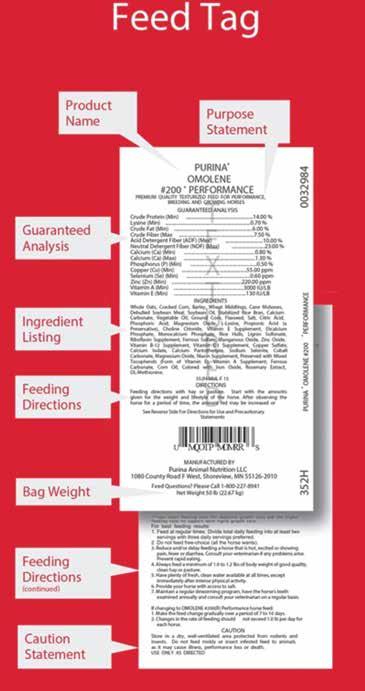
Our expert Purina horse feed team includes six PhDs and a DVM who make it a priority to produce top quality products exceeding our customers’ expectations. We do this by focusing on things not found on a feed tag:
• Studying advances in equine nutrition
• Conducting scientific research at the Purina Animal Nutrition Center and in collaboration with universities
• Conducting field tests to ensure our feeds perform as intended before ever being made available to the public
• Fine-tuning feed formulations


• Working with our quality control and production specialists
• Constantly monitoring ingredient and finished product quality
In other words, we spend a great deal of time and effort making sure our horse feed products are the best they can be. We encourage our customers to learn more about exactly what we do and how we do it. For more information, view our horse feed products and educational articles or contact customer service.
26 Cooperative Farming News

April / May 2023 27
LIVING TO SERVE GRANT WINNERS OF THE FALL 2022 NATIONAL
BY JOSHUA BRYAN
Four Alabama teachers and FFA advisers, Allison Kincer, Shelby Atwood, Amy Stephens and Hannah McBurnett, each received the Fall Living to Serve grant from National FFA this past semester. The Living to Serve grant provides teachers with up to $1,200 to help them reach their goals with a classroom project within a semester. This project is meant to be engage students in service-learning and community involvement with a clear impact in the community as well. Each of these teachers have started their projects, outlined below.
Allison Kincer is a teacher at Fort Payne Middle School in Fort Payne, Alabama. Kincer has chosen to install a hydroponics system in her classroom for her grant project, with the intent to have her students learn how to maintain one and harvest from it. She chose hydroponics because most of her students
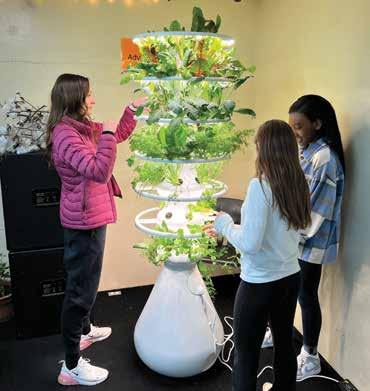
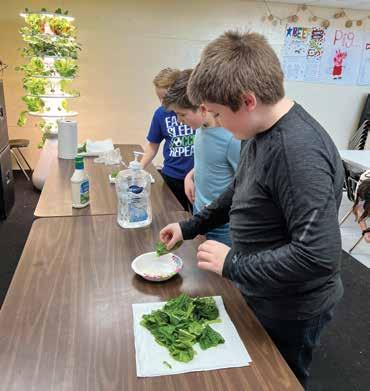
live in places that won’t allow for planting straight into the soil, so she wants to show them alternative ways to plant. After the system arrives, Kincer plans to give several lessons on how to set up and maintain a hydroponics system and teach the students how to harvest from it themselves to take home. As this is the first year that Fort Payne has had the agriscience program and created an FFA chapter, Kincer hopes that this project will help the program grow.
Shelby Atwood teaches seventh- and eighth-graders in her agriscience exploration and pre-agriscience classes at Florence Middle School in Florence, Alabama. The project they’ve chosen is one that emphasizes school safety. The plan is to order and implement new blackout lockdown shades for the entire middle school; Atwood sent out a Google form to evaluate interest in this project beforehand. The
28 Cooperative Farming News
FFA SENTINEL
Students work to harvest lettuce grown in their vertical hydroponics unit.
Utilizing their vertical hydroponics unit shows students that food can be grown in unconventional ways utilizing small spaces. This is one way to battle the issue of how to sustainably feed a growing nation.
students who are participating in this project are part of a crime prevention committee, giving them the opportunity to engage in leadership and collaboration, working together toward better school safety. After distributing the blackout shades, her classes will engage in a Crime Prevention Day, where local law enforcement will come and talk to them about school safety. As a final step in their project, the committee will provide goodie bags to local law enforcement to convey their thanks. Shelby hopes that students who take part in this project better understand the “importance of conducting community service projects” and “helping others when they do not have a direct benefit” themselves.
Amy Stephens from Lincoln High School and Hannah McBurnett from Charles R. Drew Middle School collaborated on their FFA chapter’s project. The Living to Serve grant will help Stephens and McBurnett, along with their classes, build “Stop the Bleed”
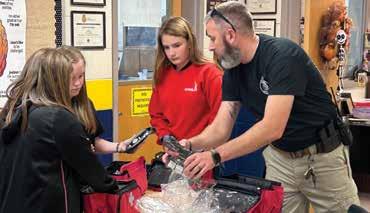
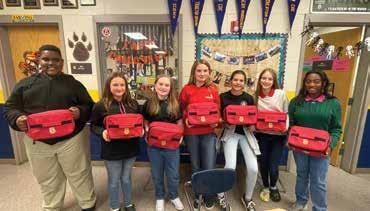

kits, where one will be placed within each campus in the district. However, Stephens mentioned that their hope is to have kits in all classrooms someday. These kits will contain tourniquets, chest seal packs, trauma gauze and scissors; they are specifically meant for major wounds rather than small ones. McBurnett shared that the impetus for this project was their active shooter training, which prompted them to think about the possibility of lockdowns preventing first responders from reaching students and faculty sooner. With that in mind, they decided that their project would be on kits that would give injured people more time to wait for help. As a part of the project, FFA members will also create a video to go with the kits that will be administered during professional development meetings. Stephens stated, “This is just one more safety net in place to help students and faculty be more prepared and safe in an ever-changing world.”

April / May 2023 29
FFA members from Florence Middle School preparing to issue blackout curtains throughout their school to enhance school safety.
Teachers of Florence Middle School were so happy to receive these blackout curtains that will help add safety measures during school lockdowns.
Students from the Lincoln FFA display the trauma bags they have put together to share with each school in the district.
Students work with their school Resource Officer to prepare their “Stop the Bleed” kits designed to treat major wounds.
4-H VOLUNTEERS
RECOGNIZING DIFFERENCE MAKERS…
BY CAROLYN DRINKARD
Helen Keller once said that, “Alone, we can do so little; together, we can do so much.” In 4-H, staff members realize the value of working together with volunteers to enrich youth development programs. Volunteers teach, develop programs and 4-H projects, secure resources and provide positive life experiences for young people.
In 2022, more than 4500 dedicated individuals stepped forward to help. Volunteers worked throughout the state in local schools, communities and regions. They shared their knowledge, expertise, compassion and care with young people. The dedication and commitment of these “difference makers” made them living examples of “Making the Best Better.”
“Our volunteers are our boots on the ground,” said Nancy Alexander, Extension Specialist, 4-H Youth Development. “They are often our accountability partners, our best advocates and our best recruiters of members and other helpers.”
To recognize the many contributions of 4-H volunteers, seven outstanding “Volunteers of the Year” for 2022 were honored at a ceremony at the Alabama 4-H Center. Chosen as the “best of the best” were these dedicated individuals:
Paige Naylor from Lawrence County 4-H is the Northwest 4-H Volunteer of the Year. Paige has served as a volunteer for the past four years and leads the 4-H Robotics Club, 4-H Homeschool Club and co-leads the 4-H Rabbit Project. Paige is also the lead contact for the 4-H Tech ChangeMaker program. Paige serves on the Lawrence County 4-H Adult Advisory Committee and the Farm City Committee. Paige assists at the County 4-H Roundup and Regional Competitive Events Day and chaperones at the 4-H Midwinter Teen Leadership Retreat. Melinda Smith, the 4-H REA in Lawrence County, said, “Paige has the 4-H motto at heart, ‘To Make the
Best Better.’ Her interest and passion and time and energy put forth into helping youth discover their talents and improve their skills are priceless. I am so grateful to have Paige as a 4-H volunteer.”
Dianna Adams is the Northwest 4-H Volunteer of the Year from Marshall County 4-H. For the past six years, Dianna has served as the 4-H Club Sponsor at Albertville Elementary School, where more than 200 students are active in 4-H events and activities. Every year, Dianna hosts a 4-H Summer Camper lunch at her school to orient students to the camp experience. Dianna personalizes a special note to each camper to be opened and read while they are at camp. Dianna also serves as a member of the County 4-H Adult Advisory Committee. 4-H Regional Extension Agent Audrey Jones said, “I often say
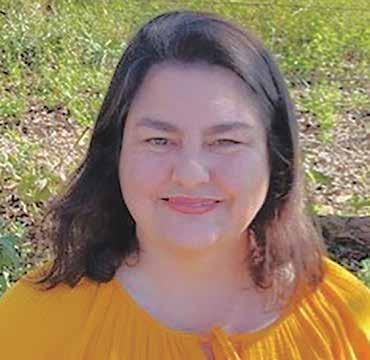
30 Cooperative Farming News 4-H EXTENSION CORNER
Northwest Alabama: Paige Naylor
I wish I could have a clone of Ms. Dianna in every school! She goes above and beyond for her 4-H club and 4-H members. Marshall County 4-H is blessed to call her ours!”
Bethany Baxter, from Lamar County 4-H, is the West Central 4-H Volunteer of the Year. The definition of a servant’s heart, Bethany is patient, kind, and committed to showing up for the youth involved in the 4-H Sewing Club. Bethany also serves on the Lamar County 4-H Adult Advisory Committee and annually pro-
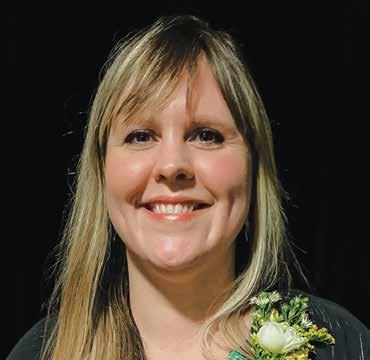
vides leadership for the planning and implementation of the Lamar County 4-H Sewing Club. Chelsey Gann, 4-H Regional Extension Agent in Lamar County, said, “Without the selflessness of volunteers like Bethany, our world would be a much drearier place. My heart is full today thinking of the kindness and skills Bethany continues to pass along to our 4-H members. Thank you for being a part of our 4-H Team for the past six years and making a positive difference in the lives of young people in the county.”
Aieda Harris, from Montgomery County 4-H, is the Central Alabama 4-H Volunteer of the Year. For 15 years, Aieda has been leading the 4-H E.C.H.O. (Empowering Communities Helping Ourselves) club. The 4-H ECHO club focuses on mentoring at-risk youth by offering a variety of 4-H programs, homework help, after-school snacks and 4-H day camps during the summer and school holidays. Passionate about violence prevention and anti-bullying, Aieda is participating in a national 4-H Shooting Sports gun violence prevention program this year. Shannon Andress, the 4-H Regional Extension Agent in Montgomery County, said, “Ms. Aieda embodies the whole of 4-H: a HEAD that thinks always of others’ needs; a HEART that loves all children; HANDS that unselfishly help those in the community who cannot help themselves; and her focus on mental and physical HEALTH for children and adults.”

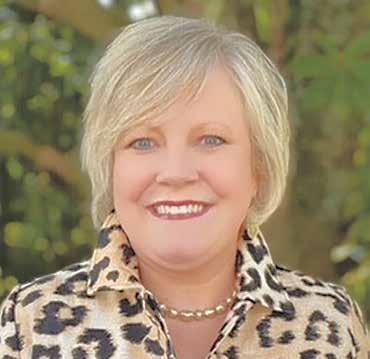
April / May 2023 31
John Stewart, from Lee County 4-H, is the East Central 4-H Volunteer of the Year. John has served
Northeast Alabama: Dianna Adams
West Central Alabama: Bethany Baxter
Central Alabama: Aieda Harris
as a Direct 4-H volunteer and club leader for the 4-H Shotgun Club at Auburn High School. In John’s six years as the 4-H club leader, the club has grown to 32 members and 10 volunteer coaches. John has proven himself a successful fundraiser, securing a privately owned shooting range for the club, along with equipment for three separate fields: skeet, trap and 5-stand. John’s passion for SAFE shooting and the joy of the sport is evident to each of his members, and he has created special bonds with all the families in the club. Lee County Extension Coordinator, Tara Barr, said, “As a County Extension Coordinator and 4-H Shotgun Club parent, I can say that John Stewart is truly an inspiration to our kids. He is consistent, dependable and shares ways of improvement at each practice. Our program would not be as strong or successful without his leadership.”

Cindy Huckabee, from Clarke County 4-H, is the Southwest Alabama 4-H Volunteer of the Year. Cindy has been a volunteer for seven years and she is a member of the county 4-H Adult Advisory and ACES Grassroots Committees. Cindy has served more than 900 hours as a 4-H volunteer and helps with numerous 4-H Club meetings and events, like Chick Chain, Pig Squeal, Diary, Clarke County 4-H Youth Council, and the 4-H Cooking Club. Wendy Padgett, the 4-H Regional Extension Agent in Clarke County, said, “Cindy’s dedication and volunteerism to the Clarke County 4-H program has been truly outstanding. I am proud to have had the opportunity to get to know and work with Cindy and her
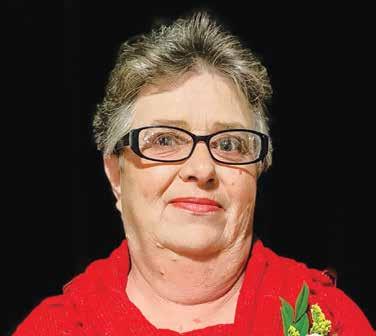
family for the past seven years. Cindy has been a blessing to me and Clarke County.”
Brandie Bookout, from Coffee County 4-H, is the Southeast Alabama 4-H Volunteer of the Year. Brandie, a 4-H alumnus, joined the Coffee County 4-H team because she wanted her kids and others to experience 4-H. Brandie has led the Coffee County 4-H Horse Club for six years. She also assists with Pig Pen, Chick Chain and Archery 4-H programs. Although Brandie’s children have aged out of 4-H, her service continues to impact the youth of Coffee County. Madison Tew, the 4-H Regional Extension Agent in Coffee County, said, “Brandi’s knowledge, compassion and love for kids have truly become an asset for Coffee County 4-H. She is always someone I can count on and always strives to Make the Best Better!”
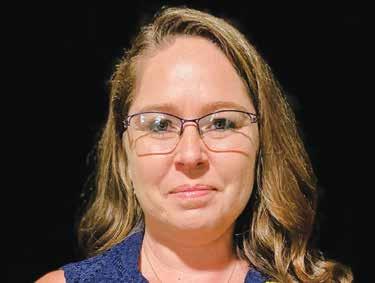
32 Cooperative Farming News
Southwest Alabama: Cindy Huckabee
Southeast Alabama: Brandie Bookout
East Central Alabama: John Stewart
GULF SHORES MIDDLE SCHOOL JOINS CLEAN CAMPUS PROGRAM
 BY JAMIE MITCHELL
BY JAMIE MITCHELL
Alabama PALS would like to welcome Gulf Shores Middle School to the Clean Campus Program! We are thrilled to have their after-school students leading the program for the school. I went to visit the students earlier in the semester to kick off the program and encourage participation in our annual “Don’t Drop it on Alabama” Spring Cleanup and spring contests.
In our discussion, I told the students about the Spring Cleanup and how Alabama PALS provides bags for schools and communities that are planning cleanup days. Since the Cleanup runs the entire month of April, I let them know that they can pick any day or weekend in April to participate and work it into what works best for their schedule. I also let them know that even if they cannot participate in a larger cleanup, if they would just pledge to pick up one piece of litter every day that would be a huge help.
There are nearly 600 students at Gulf Shores Middle School, so if each student would pick up one piece of litter for every weekday of school, they would pick up over 3,000 pieces of litter collectively every week! Every little bit counts! I challenge every reader to do the same … please try to find one piece of litter to pick up every day. It really does add up if we all work together! Also, the “Don’t Drop it on Alabama Spring Cleanup” is a statewide event, so please contact us if you would like to plan a cleanup in your community or neighborhood. And, as always, if a school near you would like to participate in the Clean Campus Program, please have them call us at 334-263-7737 or email to jamie@alpals.org. Schools are always a great place to start with litter prevention and education through the Clean Campus Program. Alabama PALS programs are free to schools thanks to our state partnerships and corporate sponsors.
April / May 2023 33
PALS
LONGING FOR THOSE GOOD GOBBLIN' DAYS
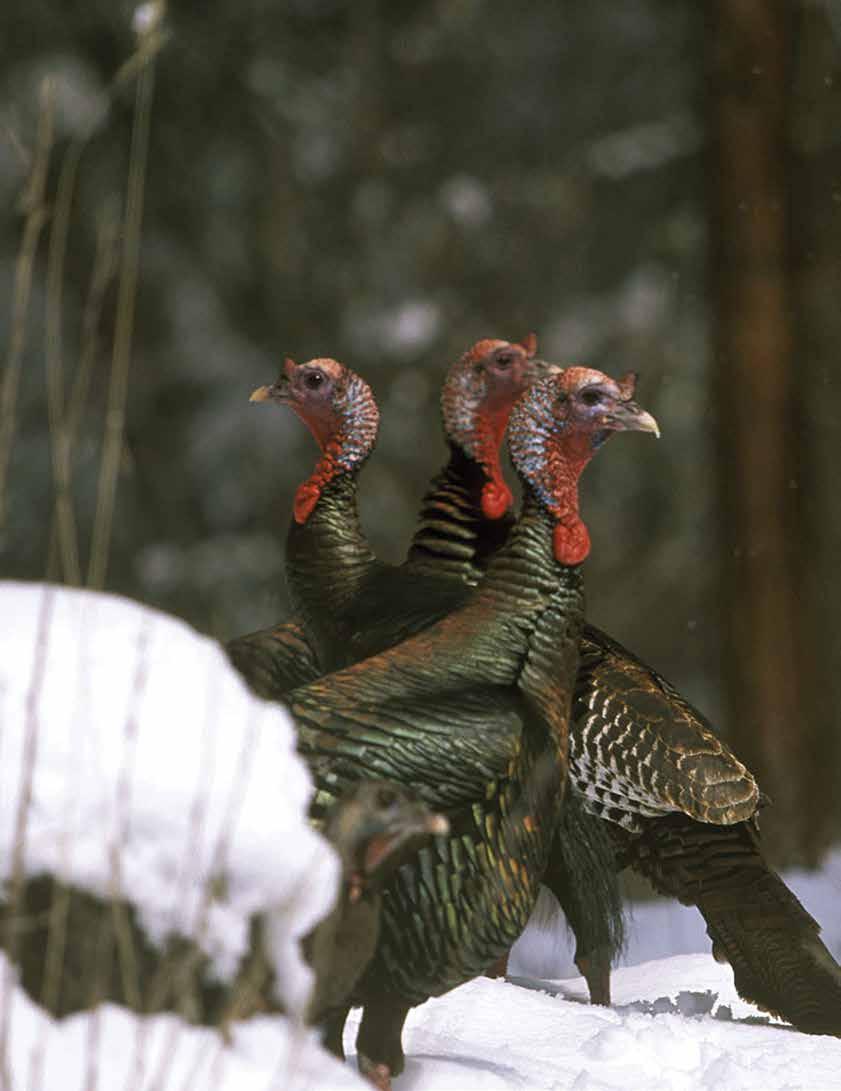
HOW TO WORK TOMS DURING POOR WEATHER
BY TODD AMENRUD
OUTDOOR LOGIC WITH BIOLOGIC
34 Cooperative Farming News
Doesn’t it seem like those "good gobbling days" can sometimes seem few and far between? You know the ones – the sun is shining, high pressure, there's little or no wind and the toms are fired up and “gobbling their heads off.” Some hunters take a vacation or have limited time to hunt so they need to go regardless of the weather. I've hunted many states for turkeys and oftentimes it seems like those good days are too infrequent with the volatile weather spring typically ushers in. With the period’s fast-changing, unpredictable weather, hunters should be prepared to hunt in the rain, wind and sometimes even snow. It’s important to know how turkeys act when each phenomenon occurs.
With rain, it really depends on the severity of the storm. With drizzle or a light rain, the turkeys really don't seem to change their habits much. When it comes to a downpour, they will head for cover. They seem to know ahead of time when harsh weather is going to hit. Their inner ear can probably sense the barometric pressure change.
Once the grass, brush and foliage are wet, turkeys will frequent open fields, meadows and pastures. Probably for no other reason than so their feathers don't soak up the water and so they can dry off. In this situation, they probably aren’t going to be very vocal so you’ll need to use your optics and knowledge of the area to locate them.
I’ll always advocate safety, but sometimes thunder can be helpful. If the lightning accompanying the thunder is close, please retreat. But I’ve killed several birds because they couldn’t resist gobbling when the thunder cracked. Just like many locator calls will make a turkey “shock gobble,” the roar of thunder can induce a gobble out of a tom to let you know exactly where he is.
With as much snow and cold as we’ve received this year, who knows what we might receive through turkey season. “Global warming,” he said sarcastically. If you hunt during the early part of the season, snow is a serious concern, especially in northern states. During a South Dakota hunt a year ago, we received a blizzard and were slapped with three feet of wet, heavy white-stuff in two days. It made getting around more difficult, but it also made fresh signs very easy to see. Snow doesn't seem to bother them as much as rain does. If it's harsh, they'll go to cover, but unlike rain, after, they don't seem to need to search out the open fields and pastures as dependably as they do with soaking wet feathers. The snow doesn't bother them that much but the severe temperatures that sometimes accompany snow can often make them so quiet it seems like they disappeared. If it’s later in the spring and the hens are nesting this may also cause the hens to abandon the nest.
When it comes to wind, use some common sense … where do you want to be? Turkeys don't like cruel winds either. They still need to go about their daily routine of feeding, breeding and all the other things that make a turkey's life busy, but they'll be doing it out of the wind somewhere. They typically won't be far away from where you usually find them. Look for thick parcels of timber, pine plantations or search for a drainage or gully that runs perpendicular to the wind. Just use the brain God gave you.
With these two weather phenomena, or even with the onset of low pressure without rain, the gobblers can become very quiet. They might still react to your calling, but there’s a good chance that they’ll come in totally silent. The key is to know for sure that the birds are there. After sitting for a period, how do you know whether it’s time to get up and move or change tactics
Don’t give up if you get unfavorable weather during your hunt. The birds are still there. When snowing, the toms probably aren’t going to gobble as much as they do during nice weather, but seeing the birds becomes much easier and fresh sign becomes obvious.

April / May 2023 35
(Photo Credit: NWTF)
if you have silent toms? Having confidence in the area is a key. This is why scouting is so important. You need to know the birds are in the immediate area. While pursuing turkeys, it seems I use my optics more during harsh weather than at other times, obviously because they aren't gobbling as much. Also, as said, if they're out in the open fields and pastures they are much easier to see at greater distances.
You may need to change your calling habits a bit, or simply change the call that you're using. If you can't
hear as well in a wind or rain, even with their superior sense of hearing, oftentimes, neither can a turkey. I like to use louder calls such as a box call, or slates made from aluminum or titanium when “sound oppressing conditions” roll in.
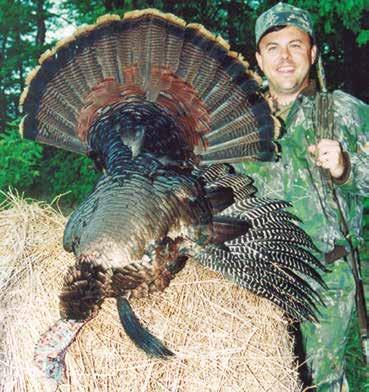
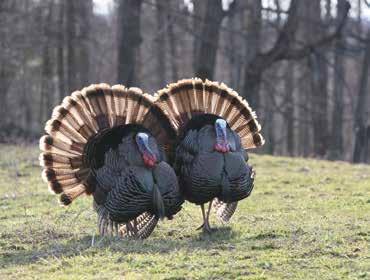
When locating birds, it's a good idea to use the turkey's excellent hearing to your advantage and position yourself downwind of a given parcel – because of their exceptional hearing they can more than likely still hear your locator call, but now you can hear their response much better with the wind helping you out. If you're hunting with a partner, make sure you stand a fair distance apart from one another when you locate so you can better triangulate a position on an answering tom.
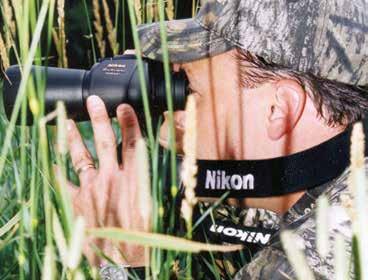
Blinds can also come in handy in bad weather of all kinds. I have several different blinds that I like to use for different situations. You can even fashion a blind from natural material from the area, but it’s much more comfortable in a blind that keeps you protected from the elements. You can also get away with much more movement in a blind.
Lastly, decoys are a tool I wouldn’t be without, especially in bad weather. Often, they aren’t as vocal when various weather phenomena hit, but they do still react visually. In rain, I’ve set up a small flock of decoys in a large agricultural field and never had to call at all. That’s the time of the year when turkeys want to get together with other turkeys, so they react positively to your offering.
A hunter should be prepared for the worst. With limited time to hunt, you need to make the best of any situation. If you experience bad weather on your hunt, don't give up. The turkeys are still there somewhere, and persistence does pay off.
36 Cooperative Farming News
Bad weather served to aid in this bird’s demise. A big thunderhead came rumbling through and every time it would thunder, the bird would gobble, giving away his location.
In most bad weather situations, gobblers aren’t going to be as vocal as they are during nice weather. Oftentimes you need to physically see the birds to know where they are. Use optics to combat their extraordinary eyesight.
Sometimes those “good gobbling days” seem few and far between. If you hunt springtime turkeys for more than a few days you’re bound to run up against wind, rain or even snow. (Photo Credit: Monte Loomis)
BACON JAM

Yields 2 pints
1 1/2 pounds bacon, chopped
1 teaspoon butter
3 large onions, diced
1 teaspoon kosher salt
1/4 cup bourbon
1 cup apple cider vinegar
3/4 cup brown sugar
1 pinch cayenne pepper
1/4 cup grainy mustard
2 teaspoons balsamic vinegar
2 teaspoons extra-virgin olive oil
Place bacon in a cast-iron skillet over medium-high heat and cook until bacon is golden and crispy and fat has been rendered, about 6-8 minutes. Remove the bacon to a cutting board and allow to cool. Add butter, onions and salt to the skillet. Reduce the heat to low and cook onions until they are translucent and tender, about 10 minutes. Add bourbon, vinegar, brown sugar, cayenne, and mustard to the mixture and simmer until thickened, about 20 minutes. Add bacon to the skillet and stir until incorporated. Remove from heat and add balsamic vinegar and olive oil. Mix thoroughly until heated through. Refrigerate until ready to use. Serve with burgers, over greens or other vegetables and meats.
About Stacy Lyn Harris

Stacy Lyn Harris is a best-selling cookbook author, blogger, TV personality, public speaker, wife and mother of seven children. She currently lives in Pike Road, Alabama, with her husband Scott and their children. Stacy Lyn regularly appears on cable and broadcast television as a guest chef and sustainable living expert. Her critically-acclaimed “Harvest Cookbook” was published in 2017 and contains many of her family’s favorite recipes, along with stories from her life growing up in the Black Belt and tips she’s learned along the way.
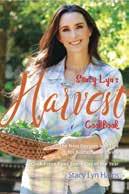
April / May 2023 37
April / May 2023 37
TEN THINGS
10 THINGS FOREST LANDOWNERS SHOULD DO BEFORE THEY THIN THEIR PINES
BY BILLY RYE
According to the Alabama Cooperative Extension System, thinning harvests are cuttings made in immature stands to stimulate the growth of the remaining trees1. Landowners often implement a thinning to improve the economic rate of return from their planted pines, to improve wildlife habitat, to reduce beetle hazard or to improve aesthetics. The goal of any thinning should be to create more growing space for the superior trees while removing trees that are smaller, poorly formed, damaged or dying. Both the Alabama Forestry Commission2 and the Alabama Cooperative
Extension System3 recommend that forest landowners use a professional forester to coordinate all timber harvests including pine thinnings.
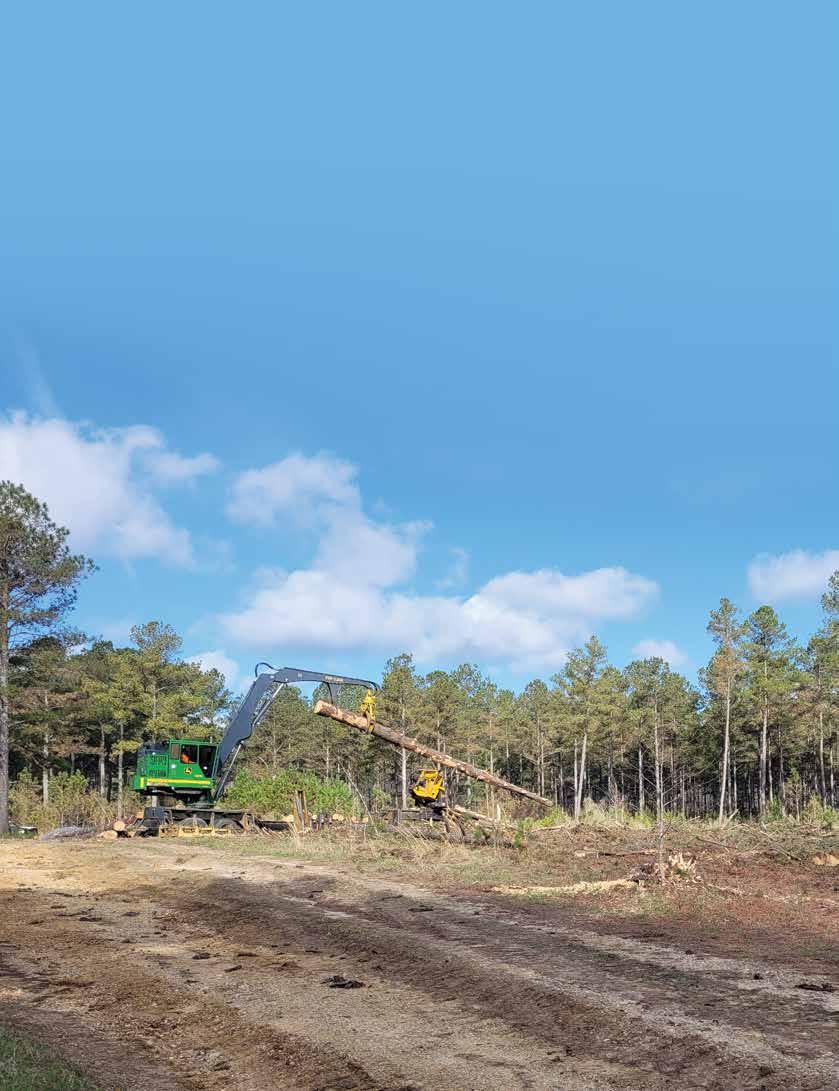
Once a Consulting Forester has been identified, the landowner should consider the following steps prior to initiation of thinning activities:
1) Understand the process.
a. Initial Consultation – The prospective Consulting Forester performs a visual inspection of the area to be thinned to determine the points of access, topog-
FARMING YOUR FOREST
38 Cooperative Farming News
Landowners and loggers should agree on the location of landings prior to harvesting.
raphy, the quality, and the quantity of timber to be removed.
b. Consultation Agreement – A written contract or consultation agreement usually follows the initial consultation should the landowner and the Consulting Forester come to agreement on the terms. This written document specifies the period, terms of service and fees.
c. Negotiations with Timber Buyers – Once an executed Consultation Agreement is received, the Consulting Forester will market the thinning to qualified Timber Buyers in the area and negotiate the terms of the harvesting.
d. Title search - The selected Timber Buyer typically conducts a title search prior to closing to ensure that no challenges will be made to their purchase of the timber. Any liens or other claims against the title will need to be resolved prior to the execution of the timber sale contract. The landowner may need a release from the lienholder if there is a mortgage on the property being harvested.
e. Timber Sale Contract – A written contract with the conditions of the sale will be presented at closing. A good contract will specify:
i. The Seller and Timber Buyer.
ii. Location of the thinning.
iii. Duration of the agreement.
iv. The prices per unit for the various products to be harvested.
v. The methods of payment for the timber harvested.
vi. Specifications of trees to be harvested/ retained.
vii. Provide for the protection of the property, existing roads, and improvements.
viii. The type of insurance required of the Timber Buyer.
ix. Liability clauses.
x. Any penalties for non-compliance.
f. Harvesting – The Consulting Forester typically inspects the harvesting operation on a regular basis to verify that the Timber Buyer’s activities follow the timber sale contract.
g. Payment – Most pine thinning harvests are sold "pay-as-cut." The landowner is typically paid weekly as the timber is harvested. Payment and settlement sheets are usually provided by the Timber Buyer to the consultant and typically cover the period two weeks prior to their receipt. The Consulting Forester will review the ticket summaries, scale tickets, logbooks from the loader and pay-
ments for accuracy. Once the settlements check out, the consultant will mail a copy of the settlement summary, the stumpage check from the Buyer, and the Consultant’s invoice to the landowner.
h. Completion – Upon completion of harvesting, the Consulting Forester will perform a final compliance check and return any performance bond to the buyer if the requirements of the contract have been satisfied. The landowner is released from the timber sale contract at this point and is free to use the land as desired.
2) Do the homework.
At a minimum, landowners should make the following preparations before proceeding with a pine thinning:

a. Define the objectives for the thinning.
b. Make sure there is a consensus among all the owners to proceed with the thinning.
c. Notify the Consulting Forester of any liens on the timber/property.
d. Discuss the harvest with accountants or estate planners to determine the potential impact on the landowner’s estate/tax planning.
e. Clearly define any no-cut or partial-cut areas, as well as any improvements (buildings, fences, roads, etc.) that need to be protected.
f. Notify hunters or others that may use the property of the upcoming thinning.
g. Notify appropriate government agencies if costshare monies were ever received for the stand of
April / May 2023 39
A properly timed and implemented pine thinning would have prevented this mortality and the loss of growth on the best trees.
pine being thinned.
h. Notify the proper authorities if the stand of pine being thinned is enrolled in a Conservation Easement.
i. Secure access for the Timber Buyer, if necessary.
3) Understand the thinning methods available.
a. First Thin. Most foresters prescribe a combination of thinning methods for a first-time thin. Typically, every third or fifth row is removed to permit access for the harvesting equipment. The remaining rows are thinned in a manner where the best trees are retained. By removing more of the best trees, a third-row thinning will generate higher revenues than a fifth-row thin at the time of harvest. However, a fifth-row thinning will yield a higher return on investment by retaining more of the best trees.
b. Second Thin. This thinning typically occurs eight to 10 years after the first thin, depending on the soils present, objectives, markets, etc. Most foresters prescribe a thin where only the smaller, poorly formed or diseased trees are removed. Occasionally, some of the well-formed trees are removed to improve spacing of the best trees.
c. Third Thin. If the pine stand is not clear-cut by this stage, a third thinning may be conducted in a sim-
ilar manner as a Second Thin. However, as more sawmills decrease the maximum size of pines they will accept, landowners may need to clear-cut sooner to avoid having pines that are too large to sell!
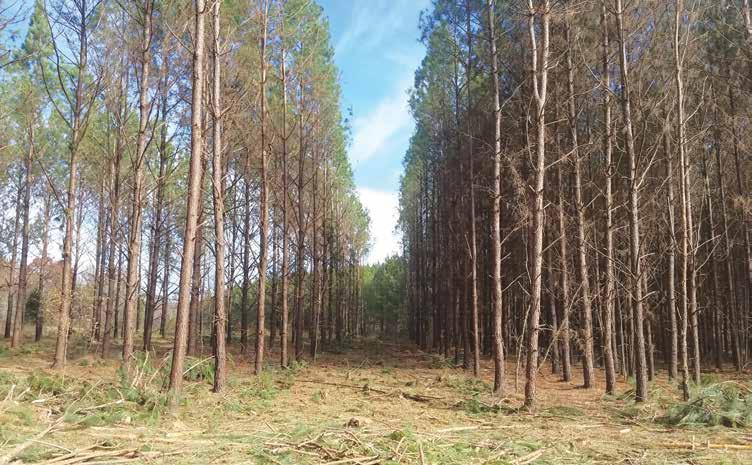
4) Understand the need for a survey.
Landowners should have all property lines surveyed by a licensed surveyor where the harvest area reaches the property boundary. Well-marked boundaries will help avoid claims of "adverse possession," reduce hunting trespass, and reduce timber trespass. Boundaries marked by those other than a licensed surveyor are often more expensive in the long run.
5) Secure access.
This is only a concern if the landowner’s property does not have direct access to a public road. Most Consulting Foresters will require the Timber Buyer to secure his or her own access to the property. However, many landowners have obtained higher prices for their timber by arranging for access with adjoining property owners prior to marketing their timber.
6) Discuss the location of landings.
The timber harvester will need an area to sort
40 Cooperative Farming News
This is an example of a first thin. The trees on the left had every 5th row removed and the remaining rows were thinned to the Consulting Forester’s specifications.
BEFORE HARVESTING AFTER HARVESTING
the trees by product and load them onto trucks for transportation to the mill. These areas are known as landings and are typically one-half to three-quarters of an acre in size. They look like small clear cuts and are normally located near a road (whether existing or created by the logger). Landowners should discuss potential landing locations with their Consulting Forester prior to marketing the timber for sale.
7) Manage expectations of road conditions. Most Consulting Foresters specify in the timber sale contract that the Timber Buyer will leave all roads in at least as good of condition as they were prior to the initiation of harvesting. However, the equipment used to harvest and transport wood is extremely heavy and landowners should be reasonable in their expectations of the restored condition of the roads. ATV trails are usually excluded from the provision to be restored to their prior condition.
8) Provide closing information. After acceptance of an offer and prior to closing, the Timber Buyer may request the name of the landowners as they appear on the deed as well as an IRS W9 form. This will be used to report their purchase of the landowner’s timber to the IRS.

9) Avoid visiting the logging site during active harvesting.
Landowners should not visit the logging site while harvesting equipment is being operated. Should the landowner choose to visit the area being harvested while the equipment is inactive, they should exercise caution as walking and/or driving across logging sites can be hazardous. Unless there is an
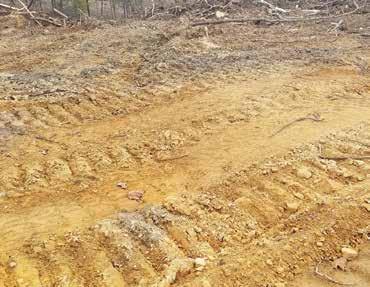
emergency, landowners should not provide harvesting instructions to the logger. If there is a potential non-emergency problem, the landowner should contact the Consulting Forester, who will work with the Timber Buyer’s agent, to correct the situation in accordance with the timber sale contract.
10) Understand mitigation of problems. Most Consulting Foresters will make every effort to ensure that the marketing, harvesting and sale closure proceed as smoothly as possible. Since there are many variables that are beyond the control of the Consulting Forester, some disruptions and inconveniences to the process should be expected. By preparing a timber sale contract that is written from the landowner’s perspective, securing a performance bond, and by monitoring harvesting activities, the forestry consultant will greatly increase the likelihood that the timber sale process will be a success.
References
1 Thinning Pine Stands for Top Returns. Alabama Cooperative Extension Service. ANR-396, New August 1983. Frank A. Roth II, former forester, Woodland Management Demonstrations.
2 Selling Your Timber. Alabama Forestry Commission.
3 Forestry: When do I need a consulting forester? When planning a timber harvest. Alabama Cooperative Extension System website: www. aces.edu/natural-resources/ forestry/foresters/whendoineed.php
April / May 2023 41
Landowners should have reasonable expectations on the restoration of their roads This road functions the same even though it looks different than it did prior to harvesting.
NEIGHBORS
BY WALT MERRELL
Our youngest daughter, Banks, is 13. Blondehaired and blue-eyed, she is the epitome of the all-American girl. Her smile is infectious and seems to rival the morning sun in its radiance. Of course, I am a little biased. She has a twinkle, though… one that is inescapable. Not inescapable in the sense that she is irresistible… rather, her twinkle can turn your worst mood into something, well… at least mildly tolerable. But most times, her twinkle reminds you to smile. And that is enough. So, it’s not surprising that she finds joy in spreading joy. Joy, that is… of the floral sort.
Farmers Markets are a time-honored tradition and a staple in many Southern towns. Andalusia is no different. Every Wednesday afternoon and Saturday morning in the summer, farmers, hobbyists, crafters, and gardeners from all over the county would spread their wares out across tables and blankets that covered the Court Square. Our favorite vendor, the McKathan boys —probably no older than Banks—could grow the best sweet corn. Huge golden kernels that popped with fresh sweet juicy flavor… it was like no other. “Must be something in the dirt,” I remarked to Banks on one

SHEPHERDING OUTDOORS
occasion. She just rolled her eyes at my explanation as to why their corn was so much better than my own. Their dad is an old friend, and their mom was usually with them at the market. She’d sit off to the side and let the boys handle their business. And, like a good neighbor, we’d buy their wares.
Hannah usually took the girls to the market. They’d buy sweet treats from Mrs. Henderson, who always made some of the best homemade desserts you could find. Occasionally, Hannah would come home with a weeping hibiscus, or some knock out ginger lily that she bought from Ms. Marie Williams… or some other green thing that she probably made up a name for… like I would know the difference. They always came back with big red tomatoes from the Reycrafts and a bag of fresh produce from the other vendors. But more than anything else, they always came back talking about our neighbors, their troubles and their triumphs, and the joys of life.
And it never failed that I’d be somewhere in town, and someone would remark, “I saw Banks and Hannah at the Farmer’s Market this week. She sure is sweet!” I’d grin, not knowing which “she” they were referring to… and certainly not wanting to acknowledge that, perhaps, one of them was not sweet! But usually, they meant Banks… and “she” is. She learned it from her Momma. And her neighbors.
“Daddy, I want to plant flowers to sell at the Farmer’s Market,” she declared, at the ripe old age of ten.
“Well, I think that sounds pretty good, but we will have to talk to Momma about that first,” I responded,
careful not to discourage her, but surely not with any commitment… for fear that Hannah would not approve. But, she approved, and so it was… that Banks’ budding enterprise began. Soon enough, it was time to plant.
Hannah’s father, George Gantt, had planted wildflowers for years. I’ll never forget the time he caught two folks from Wisconsin in the flower bed at The Cottle House Bed and Breakfast picking all his wildflowers. The expression, “Madder than a wet settin’ hen” comes to mind. He might have been more frustrated with me than he was those flower pickers… I’m afraid I wasn’t always the best garden hand. Still though, he always found the patience and the time through the years to teach me as he went. “You mix the seed in with grits…” he said. “Gives the spreader something bigger to fling than just those tiny Zinnia seeds.” He was always neighborly about it… quick to overlook my almost non-existent understanding of anything “green.”
And Hannah and I taught Banks those same lessons… passing the lessons down and preserving them for the future.
The seed was dark black against the creamy contrast of the dry grits. Banks twirled the handle of the hand spreader and grinned. The blades whirred at her belly as the grit grains blew in the wind. She squinted her eyes to protect them, but she never hinted at stopping. Her pace quickened as she glanced down at the hopper. “I’m not gonna have enough,” she called out, coughing up a few dry grits as she finished. And she was right. “That last row will just look funny,” Hannah commented. “But it will be fine.” And it was.
A few weeks went by, and neighbors from around the Straughn community would stop and inquire.
“What you gonna do with all those flowers?”
“Make sure you put them straight into water when you cut them!”
“You gotta get in there and pull those weeds.”
All good, neighborly concerns… and a few pieces of good advice, too. And Banks listened… and worked and kept her garden up.
After six weeks or so, her efforts had really shown themselves worthy. Zinnia stalks stood 14 or 16 inches tall, and they danced in the late spring breezes like sea oats blowing in the Gulf Shores sea breeze. Banks waded through the waist-high green leaves holding the buds between her fingertips… inspecting them and giving them her approval. Hannah supervised the inspection process… I was simply there for moral support… They’d prune the "deadwood" and pull weeds as they went. The wind flicked Banks’ ponytail, and her blue eyes bounced across the waving sea of green as she slung bushels of weeds to the outside edge of the bed. “There are some more, Daddy!” she’d holler through the wind. I’d mosey over and scoop up the dead invad-

April / May 2023 43
ers, banishing them to the bed of the truck, and, soon enough, the burn pile.
A few weeks passed, and the days grew longer. School was out but work never stops. I left an hour or so early that Friday… the next day would be the first day of the summer season for the Farmers Market, and it would be Banks’ first day selling her wares. Hannah had already helped her gather a money box and some tablecloths to cover our old rickety fold-up table. A few camping chairs would be nice to rest tired legs through the heat of the day, and the vases and jars they had assembled looked like soldiers lined up to charge the western front. From mason to peanut butter, there was nearly one of every type. Some blue, some clear, some huge, and others more normal in size.
“How many flowers should we cut?” Banks asked Hannah. Thankful she didn’t ask me, Hannah said, “I’d cut ten dozen on your first day, and just see how things go.” So, we did… carefully selecting only those flowers that were in full bloom, to avoid over ripening, if you will. Anna and Heidi (The Martin Homestead on FB) passed by, and seeing us in the patch, they turned and came back. “I’ll buy a dozen from you right now, Banks!” Her eyes grew wider and brighter as Heidi handed her eight dollars. “And don’t worry… we will buy some from you every week!” And they did… because they, too, are neighborly.
Banks’ first few years at the farmers market went great… Hannah and I alternated “assistant” duties and Banks sold out every weekend. In fact, she usually sold all of her flowers within just a few hours. She made great friends and grew fond of her “regulars” too. She became a “staple”… and she was only 10.
This past year was her third year at the market. On opening day Banks and I arrived on the Court Square around 6:45. A few vendors were already setting up, and our sweet friend and neighbor, Allison Gordon –the manager over the farmers market – was eager to
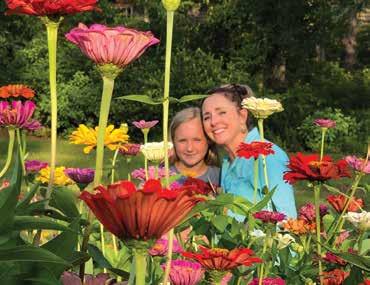
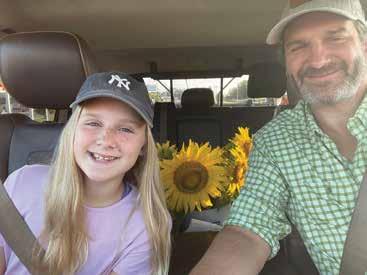
welcome Banks as a new vendor. We set up her table and carefully placed her hand-painted signs and bouquets, and she was all set.
“I love you, sugar.” I offered, holding her hand. “I love you too, Daddy,” came her quick response.
“Mrs. Allison is here. There is Mrs. McKathan, too. If you need anything you just ask them and they will take care of you.” Banks confidently nodded in affirmation, and with that… I turned and left my daughter on the square… with our neighbors. An hour and a half later, my Bible study concluded, I returned to find her sold out and perusing the other vendor's booths. Banks was always good to patronize the other booths… it was her way of being neighborly… of saying ‘thank you.’
Some folks from time to time ask, “Do you think it’s a good idea to leave her by herself?” And granted, as the District Attorney, I know better than most what a twisted world we live in. But Hannah and I pledged long ago to "train them up in the way they should go," and the path to maturity and adulthood can’t be paved with fear and lack of responsibility. On the contrary, Banks was surrounded by good neighbors. We knew they would tend to her every need, and she would learn much about the way she should go…
That is the way we all should go, isn’t it? To love our neighbor? Maybe the world would be a little bit better if we’d all love a little more and fret a little less. And as Hannah says, “A little love makes for a good garden too.”
Walt Merrell writes about life, family and faith. An avid hunter and outdoorsman, he enjoys time “in the woods or on the water” with his wife Hannah, and their three girls, Bay, Cape and Banks. They also manage an outdoors-based ministry called Shepherding Outdoors. Follow their adventures on Facebook, Instagram and YouTube at Shepherding Outdoors. You can email him at shepherdingoutdoors@gmail.com.
44 Cooperative Farming News

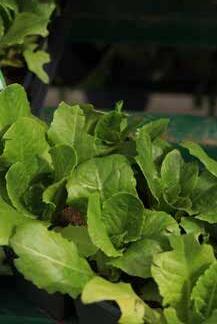
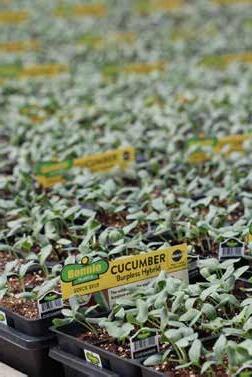
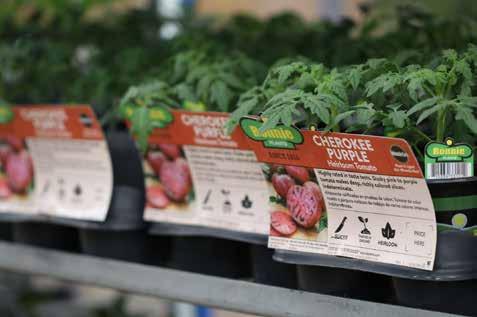
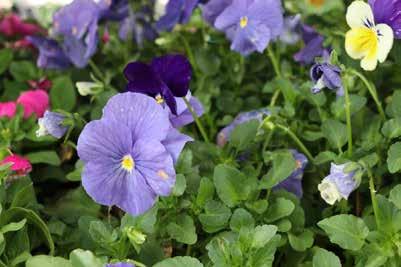
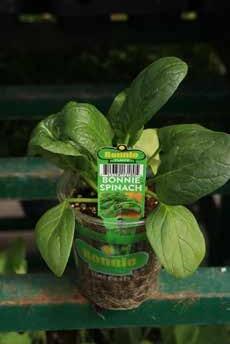

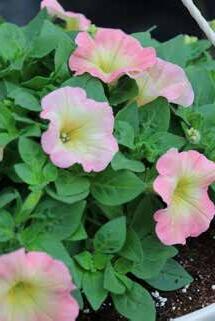
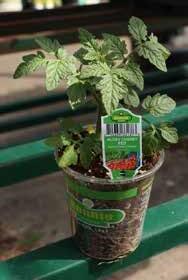
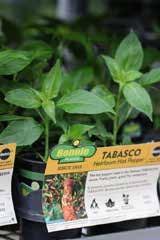
ASSORTED 4.5” VEGGIES & HERBS 6 PACK VEGGIES & FLOWERS AND 5” FLOWERS www.alafarm.com www.bonnieplants.com At participating Co-op stores. Selections may vary.
BY JESSIE SHOOK
For a decade, Alabama Farmers Cooperative (AFC) President and Chief Executive Officer, Rivers Myres, has delivered the President’s Report at the Annual Membership Meeting. That’s 10 years of changes and challenges witnessed and presented to membership. While the challenges of 2022 ring true to history, they also present opportunity for growth. “The lessons we learned from AFC’s first 85 years remain true today and will help us navigate the future,” Myres said.

The past year brought many unexpected challenges and put AFC in uncharted waters – record-high inflation, supply chain disruptions, transportation issues, labor challenges, a mental health crisis, a war in Ukraine and an overall shift in the workforce as we once knew it. “What I know is that we will rise to the occasion,” Myres proclaimed. “We will make hard decisions. We will not take the easy road because what is easy is rarely worthwhile. We will be true to AFC’s values, to each other and ourselves and overcome any adversity we face.”
in the global community, AFC also rose to meet the needs within local communities. Myres spotlighted how AFC and member Co-ops gave back in 2022. “The AFC office participated in the Liz Hurley Ribbon Run for breast cancer awareness and raised over $10,000,” he said. “After a devastating tornado hit Selma, Central Alabama Farmers Cooperative stepped up to help by sharing their facilities and resources with the community and partnering with SouthFresh to serve over 750 hot meals.”
Additionally, AFC was honored to present a donation of $10,000 to Big Oak Ranch on behalf of its members and CoBank. AFC supports and believes in its mission of giving children a place to belong.
We will make hard decisions. We will not take the easy road because what is easy is rarely worthwhile. We will be true to AFC’s values, to each other and ourselves and overcome any adversity we face.
– RIVERS MYRES
These were just a few of the many ways AFC and the member Co-ops have given back.
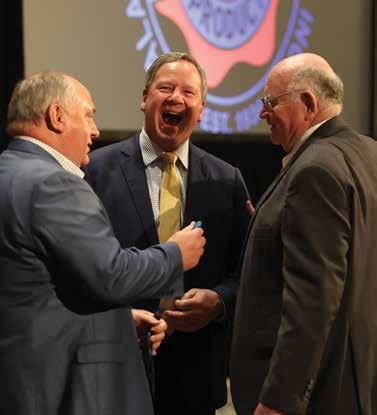
“It makes me proud to see the difference we are making in the lives of others,” Myres added.
While rising to meet the challenges faced
As strategic priorities were identified by AFC’s Board of Directors, a main goal was to invest in the growth and development of AFC employees. This led to the creation of the Authentic Leadership Program. The goal of this program is to give employees
46 Cooperative Farming News
86th Annual
Meeting Farming
Membership
the opportunity to grow, develop and be the best leader they can be. “Making a difference in people’s lives is our legacy,” Myres explained. “Although we worked hard and recorded a profit this year, no one will remember AFC’s net income in 2022. However, years down the road, we will remember the life lessons about leadership we learned along the way.”
AFC is reaping the benefits of its investment in people. Recently awarded the Great Place To Work Certification™, AFC is looking toward the future and continues to make positive changes in leadership. After four years as AFC’s Corporate Controller, Brad
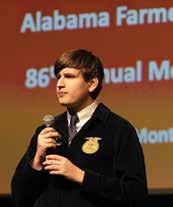

Benson was promoted to Chief Financial Officer. Thomas Hallin moved to the position of President of Cooperative Financial Services, as he works to grow and improve the services offered to members.

After 42 years of dedicated service to AFC, Tina Johnson retired as Chief Human Resource Officer, paving the way for Taylor McRae, who was promoted from AFC’s Internal Auditor to Human Resource Manager. These transitions were seamless and are helping continue to make AFC the best it can be.
In 2022, Myres reported that AFC distributed $3.4 million to membership in patronage and equity retirement. He also proudly presented the President’s Award to each participating member. “I am so proud of the leadership of our member Co-ops,” he said. “For the first time in the history of AFC, each participating member had positive local earnings and achieved the President’s Award. That is truly an outstanding accomplishment.”

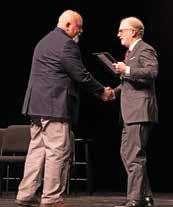
Chief Financial Officer Brad Benson gave his inaugural financial report to membership detailing the challenges faced in 2022. “Just consider the difficulties you may have had in obtaining inventory, supplies and even workers,” Benson explained. “And I’m sure that you all found things to be more expensive than they used to be.”
Despite the challenges that continue to strain every industry, AFC remains on top. “AFC was built for this,” Benson said. “By no means should we feel invincible, but we can now see … the strategic moves made in recent years, specifically within our Bonnie,

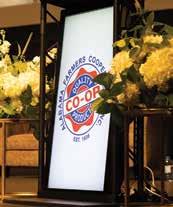

April / May 2023 47
Chief Financial Officer Brad Benson delivers his first financial report.
(Photo Credit: Studio Panache)
GreenPoint, Faithway and AFC Feed joint ventures … all have contributed to the financial position that’s been able to endure these seemingly relentless headwinds.”


AFC paid down $31 million of debt while maintaining equity at over $390 million. Additionally, it has returned over $105 million to the membership over the last 10 years. “These are the results of what AFC was able to accomplish, even in the midst of challenging times,” Benson said. “We should be thankful for the daily efforts of the nearly 8,000 employees across our network of companies and the leadership that encourages, directs and supports us while doing everything they can to maintain a commitment to profitability.”
At the conclusion of the business meeting, AFC’s
Board Chairman Ben Haynes spoke of the structure AFC has built with its ventures to be successful. “These ventures have helped to diversify AFC’s business and are building blocks of the future,” Haynes stated. “Each of these joint ventures provides a value at scale that we could not otherwise achieve on our own.”
In closing, Haynes described how teamwork is important in business, but AFC is more than that, it’s a family. With a family of eight, Haynes joked, “It is one large family, and believe me, I know about large families. At my house, occasionally we get in each other’s way, and sometimes someone feels like they’re not getting enough attention, but it is astonishing what we can accomplish when we pull together!”

48 Cooperative Farming News
For the first time in AFC history, each participating member Co-op earned the President’s Award. (Photo Credit: Studio Panache)
AFC’s Board Chairman, Ben Haynes. (Photo Credit: Studio Panache)
AFC presented a $10,000 donation to Big Oak Ranch on behalf of AFC's Cooperative Members and CoBank. (Photo Credit: Studio Panache)
TIM WOOD 86TH ANNUAL MEETING
MANAGER OF THE YEAR:
BY JESSIE SHOOK
The 2022 E.P. Garrett Manager of the Year, Tim Wood, is no stranger in the Cooperative System. With a laugh that can be heard across the room and a smile to match, he is a friend to everyone and someone you can always count on.

Wood began his career as a co-op manager 39 years ago. Through connections, he began as a district sales manager before being approached by the board to change positions. “Central Alabama Farmers Co-op was needing a manager, we came up with a mutual agreement and the rest is history,” Wood said.

When asked why he has stuck around for so long, Wood said he just enjoys what he is doing. “It’s the next best thing to farming, you’re dealing in agriculture every day – if you like what you do, then you better continue doing it.”
Wood is a two-time award winner, earning his first E.P. Garrett Manager of the Year award in 1993 – 30 years ago. He said that winning the award this year never even crossed his mind. “When Rivers made the comment ‘a stranger is someone he just hasn’t met
yet,’ I thought ‘Oh Lord, that’s me,’ and from then on everything was a blur. I don’t even know what was said, but one thing I bet, when Rivers, Al and Andrew saw the outcome, I bet they were wondering if someone hacked their computer system,” Wood joked. “Thinking, ‘I know Wood didn’t win this thing!’”
As Wood accepted his award, he was greeted by his wife, Susan, and their two daughters Blaire and Elizabeth. Upon seeing his daughters, he became emotional. “Those are my girls, we’re extremely close and it meant a lot for them to be there.”
Wood praised the support of Susan for the past 39 years, saying, “She’s heard all the late-night phone calls from farmers. She realizes and understands that being a co-op manager is not an 8 to 5 job – it’s a life commitment.”
Although Wood has a presence that catches the attention of the room, he isn’t big on being in the spotlight. “I am more excited for the company than I am myself,” Wood explained. “My days in the limelight have passed. Let’s just get things done like it’s
April / May 2023 49
Photo Credit: Studio Panache
supposed to be done.”
Wood has been blessed with a dream team of Coop support that is more like family and he credits his managers and employees for the success of Central Alabama Farmers Cooperative. “No question about it, the employees we have are unmatched. The location managers, Thomas Reeves, Bryan Monk and Tom Eunice, have done an outstanding job keeping all locations profitable,” he said. “I told them when I got back from receiving this award, ‘I’m just riding on this boat, you’re the ones doing the rowing like crazy.’ They’re putting forth an awful lot of effort.”
AFC and AFC’s Board of Directors have also been a crucial element to the accomplishments of his Coop. “We couldn’t ask for a better Board of Directors,” Wood said. “Their number one concern is making sure the members are getting what they’re asking for and what they need. The retirement program of equity has helped an awful lot of Co-ops such as ours to financially become sound again.”
Two words come to mind when describing Tim Wood and Central Alabama Farmers Cooperative – community and commitment. Working anywhere for 39 years is a commitment, and for Wood, it’s a two-sided one, both from an employee and employer perspective. “When you see where we were in 1985 as far as financial position and improvements that have been made in our current property, you can’t help

but feel proud of what our team has accomplished,” Wood said. “Central Alabama Farmers Cooperative is part of our community. We employ local people, our Board of Directors are local people, we give back our profits to local people and above all, we support and contribute back to our local community. That’s what a cooperative should be, and I am proud to say, Central Alabama Farmers Cooperative takes it to the next level. That’s what I have enjoyed about my tenure with the Co-op, not only helping our customers in the field of agriculture but helping make our community a better place to live and work.”
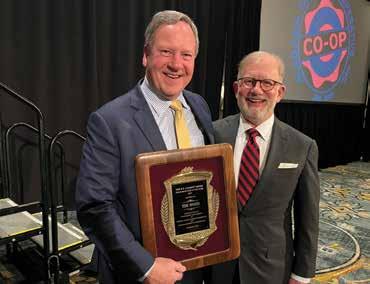
50 Cooperative Farming News
(L to R) Wood's daughter Elizabeth, Tim Wood, Wood's daughter Blaire and his wife Susan. (Photo Credit: Studio Panache)
Tim Wood and AFC President and CEO Rivers Myres.
(Photo Credit: Studio Panache)
86TH ANNUAL MEETING
KEYNOTE SPEAKER:
BRAXTEN NIELSEN
WE WERE BORN TO SUCCEED
BY JESSIE SHOOK
There wasn’t a dry eye in the room after Keynote Speaker Braxten Nielsen delivered an inspiring message at the 86th Annual Membership Meeting. Nielsen’s is a story of perseverance and resilience after breaking his back in a rodeo accident. From this experience, he learned three valuable life lessons – surround yourself with greatness, have a positive attitude and work hard.

Growing up in Roosevelt, Utah, Nielsen spent a lot of time camping, hunting and ranching with his family. Sports have always been a huge part of his life. After spending the majority of his youth playing football, baseball, basketball, soccer and wrestling, he found his passion in bareback riding, a rodeo sport. While he was on a hunting trip, he met Kaycee Feild, whom Nielsen described as the “Michael Jordan of Rodeo.” After Feild suggested Nielsen try rodeo, Nielsen thought, “If this is going to hurt me or get me in trouble, let’s see how far I can go.”
SURROUND YOURSELF WITH GREATNESS
Feild became a mentor to Nielsen, teaching him valuable life lessons. “On my first ride, the horse went down, and I was scared to death, I didn’t want to get back on,” Nielsen said.
“Kaycee could tell, came over and shouted, ‘You got this Brax’ and opened the gate on me.” The rest is history. He participated in rodeo teams in college, eventually taking on the Pro Rodeo Circuit where he competed against his mentor. “A mentor sees the

potential that we can’t see in ourselves,” Nielsen said. “Fear is the one thing that holds us back from reaching our true potential; we need someone to open the gate on us.”
Nielsen began to surround himself with greatness. He found a mentor who believed in him. He began traveling and competing, surrounding himself with more greatness. “I felt like I was superman, I felt like there wasn’t a horse that could buck me off, there wasn’t a thing that could knock me down, work was paying off and life was going good,” Nielsen said.
Life took a devastating turn in 2017. Nielsen was the first cowboy of the night. As he climbed on the back of the 1200-pound bronc, he was ready to set the stage. He was ready to make his name known. In a blink of an eye, as Nielsen was about to nod his head, the horse sat down in the chute, lunged backward hitting him in the chest with his rigging. “It was like I heard a shotgun go off in my ears,” Nielsen explained. “All of the sudden the horse stood up, left the chute and my legs were numb – it happened so fast.”
Any cowboy is taught to get up and get right back on after you fall off … Nielsen tried to get up, but couldn’t. He started waving to his friend, Joe Frost, who came to his side and tried to help him. “The medical team took off my chaps, started flicking my toes and I couldn’t feel anything,” Nielsen added. “Joe helped me to the ambulance, rode with me to the hospital and withdrew from the rodeo.”
Nielsen explained how Joe is the kind of friend he aspires to be. That we should all aspire to be.
April / May 2023 51
Although Joe was supposed to compete at the rodeo himself, he stayed by Nielsen’s side and let him know he was there for him. “When you see someone that’s down and out in your surroundings, in your family or community, someone that’s struggling with life – get on their level, try to understand what they are going through. You may not be able to relate but you can try to understand,” Nielsen explained. “Like Joe got on my level – be that kind of mentor, be that kind of friend, try to get down and be on their level.”

POSITIVE ATTITUDE
Nielsen endured a five-and-a-half-hour surgery to repair his L1 and T12 vertebrae in his back and his broken sternum as well as untwist his spinal cord. As he was waking up after surgery, he could hear the surgeon talking to his parents. He could hear his mother cry and his father’s disbelief. “I heard the doctor tell my parents that I had less than a 5% chance to walk,” Nielsen said. “My mom said that she thought my dad was crazy because he immediately started smiling, but that’s my dad’s mindset, he sees the positive – we still have a chance.”

As Nielsen woke up in a panic, with no feeling in his legs, his dad started squeezing his arms and asked, “Can you feel this?” Looking into his eyes, “Can you see me?” He put his hand on Nielsen’s chest and said, “Can you feel that?” As he felt his heart beating, he understood what his dad was trying to do – focus on the positive.
Nielsen’s family had a saying in their household –be the best. His dad stood by this saying throughout his experience. “Life is going to be different with the circumstance you’ve been dealt; it’s different but you can still be the best you can be,” Nielsen explained. “With a 5% chance to walk again, it gave me a positive perspective right out of the gate. Positive little things creating a positive big picture.”
When it came time for Nielsen to begin physical therapy, he knew he needed to surround himself with
more greatness and a therapist that had a positive attitude. Someone who believed in him as much as he believed in himself. “The therapist leaned down to help me get in the wheelchair, I grabbed him by his collar and told him, ‘They said I have a 5% chance, I’m something unique, I’m something amazing, I’ll work as hard as you want me to – believe in me or leave the room and bring in the next therapist that will believe in me.’”
WORK HARD
While in physical therapy, Nielsen was asked to curl a 1-pound bar. This 1-pound bar made him aware of the severity of his injuries when he could not curl it. He wanted to give up, but he remembered that in your given situation it’s 10% circumstance and 90% attitude. He knew it would take time and hard work to reach his goal and vision of walking out of the hospital. “If you just make a 1% effort every day, a year from today you will grow 365 times better,” Nielsen explained. “By the small and simple efforts, great things come to pass.”
With much perseverance and hard work Nielsen gained muscles that helped him learn how to walk again. However, he faced yet another challenge –safety regulations required Nielsen to complete a 50-meter walk on his own in order to walk out of the hospital. With his parents, physical therapist and other patients cheering him on, Nielsen succeeded.
Less than two months after Nielsen’s tragic accident, he was able to walk out of the hospital – on his own.

This experience taught Nielsen that when you set goals, be resilient and keep a positive attitude, you can accomplish anything. “Life will leave a scar on you, some you can see, some you can’t,” Nielsen said. “But what it’s doing is allowing you to leave your mark on the world.”
For more from Braxten Nielsen you can visit his website www.wewereborntosucceed.weebly.com or follow him on Instagram @braxten.nielsen.
52 Cooperative Farming News
To Dr. John Fulton, coming back to Alabama to deliver his speech on agricultural technology at the 86th Annual Membership Meeting was just like coming home. “I get a little emotional when I get an opportunity to come back to Alabama,” Fulton said. “I left Alabama in 2014 and I made a commitment that I may be leaving Alabama but I’m still going to serve Alabama agriculture.”

Fulton, Professor of Food, Agriculture and Biological Engineering at Ohio State University, specializes in developing technology and automated components related to application to place and meet site-specific crop and soil needs more accurately. His program also focuses on translational data analysis developing telemetry solutions, and digital tools to improve farm business and in-season decisions.
Fulton’s main message to members and farmers is to be aware of what’s happening in the ag space around technology. “This perception that Ohio farmers are ahead is not true,” Fulton explained. “Folks here in Alabama, farmers and retailers are right where they need to be, you just need to be aware of the opportunities and what you can capitalize on.”
Digital agriculture is described as the seamless incorporation of digital technologies into crop and livestock management. The use of these tools has tremendous benefits to the farmer such as the
86TH ANNUAL MEETING
BREAKFAST SPEAKER:
DR. JOHN FULTON
THE CONNECTED FARM –IT'S COMING
 BY JESSIE SHOOK
BY JESSIE SHOOK
opportunity to increase production, save long-term costs and eliminate risk. “You’re a part of this idea that we are digitizing agriculture,” Fulton added. “97% of the agricultural community in North America is connected through smartphones today – people are connected to the internet, that’s a big part of this picture.”
Most farm equipment today, such as tractors, sprayers and harvesters, comes connected to the internet which in turn enables companies to incorporate more technology. Field sensors are being developed to track weather and soil nutrient levels. “We’re not quite there yet in terms of connecting the field, but the large agriculture community views connecting the farm as a way of the future,” Fulton explained. “My question to you is where do you fit in this? And how do you take advantage of this now that you have seen this is going on around you?”
Some features that have become standard on tractors and equipment include guidance technology, yield monitors, rate controllers, planter technology, auto-section/auto-row and telematics/tireless. “This type of technology may not fit each and every operation or each operation might find different value to it, but the technology is there and ready to be utilized,” Fulton said.
The cloud has also taken a huge step into preci-
April / May 2023 53
sion agriculture. “We all of the sudden have the cloud that is really influencing what is happening in ag and the sharing between cloud platforms today,” Fulton added. Other technologies such as remote-sensed imagery and drones are also becoming popular. “I get a phone call every day about drone technology; it has taken off,” he said.
Drones are taking a huge stance in agriculture, providing the ability to scout crops, spray and deliver packages directly to the farm. Drone imagery can scout crops showing insects, disease, nutrient deficiency, and weeds. “It’s soon becoming an influencer in terms of what we do, and how we collect and scout information out in the field,” Fulton said. “Drone spraying is one of the hottest topics in the U.S. This technology is readily available with drones providing up to 18-gallon tanks.”
Precision ag services that are readily available to farmers include precision soil sampling, creating prescriptions, year-end field summaries and maps and benchmarking. “Recently benchmarking became more available and popular,” Fulton said. “Our farmers are part of group precision ag service providers that look at benchmarking. They look at what it costs to grow a bushel; it’s giving insights on the possibility to improve their operation and where.”
Something else important and close to fruition is farmer autonomy. “Farmers can input prescriptions allowing an autonomous tractor to operate,” Fulton added. “Along with in-cab displays that can give feedback to the operator and collect data.”
Another, more entertaining technology that is around today is called “high-speed planting.” “We are seeing more and more high-speed planting in my neck of the woods,” Fulton said. “These planters are going
7-8 mph on average, some even reaching 17 mph.”
On-the-go field sensors have the capability to ensure the preferred target depth in a field. “The sensor tells our growers whether they are actually placing it in an environment that is conducive to their crop,” Fulton explained.
Also available: new modern broadcast application technology such as dual bin applicators. These applicators can independently administer two products based on the prescription.
“The idea of these is that our growers want to go put light applications of two products on a field and do that every year before corn and soybeans as far as a feeding-the-crop scenario,” explained Fulton. Artificial intelligence is here and on equipment whether you recognize it or not, in combines and planters. This technology ranges from machinery with sensors, to drone application and digital tools. “John Deere came out with See & Spray™ technology that enables a sprayer to identify and only spray the weed,” Fulton said. “Studies have shown there is potential for 97% savings on post-planting application of herbicides.”
A different model to be aware of is Farming as a Service (FaaS). Sabanto Ag is a company farmers can call to plant their crop, specifically soybeans. More crops and companies like Sabanto will exist in the future.
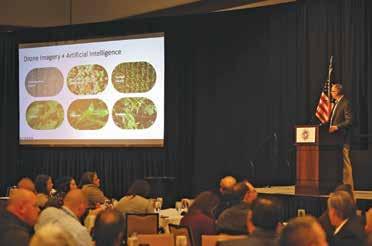
In closing, Fulton expressed the importance of being prepared by having the right mechanical equipment in place. He explained, “The thing to think of as AFC and as farmers is, ‘Do I have the proper machinery in place that if I ever want to go to the autonomous level, would I be able to turn the switch on now?’” This is challenging us all to prepare for the future of farming.

54 Cooperative Farming News
“97% of the agricultural community in North America is connected through smartphones today – people are connected to the internet, that’s a big part of this picture.”
– Dr. John Fulton
Bill Sanders’ 34-year tenure as an active member on Alabama Farmers Cooperative Board of Directors concluded at AFC’s 86th Annual Membership Meeting in Montgomery in February.



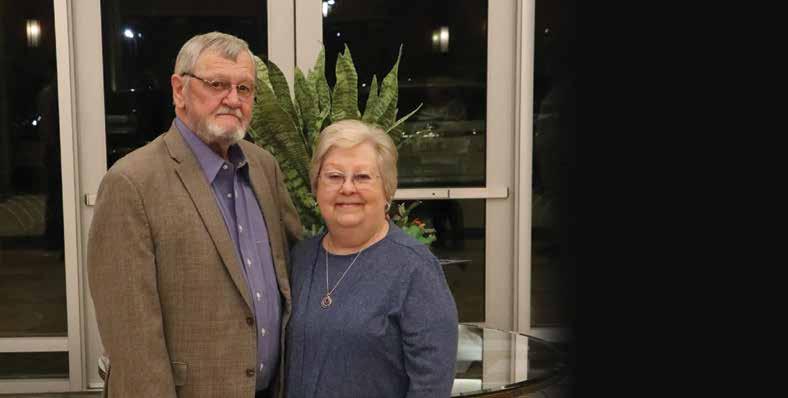
Sanders was surrounded by his family, friends and AFC staff at a dinner hosted in his honor the evening before the Annual Meeting. AFC President and CEO Rivers Myres highlighted a few milestone moments of Sanders’ service during the dinner and thanked him for his service and dedication to AFC. “I don’t know anyone who loves AFC more than Bill Sanders,” Myres said.
Fellow staff and friends shared stories and extended their gratitude for his contributions to AFC over the years, not forgetting to recognize Mrs. Ann for her hospitality.
AFC Board Chairman Ben Haynes spoke of this hospitality and how the Sanders showed him and his wife so much kindness. “When I joined the Board in 2014, Bill and Ann made sure Whitney and I felt welcome, and we instantly became a part of the family,” Haynes said. “Looking back on AFC’s 86 years,
86TH ANNUAL MEETING

RETIREMENT BANQUET: BILL SANDERS
I believe you’d be hard pressed to find a director who has served with more humility, honor and loyalty to the co-op than Bill Sanders.”
Lawrence Smith, Honorary Director of Alabama Farmers Cooperative, described Sanders as a businessman, faithful Christian and a friend to many. His agriculture experience has ranged from row crop farming to raising cattle to managing poultry houses. “It takes a lot of hard work and skill to make a successful living with many jobs to do and Bill has done a good job with all that he has done,” he said.
At the conclusion of the dinner, Sanders left the group with four words that reinforced the driving force behind every decision the Board makes – It ain’t about you! “To me, that sums up the example of servant leadership that Bill leaves us to follow,” Haynes added.
Sanders received a Resolution of Appreciation to be filed in AFC’s permanent records. Although he has retired as an active director, Sanders will continue to serve on his local Co-op board at Pike County Cooperative and as an Honorary Director at AFC for years to come.
April / May 2023 55
86TH ANNUAL MEETING
GUEST PROGRAM: THE GRAZER CO.


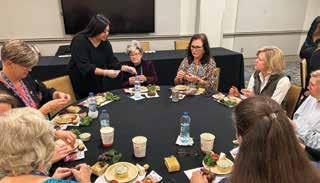

What do cattle and AFC's 86th Annual Membership Meetings guest program have in common? Grazing! Guests enjoyed learning how to make the perfect charcuterie board for friends and family to “graze” on. This program was taught by the grazer co., who specializes in creating beautiful, highly styled grazing boxes, boards and tables.
Nitda Louangkhoth grew up watching her mother
create small dishes for her family to graze on. This inspired Louangkhoth to create beautiful arrangements that almost look too good to eat! She founded the grazer co. in 2020 after having success offering her small grazer boxes to friends and family. Louangkhoth opened her first brick-andmortar store at the Bodega in Midtown, Auburn. When orders grew, the business did too and she opened her second and main location in the heart of downtown Opelika. Her eye-catching charcuterie boards have a selection of cheeses and cured meats, with bread, dips, fruits and more!
86TH ANNUAL MEETING

ENTERTAINMENT: MICHAEL JAY HUGHES
Michael Jay Hughes had guests out of their seats and dancing at AFC’s 86th Annual Membership Meeting. This very special entertainer is an Alabama native and the son of Honorary Director, Bill Sanders. He grew up on a farm outside of Goshen, Alabama, where he started playing the guitar at the age of 13. He now records his music in the famous Studio 19 in Nashville.
Hughes is a country artist who finds inspiration from his faith, family and real life, which translates through his relatable songs. You can find him performing his music around the Montgomery tri-county area, Troy, Ozark, Dothan, Alabama area and South Georgia.

56 Cooperative Farming News




April / May 2023 57 Wireless is more Gallagher Wireless Loadbars eliminate that risk. You want your system to be reliable — ready when you’re ready. With Gallagher Wireless Loadbars, you can send weights straight to your TW Weigh Scale or Animal Performance PLUS App using Bluetooth technology. At Gallagher, we’re always looking for ways to keep you connected so you can do more. * Based on Loadbars sent back to the Gallagher repair center in New Zealand and Australia The Next Generation of Animal ManagementTM 1.800.531.5908 | am.gallagher.com Over of loadbar failures are caused by damage to the cables. Scan the QR Code to learn more.
BY CAROLYN DRINKARD
ON THE GARDEN AND
Valerie and Tommy Davis live in Grove Hill, Alabama. A few years ago, they decided to landscape their backyard. Both enjoyed yard work, but Tommy, like his father, especially loved to mow grass. While working on their project, Valerie and Tommy were amazed to discover that they had to travel to Mobile to find the things they needed. Not only was this inconvenient, but
it was also expensive, as a round trip from their home to Mobile was almost 180 miles.
This experience led Valerie and Tommy to consider opening their own garden center. Several years before, they had purchased a 70-year-old Church of Christ building, which had been vacant for many years. Up to now, the Davises had not done anything with the property, but their landscaping frustrations suddenly made them look at the old church with new eyes.
The biggest concern for developing the property was its location. Highway 43 bypasses the town of Grove Hill, so Valerie and Tommy worried about traffic flow to their new business. Nevertheless, they

58 Cooperative Farming News
Valerie and Tommy Davis transformed a 70-yearold church building into a modern, one-of-a-kind garden and market center. On the Hill Garden and Market (OTH) opened on March 5, 2022, in Grove Hill, Alabama.
HILL MARKET
prayed about their dream and with a “build it and they will come attitude,” they forged ahead. Their goal was to turn the beautiful old church into a one-of-a-kind market and garden center, one that customers would have to see to believe.
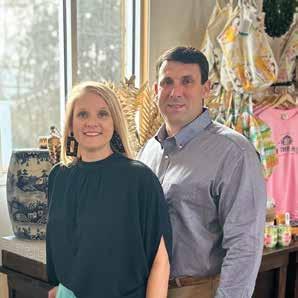
Since the old church building sat on the highest point in Grove Hill, Valerie and Tommy chose the name, “On the Hill Garden and Market” (OTH). OTH also shared a driveway with Gates Motor Service, the longest-running business in Grove Hill (1955 until 2022).
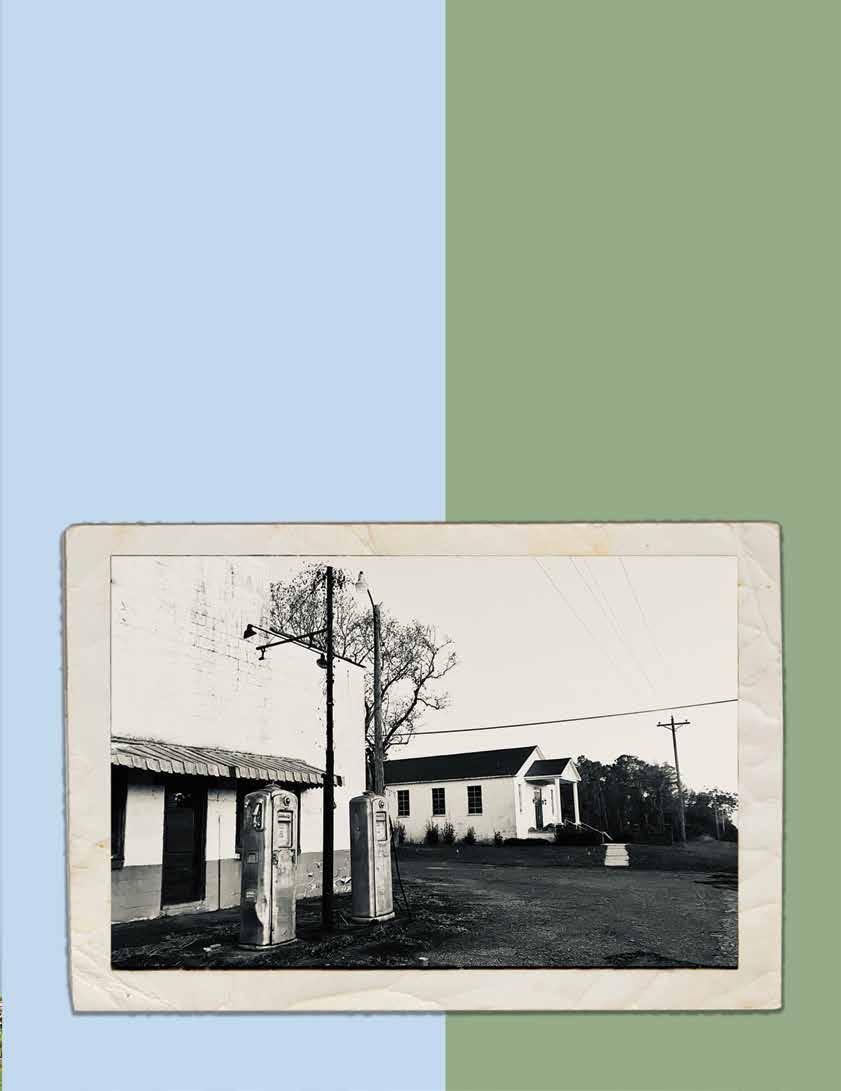 This old black and white photo shows the Church of Christ building in its heyday, next to Gates Motor Service.
This old black and white photo shows the Church of Christ building in its heyday, next to Gates Motor Service.
April / May 2023 59
Valerie and Tommy Davis started to think about opening a garden center when they had to drive to Mobile for everything they needed to landscape their backyard. In March 2022, they opened “ On the Hill Garden and Market” in a refurbished old church building in Grove Hill, Alabama.
“When you drive by the old station, you feel like you’ve gone back in time,” Valerie explained. “Whatever we did to the old church, we wanted to keep with our neighbor’s vintage charm.”
Valerie and Tommy moved forward with their plans, refinishing the original hardwood floors and adding two 1889 counters from Coleman Brothers Store (1889-1962) in Whatley, Alabama. They also brought in wooden merchandise cases and other fixtures from the S.C. Gordon Dry Goods Store, which opened in 1915 in Grove Hill and closed in 1965.
While preserving the magnificent architectural features of the original building, Valerie and Tommy Davis updated and enhanced its stunning beauty. The front of the church now features massive cypress beams, holding immense antique French iron lanterns. Two huge antique wooden doors usher guests into the Market, which is a visual and sensual delight!
Once inside, a visitor has to stop and soak in all the invigorating smells and sights and sounds. The aromas from homemade desserts, gourmet meals and seasonal veggies evoke memories of Grandma’s kitchen. Magnificent antique chandeliers cast an aura of friendliness and warmth over everything. Unique gifts and home goods, artfully arranged on antique displays, lure the eyes to a pleasing plethora of colors. Along one wall, an assortment of wind chimes and garden bells resonate serenity and tranquility with each touch. Visitors will want to block off enough time to explore every nook and cranny of this incredible Market.
On the Hill Garden and Market opened on March 5, 2022, the only one of its kind in Clarke County. With Southern hospitality, friendly service and competitive prices, OTH is a one-stop venue, where customers can
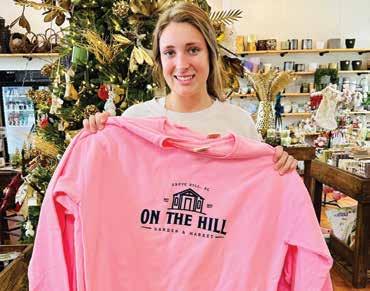
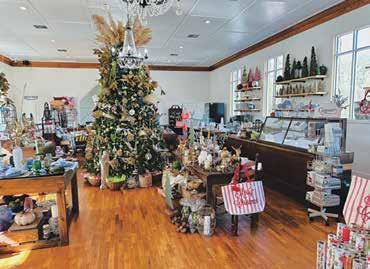

find the things they need without traveling so far.
“We offered things they couldn’t find anywhere else,” Valerie stated. “We wanted everyone to come in and just enjoy being here.”
The Garden area, on the back, is a dream come true for every plant and flower lover. OTH has a wide selection of colorful containers, whimsical yard art pieces and other eye-catching outdoor decor to choose from. Songbird and hummingbird lovers can find everything from fancy feeders to treats that attract even the pickiest feathered friends.
In the spring, the adjoining greenhouse is bursting with an array of seasonal flowers, bulbs, vegetable plants and trees. If inviting butterflies, bees and birds to your garden is on your agenda, the flowers that attract these pollinators are right here. From the small-
60 Cooperative Farming News
At Christmas, the Market was aglow with beautiful decorations and lights. The large selection of affordable giftware delighted customers hoping to find just that special item for loved ones.
The front of the church features massive cypress beams, holding immense antique French iron lanterns. At night, the soft glow of the lights against the beams is stunning.
Valerie and Tommy’s daughter, Grace, shows the popular “On the Hill” sweatshirts that were in the Market before the holidays. Grace helps her parents in the business when she is not playing sports.
est garden tools to moss, hay, pine straw, river rocks, mulch, fertilizers and soil: anything that a planter, farmer, grower or seed slinger might need can be found right here. If not, Valerie and Tommy can get it.
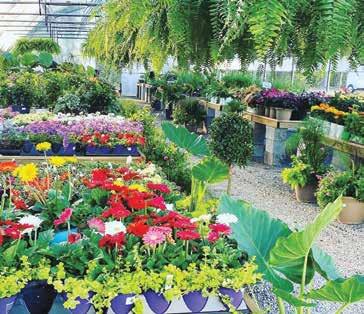
The Davises promote local produce and homegrown vegetables. They work with area gardeners to offer whatever is in season. In the future, they hope to feature products created by local artisans.
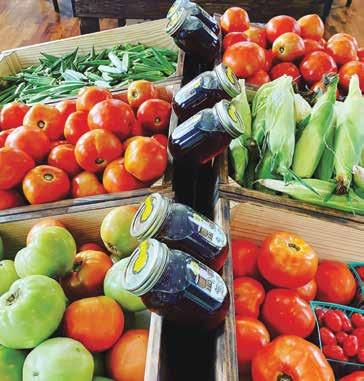
Valerie and Tommy are still adding more products for their customers’ convenience. “Three Sisters,” a
local business, brings delicious baked goods weekly and “Naman’s Catering” offers prepared meals. “Cammie’s Old Dutch Ice Cream” is just one of many other treats found On the Hill.
Valerie and Tommy manage OTH, but both have other jobs. Valerie serves as the Probate Judge of Clarke County, and Tommy is a firefighter at AMNS in Calvert. They rely on loyal workers and part-time help to run the day-to-day operations. They also employ high-school students after school.
After a year of service, OTH continues to grow as it meets the needs of its customers. With unwavering faith and much support from the community of Grove Hill, Valerie and Tommy Davis have succeeded in creating a unique business that has attracted customers from all over South Alabama and some other states. Recently, they purchased the Gates Motor Service property next door. Again, they are praying about how to develop it. They envision “On the Hill Garden and Market” becoming a destination site, where visitors could drive from other areas and spend the day, enjoying all the delightful things now available “On the Hill.”
OTH recently updated its website, making online shopping available. Check out their wide array of selections @ www.onthehillgardenandmarket.com. Email them at onthehillgm@gmail.com. They invite you to visit them at 264 North Jackson Street in Grove Hill, Alabama. Call OTH at 251-275-8888.

April / May 2023 61
In spring, the greenhouse is bursting with flowers and plants. From local favorites to hard-to-find items, OTH keeps a wide selection for its customers.
Two 1889 counters from Coleman Brothers Store in Whatley, Alabama and other 1915 merchandise cases, from the old S.C. Gordon Dry Goods Store, in Grove Hill, hold modern gifts and decor at On the Hill.
In the summer, OTH offers many fresh vegetables for customers. The Davises try to find as much local produce as they can get.
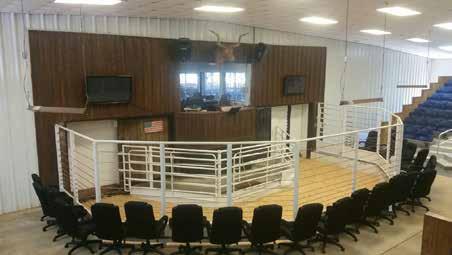


MID STATE STOCKYARDS LLP. Contact us for your Spring Cattle Marketing Needs 8415 State Highway 97 South, Letohatchee, AL 36047 - Interstate 65 Exit 151 Sale Day: Tuesdays 10:00 a.m. Ask us about our weekly board sales! 1-877-334-5229 | 334-227-8000 www.midstatestockyards.com Clanton205-288-6298 DROP-OFF LOCATIONS: Wetumpka334-313-3695 East AL706-577-1900 Covington Co.334-488-0934 SW AL251-989-3992 PARTNERS: Billy Younkin 334-313-3542 Scott Garrett 334-303-1488 Dick Farrior 334-399-0170 KILLZALL™ Aquatic Herbicide KILLZALL™ 365 Total Vegetation Killer KILLZALL™ Quick Ready To Use KILLZALL™ Extended Control Available ONLY To Independent Retailers Be Selective About Your Non-Selective Weed & Grass Killer www.Hi-Yield.com Office - 601-928-5309 and 601-928-5308 | Registerbarns21@gmail.com 321 Madison Avenue, Wiggins, MS 39577 40’ x 60’ x 12’ - Installed Roof only, Open Gables - $11,500 + tax and delivery Roof only, (2) Closed Gables $13,300 + tax and delivery 30’ x 40’ x 10’ - Installed Roof Only, Open Gables - $7,500 + tax and delivery Roof only, (2) Closed Gables - $8,900 + tax and delivery
BY LOIS TRIGG CHAPLIN
A FRONDLY WELCOME

A big fern by the front door is a green “hello.” Boston ferns are a classic, and many of us have a Boston that is many years old. But, you may find others in the marketplace that are also just as good, such as the popular Kimberly Queen or Sword Fern (Nephrolepsis obliterata). It has narrow, upright fronds (thus the sword moniker) that easily grow three feet long for an impressive diameter! Another popular one, Macho fern (Nephrolepsis biserata), is even bigger and bolder

than Kimberly Queen with wider fronds that can reach 4 feet in length. It can also take a little more sun than Kimberly Queen, but neither like full sun. Shade or partial shade is best. Also easy to grow and economical, any of these ferns may be kept through winter with protection indoors. Just keep them watered because ferns don’t like to dry out in any season. Lots of folks just overwinter them in a garage that doesn’t freeze.
GATORS IN THE GARDEN?
They look like little alligators; to an aphid, they might as well be. The ferocious-looking larvae of surprisingly delicate lacewings are good friends to have in the garden. They will devour aphids, soft scale, mealybugs, mites, insect eggs, young caterpillars and other soft-bodied insects, often saving garden crops from serious infestation. I have learned to tolerate a few aphids and such pests in the garden to keep the lacewings fed so that they will be present when most needed. One year I did some knee-jerk spraying of
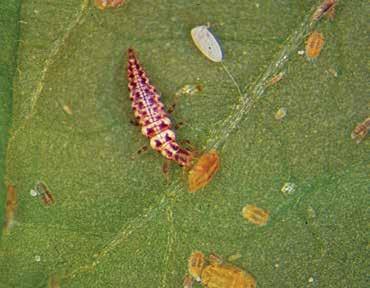 Lacewing larvae prey on garden pests.
Potted ferns do well in a shaded entrance.
Lacewing larvae prey on garden pests.
Potted ferns do well in a shaded entrance.
my citrus trees at the first sign of mites. That killed the predators, too, and it took a year to get the pests and predators back in balance again. How does a gardener encourage lacewings? Plant flowers that provide pollen and nectar continuously for the adult lacewings so that they will mate and lay eggs in the area; also tolerate a few aphids and other soft-bodied pests on plants to keep some food available for the larvae. Flat, open flowers that are easy for the adults to feed on are the best choice. These include items in the aster family such as sunflowers, coreopsis, and many native perennial asters. Also let herbs such as dill, parsley, fennel, and cilantro bloom in the garden. Often these will reseed, too.
VIBURNUMS THAT SMELL WONDERFUL
For a fragrance that will call you into the garden or to grab a flower vase, try one or both of these wonderful viburnums. Their flower clusters are showy enough, but it’s the fragrance that commands attention and makes many a gardener look forward to their season of bloom. Korean spice viburnum (Viburnum carlesii) is a handsome deciduous shrub that comes in various sizes depending on the cultivar. It has a rounded,

dense canopy with stiff upright branches. The tallest, such as Spice Girl, grow from 5 to 8 feet tall, while the shorter ones such as Proven Winners Spice Baby are 3 to 4 feet shorter, offering a good choice for containers or tighter landscape spots. A second viburnum, Burkwood (Viburnum burkwoodi) is a large shrub growing to 10-12 feet tall that is sometimes trained to a small tree-form specimen in landscape. It is also useful as a screen, but in the winter the screen is more transparent as it is also deciduous. Both plants bear typical viburnum flower clusters of pale pink that age to white. Both plants bloom on old wood, so any pruning needs to be done immediately after flowering. However, allowing enough space for the ultimate size of the plants (read the tags) is the best way to appreciate their natural form; the only cutting needed might be a wayward branch.
MAYBE IT’S COLD OUTSIDE…
A surprise spell of late cold is enough to set a gardener back for weeks. In early May 2020, we had to protect our tender peppers, squash, and cucumber plants from three nights in the low 40s. The already-caged tomatoes were easy to cover with frost cloth, but this rare, near-record cold caught us unprepared and sent us scrounging for protection. Thankfully we were able to fashion covers from a pile of 3-gallon black nursery pots and 5-gallon buckets. We turned them upside down over the small plants. A plant stake held the 3-gallon pots in place in case of wind. The bigger buckets could be easily topped with a brick, if needed. After three days everything was uncovered and proceeded to enjoy the warm spring. Lesson learned. Be prepared because even normally friendly May can bring a serious chill.

64 Cooperative Farming News
A fragrant viburnum perfumes a whole garden. Cover, cover, cover in a surprise chill.
BY JOHN HOWLE
EARLY SPRING ON THE FARM
“A person who is growing a garden, if he is growing it organically, is improving a piece of the world. He is producing something to eat, which makes him somewhat independent of the grocery business, but he is also enlarging, for himself, the meaning of food and the pleasure of eating.”
- Wendell Berry
This is the time of year when the work truly begins on the farm. April and May mean planting gardens, fertilizing pastures, tending cattle, fixing fences, baling and hauling the season’s first hay, and working until the sun sets. The warm weather brings warm soil, and we know if we want healthy vegetables all


year, the seeds should be in the ground within the next few weeks.
This is the time of year to plant corn, beans, tomatoes, squash and all the other late spring/early summer crops. Okra does best when planted a bit later when the ground has warmed to between 70 to 95 degrees, which in North Alabama
may be as late as May 15. In South Alabama it can be planted a month earlier in April.
Fertilize Pastures Now
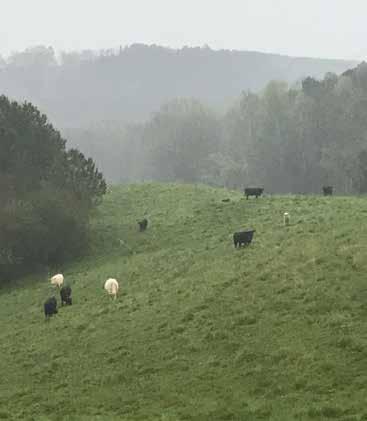
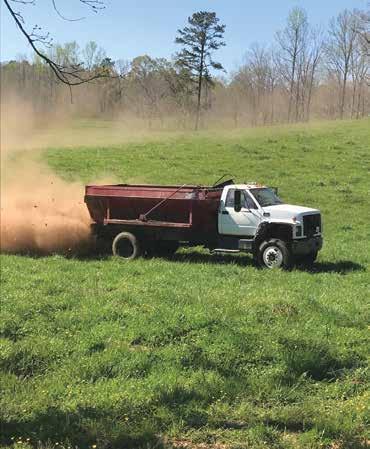
For pastures, April and May are ideal times to apply fertilizer. This can be commercial fertilizer such as nitrogen, phosphorus and potassium – commonly referred to as NPK or you can apply chicken litter. If you are applying commercial fertilizer, try to apply right before a good, soaking rain so the macro-nutrients won’t evaporate into the atmosphere but instead, soak into the ground. This is especially important when fertilizing for hay fields where high production is important.
With chicken litter, you get the added bonus of organic matter with the macro-nutrients and a longer-lasting product. First, make sure you apply these nutrients based on the recommendations from your soil test.
Pretty But Deadly
As the weather warms and the grass grows quickly, it is a satisfying feeling to look across a pasture of lush grasses and clovers. Be aware, however, that the abundant rains, warm weather, and cloudy days can put your cattle at risk for grass tetany. This time of year, be sure to provide mineral supplements to your cattle with a high magnesium and calcium content to make sure the cattle are getting all the micro-nutrients they need this time of year. Your Co-op can provide you with the right mineral supplements for your livestock needs.
Fertilizer is expensive and you definitely don’t want to apply more than you need for optimum growth. Your local Co-op is the best resource for meeting your spring fertilizer needs. They can also spread the fertilizer for you based on your soil test report.
Save Your Crop from the Crows
Before you plant your corn, make a plan to keep crows away during that critical germination and sprouting period. You can walk out one morning and see tiny corn sprouts and the next day see a peck hole for every kernel where crows have wiped out your crop.
In most cases, hanging a dead crow in the garden keeps crows away, but if you live in a populated area where shooting crows is frowned upon, you can actually order a fake, dead crow through Amazon to hang in your garden. However, if the crow doesn’t look completely authentic, the real crows will know. Also, hanging aluminum pie pans and streamers that move in the wind act to deter crow damage to gardens.
66 Cooperative Farming News
April is a great month for applying chicken litter and you also get the bonus of organic matter for the soil.
Rain, cloudy days, and quick growth can cause grass tetany in cattle. Visit your Co-op for the right mix of free-choice minerals to prevent this.
A Great Cheat for Ditch Fencing

Sometimes you have to cross a ditch when constructing a fence line. It can be a difficult matter to angle a fence down into a ditch and up the other side. The biggest problem is anchoring posts in the ditch to hold the tension of the angle. One way to remedy this is to run the fence straight across the ditch and fill in the ditch angles with discarded cattle panels. Even if the cattle panels are rusted and broken, they can be used to fill in the ditch. It doesn’t look pretty, but it does the job.
Dig Your Own Fish Bait
Even though this is one of the busiest times of year on the farm, you can still take time to go fishing. If you have a few outdoor stored round bales left over after feeding season, roll the bale a half turn to expose the moist rotting hay on the ground. Here, you will often find large, white grub worms that make ideal fish bait. They are tough and hang on a hook quite well. I have caught three different fish before, using the same grub bait.
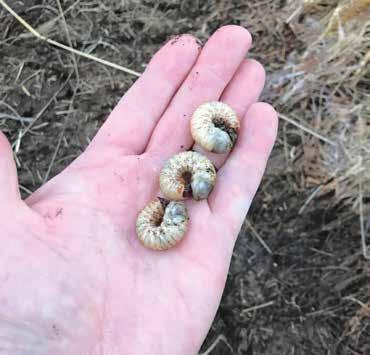
Planting and raising your own food is a satisfying feeling, and you get plenty of benefits from the extra physical activity involved. It may be hard work now, but through the following summer, fall and winter,
you’ll be glad when you see all the canned and frozen food you have been able to store. During this warm season of April and May, may the work of your hands be blessed so you can enjoy the bounty of your harvest the rest of the year.

April / May 2023 67
When corn begins to sprout, make sure you have a deterrent for the crows.
Under old round bales is a great place to find grub worms for fishing.
Old cattle panels can remedy the need for a fence crossing a ditch.
GOLDILOCKS IN THE GARDEN
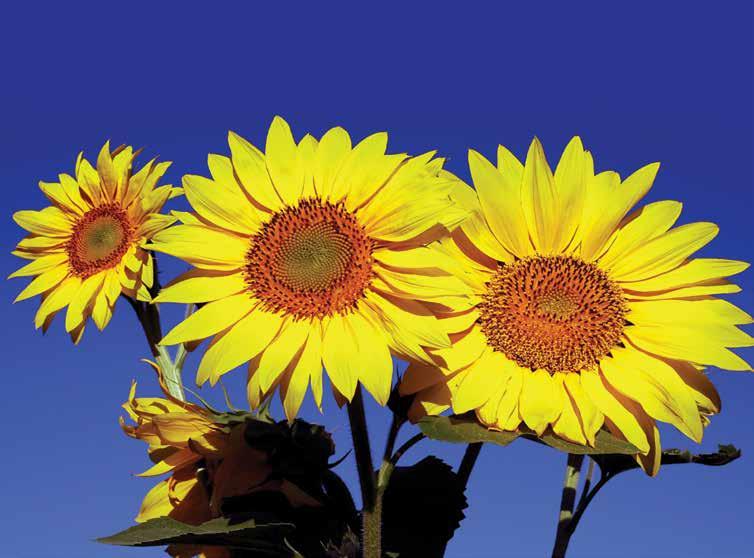 BY BETHANY O’REAR
BY BETHANY O’REAR
I’m sure it takes a lot of patience and hard work to develop new plant varieties, but I’d like that job. It must be so satisfying to produce a whole new variety of a beloved plant. And thanks to those efforts, gardeners have an astonishing array to choose from – big, small, a “just right” for everyone. Here are some perpetual garden favorites which you might want to grow this season. Three choices for each: a Baby Bear, a Mama Bear and a Papa Bear.
TOMATOES
‘Red Robin’ tomato plants are so small that they can be grown in a 6-inch pot. These determinate plants mature quickly and produce pretty, 1-inch round cherry fruit. You can plant several successions before the high heat of summer shuts down fruit production. ‘Jamestown’ produces classic round red fruit on 3- to 4-foot-tall stems. These plants have the ability to continue to set fruit as the temperatures rise
68 Cooperative Farming News
MAGIC OF GARDENING
and have good disease-resistance. ‘Big Rainbow’ is a showy indeterminate heirloom. Fruits are tricolor (predominately yellow with red ribbing) and reliably grow to 1 to 2 pounds each! Tomatoes are best started as transplants indoors 4-6 weeks before their post-frost planting date.
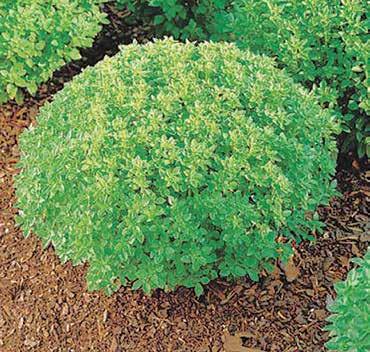
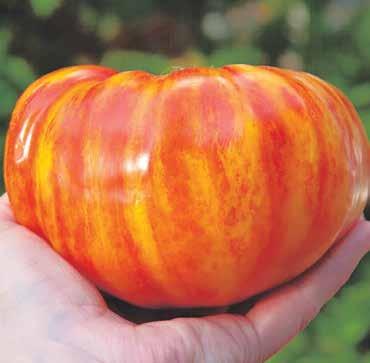
SUNFLOWERS
‘Orange Hobbit’ sunflowers only grow 12 to 24 inches tall. They make up for their diminutive size by having multiple branches and taking on a shrub
appearance. Flowers are a bright orange and mix well with similarly colored zinnias. ‘Midnight Rouge’ sunflowers have gorgeous red flowers on 4-to-6foot stems. Look for similar sunflower varieties for mahogany and chocolate-colored flowers. ‘American Giant’ sunflowers are the seed type if you want to win the county fair. Flowers are one foot across in classic yellow with black centers. In a miracle of plant hybridization, their 10- to 15-foot stalks survive all but the worst of summer storms. Sunflower seeds should be direct sown after all chance of frost has passed.
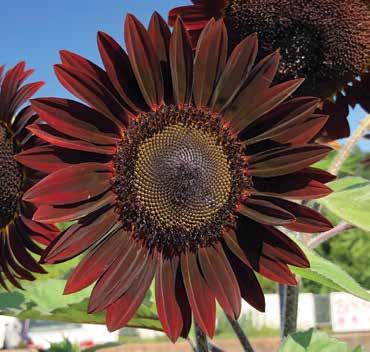
BASIL
Regarded by many as THE culinary herb for summer dishes, basil is easy to grow and can be dried for use after summer is long gone. ‘Minette’ basil plants are unusual in that they form perfect 8- to 10-inch spheres like a well-pruned topiary. The leaves are only ½ inch long. Still very tasty if you can bear to prune them off that perfect orb. ‘Siam Queen’ basil grows 4-inch-long leaves on strong stems with unusual purple flowers at the top. The leaves have a strong anise flavor (perhaps a bit stronger than Italian basil). ‘Lettuce Leaf’ basil is just as it sounds – enormous 6-inch leaves with a crinkly texture –perfect for Italian sauces. If drying for later in the season, make sure all moisture has been removed before storing. The large leaves can make that a challenge. Basil plants can be started as transplants 4-6 weeks before last frost or direct sown after frost and when soil temperatures have warmed up. Keep them evenly watered and wellmulched so they thrive in the summer heat.
April / May 2023 69
‘Midnight Rouge’ Sunflowers
'Big Rainbow' Tomato
'Minette' Basil
CUCUMBERS
Children love the surprise of finding cucumbers among the vines. ‘Mini-Me’ cucumbers will make that hunt even more special. The tiny 2-inch fruits grow quickly, maturing at 45 days. They grow on sprawling 6-foot vines and by the time the kids spot them, these spineless cukes are ready to pick. ‘Saladmore’ cucumbers are ideal for Deep South gardeners because of their broad disease resistance. They can be planted in containers as they are “bush” type but are best staked in the garden for straight 6- to 8-inch fruit. ‘Sweet Success’ are seedless cucumbers that produce 14-inch fruit worthy of the county fair. Only 54 days to maturity so if allowed to grow on, you’ll end up with the cucumber equivalent of the zucchini baseball bats you try to foist on neighbors. Cucumbers can be direct sown after last frost.

ROSES
One of the most beloved flowering shrubs, roses have a reputation for being high maintenance that isn’t entirely deserved. ‘Cutie Pie’ is a diminutive rose that tops out under two feet tall. It has good disease resistance and a pretty bloom progression from yellow to pink and was a 2018 American Rose Society winner. ‘Cutie Pie’ is small enough to be mixed as a perennial in a flower bed. Special shout out to
our next rose, ‘Goldilocks,' a polyantha shrub rose that has been popular for more than 75 years. This shrub grows to four feet tall with deep yellow blooms, repeating throughout the season. For our Papa Bear selection, you have to be lucky enough to live in the Deep South to grow this exceptional historical rose ‘Reve d’Or.' Tea Noisette roses are a special mix of tea and China roses from the 19th century, well-suited to our heat and humidity. This rose will swallow real estate with its beauty as it climbs 18 feet tall and 10 feet wide. I have a friend who has let it grow up two ‘Little Gem’ magnolia trees and people stop to photograph it in its spring and fall blossom flushes. Plant it for permanence because you’ll never be able to (or want to) move it. All roses need at least 6 hours of sun (but prefer morning rather than late afternoon sun) and should be planted in fertile soil and mulched, but avoid mulching next to the stem, particularly with grafted roses.
I hope you’ve found a few plants that are just right for you. Wishing you a happy spring gardening season!

70 Cooperative Farming News
'Reve d'Or' Rose
'Sweet Success' Cucumbers
LAWN & GARDEN CHECKLIST
April Garden Checklist
Fruits and Nuts
• Season for strawberry planting continues.
• Start spray program for all fruits.
• Plant raspberries and blackberries and continue budding apples and peaches.
Shrubs
• Prune spring-flowering shrubs after flowering.
• Fertilize azaleas and camellias.
• Spray all shrubs with a fungicide as new growth begins to mature.
Lawns
• Planting new lawns continues.
• When daytime temperatures are consistently above 70 degrees F, apply fire ant bait. Read the label carefully for best control.
• Start a mowing routine as spring growth begins.
• Monitor the thatch layer in bermudagrass and zoysiagrass lawns. Dethatch if thicker than 1⁄2 inch. Wait until active growth.
• Monitor for fungal disease in wet, cool weather.
• Fertilize warm-season lawns after fully green.
Roses
• Watch for insects and diseases.
• Keep old flower heads removed.
• Plant container-grown plants from nurseries or garden centers.
Annuals and Perennials
• Plant early-started annuals or bedding plants from nurseries or garden centers.
• Divide mums or root cuttings. Dig and divide dahlias.
Bulbs
• Plant gladiolus, fancy-leaved caladiums, milk and wine lilies (Crinum), and ginger and gloriosa lilies.
• Apply super phosphate to bearded iris and scout for iris borer moth caterpillars.
• Avoid cutting foliage of narcissus or other bulbs until it has turned brown naturally.
Miscellaneous
• Spray camellias, hollies, etc., for scale insects.
• Carefully water new plantings of shrubs and trees.
• Pinch out tips of new shoots to promote more compact shrubs.
Vegetable Seeds
• South: Plant heat-loving crops, such as okra. Continue planting other frost-tender crops.
• South and Central: Continue planting frost-tender vegetables (beans, southern peas, corn, squash, melons and cucumbers).
• North: Wait until late April to plant beans, cucumbers, melons, southern peas and squash. Plant sweet corn each week for a staggered summer harvest.
Vegetable Transplants
• Whole state: Plant transplants of tomato, pepper and eggplant.
• South: Plant certified sweet potato slips.
• North and Central: Plant sweet potato slips in late April.
May Garden Checklist
Fruits and Nuts
• Continue spray program.
• Keep grass from around trees and strawberries.
• Peaches and apples can still be budded.
Shrubs
• Newly planted shrubs need extra care now and in coming weeks.
• Do not spray with horticultural oils when the temperature is above 85 degrees F.
Lawns
• Start new lawns from seed.
• Call the Master Gardener help line at (877) 252-4769 to learn more about seasonal fertilizer use and proper mowing. Overfertilizing and overwatering lead to lawn problems.
• Wait until warm-season lawns are fully
green before applying any fertilizers.
• Mow often (5 to 10 days) to remove just 1/3 the grass height at each mowing.
• Apply 1 pound nitrogen per 1,000 square feet to all warm-season lawn types: bermudagrass, centipedegrass, St. Augustinegrass and zoysiagrass (or wait until after dethatching).
• Dethatch warm-season lawns if needed. Check thatch layer, as in April. Water and fertilize after dethatching (1 pound nitrogen per 1,000 square feet).
Roses
• Spray or dust for insects and diseases.
• Fertilize monthly according to a soil test.
• Plant container-grown plants in flower.
• Prune climbing roses after the first big flush of flowering.
Annuals and Perennials
• Late plantings of bedding plants still have time to produce.
• Watch for insects on day lilies.
• Summer bulbs started in containers may still be planted.
• Do not remove foliage from spring-flowering bulbs.
• Do not let seedheads form on tulips and other spring flowering-bulbs.

Miscellaneous
• Mulch new shrub plantings if not already done.
• Monitor new landscape plantings of shrubs, trees and turf. To establish healthy root systems, prevent them from drying out and water deeply.
Vegetable Seeds
• Whole state: Continue plantings of all April seeds across the state.
• Central and North: Add okra and southern peas to your garden.
Vegetable Transplants
• Whole state: Continue plantings of April transplant crops.
• Central and North: Plant certified sweet potato slips.
See other months from Alabama Gardener’s Calendar at www.aces.edu.
April / May 2023 71
The Lawn and Garden Checklist is provided by the Alabama Cooperative Extension System.
BY SUZY M c CRAY
URBAN HOMESTEADING
There was a “back to the land movement” in the 1940s, when many soldiers came back from the war and wanted a peaceful oasis for their families and even previously in the late 1930s when folks wanted to escape from the cities in the aftermath of the Great Depression.
There was a similar movement in the 1970s, when so many young people were disillusioned, and many others just wanted a simpler lifestyle as they led a big migration from the cities into the countryside.
A smaller but similar surge occurred before Y2K as folks wanted to “be prepared.” Many in any of the movements didn’t last long in the country, because they were ill prepared for the hard work, lower eco-
nomic opportunities and slower pace than what they expected.

Slowly another phrase crept into our language as cities found themselves filled with “urban homesteaders” wanting to be more self-sufficient with their families, but not able or not wanting to lose the city conveniences of close jobs, available medical care and more.
Articles and YouTube videos now abound on how you can homestead right on your city lot (with some even adding to their incomes by growing not only enough food or herbs for their own families but starting up urban businesses there as well).
But while we hopefully won’t ever have to trade

our rural acres for such a smaller city lot, my maternal grandparents long ago set the example for not only other city folks but for the more rural kin as well!
My Grandpa and Granny Inman, Jim and Vennie, had moved from one sharecropper farm to another during their long marriage, having seven kids along the way.
But by the time I came along in the early 1950s, they were firmly ensconced on their city homestead, even though they would have laughed at you to scorn at such a term.
Granny was in her final years of having established the first florist in our little town (thus enabling her to work right at home because the florist shop was housed right next door to their white lumbered home). Their house, with its blue-floored busy front porch, was at the front and centered in their what-I-realizenow was a fairly small city lot.
Looking toward the front of the house, on the left property line were wide flower beds complete with gladiolas, mums and other flowers Granny sold and shared. At the end of those beds and partially across the back property line were gardens with many types of vegetables such as tomatoes, greens and just about anything else one could imagine.
Prominently across the back property line was Grandpa’s worm beds. Granny and Grandpa were avid fishermen and he raised not only long brown wigglers for their fishing pleasure but which he carefully placed in round cardboard cups to sell to the public, giving him another small source of income. I can still smell the cottonseed oil that he spread across the beds, gently wetting it down, and other garden goodies which were shredded and fed to the wigglers.
On the right side, beside the small unattached garage and behind the small florist shop and even smaller greenhouse, was the “coal pile” for the fireplace and
the back-of-the-house potbellied coal-burning heater. While Grandpa did most of the cooking by that point in their lives, Granny dried apples on window screens which she placed in the sun each day, covered with old white cotton sheets. She also canned multiple jars of “Granny soup” each summer, which was unique in that the potatoes were shredded just like the cabbage in its thick tomato sauce.
There were no chickens, bunnies or other livestock at their home by the time I came along but you could hear roosters crowing each morning across town before any restrictions were put in place. Some in town still had milk cows so fresh milk was readily available. They were avid users of solar power although then it was simply known as “outside in the sun.” In addition to drying apples and other fruits, their clothesline stretched across the backyard and sun streaming through the wide windows in winter helped warm the back bedrooms. They saved further on their meager electric bill because there was no such thing as air conditioning. In the mornings they sat on the front porch; in the afternoons they moved to the metal lawn chairs sitting under the shade tree by the coal pile.
Life was slow-paced. Grandpa would carry me across the highway to A.A. Tidwell’s basket factory where we watched as oak was split into thin strips, then woven into hundreds of baskets utilized by the tomato farmers on Straight Mountain and the peach farmers around Nectar. They would have thought plastic baskets were cumbersome and many farmers relied on their customers to return their baskets each year to save on costs.
Occasionally I would be given two dimes and allowed to walk across the highway to Mr. Faulkner’s tiny gas station to retrieve two Pepsis for my grandparents, in bottles that seemed almost as tall as I was!
Grandpa would also often carry me the approx-

April / May 2023 73
MY FAVORITE LUNCH WAS CRUMBLED CORNBREAD SOAKED IN THE JUICE OF THEIR BLACK-EYED PEAS!
”
imate two blocks to downtown Oneonta, where we would visit Lowry’s Grocery Store. There the huge seed container fascinated me as Grandpa would often buy starchy smelling seeds for his garden. No one explained, or I guess that I just was too little to understand that the Lowry in Lowry’s store was actually my other Grandpa’s brother! There were many other things I didn’t understand way back then but now they make me smile and cause me to reflect!
Usually when my mama and I visited during the week, we would enjoy lunch with Grandpa and Granny. I sat at their Formica table against the wall, directly across from Granny with Grandpa on the left and my mama on my right.
My grandpa would have a plate of home-grown vegetables, a big glass of sweet tea in his polka-dotted glass, and with a huge slice of also homegrown onion at the side of his plate. My favorite lunch was crumbled cornbread soaked in the juice of their black-eyed peas! Or if I wanted a snack and it wasn’t lunch time, there was always leftover “baking powder biscuits” on a shelf in their hoosier cabinet.
Detroit or Aunt Estelle living with her seven kids on a Fayette County farm.
I really didn’t think about who those other kids were. Or who those other people were. They were MY grandparents, and I was THEIR granddaughter. I was special. They were special.
Then one day when I was about five or six I came to a startling revelation! I was NOT their only grandchild! I was totally amazed AND devastated! There were other grandchildren, MANY OTHER grandchildren!
How did this happen! When I got over being upset, I began to realize how special they treated all their children, grandchildren and great-grandchildren! Each of us were special to them!
Then as I grew older, I realized even more that this is a good example of God’s relationship with me. He has all those other children, but He still makes me feel like I am the only one in His love!
That makes me feel truly special!
“You knit me together in my mother’s womb. I will praise You, for I am fearfully and wonderfully made.” Psalm 139:13-14
(Suzy and husband Mack live on a homestead in Blount County, Alabama and can be reached on Facebook or by email at suzy.mccray@yahoo.com)
APRIL IS NATIONAL GARDENING MONTH


helping you focus on what matters most. Find a local agent. AlfaInsurance.com Farmowner coverage property | Dwelling | machinery | livestock | liability
IT'S STRAWBERRY TIME
BY ANGELA TREADAWAY
One of my favorite times of the year. It’s great when you have u-pick farms nearby or a local farmers market that carries fresh local grown strawberries.
VARIETIES
The main varieties grown here in Alabama are Camarosa and Chandler which are excellent for freezing, and for jams and preserves. Other varieties, including Albion and Sweet Charlie, are occasionally grown as well but generally not as well adapted to Alabama’s weather according to Gary Gray and James Miles, two of our Regional Extension Agents in Commercial Horticulture.
STORAGE, FOOD SAFETY AND OTHER INTERESTING FACTS ABOUT STRAWBERRIES
• Avoid purchasing fruits that are bruised, damaged or moldy.
• Wash hands before and after handling fresh produce.
• Keep fruit away from raw meats and meat juice to prevent cross contamination.
• Use soft, overripe berries immediately; discard any smashed or moldy product.
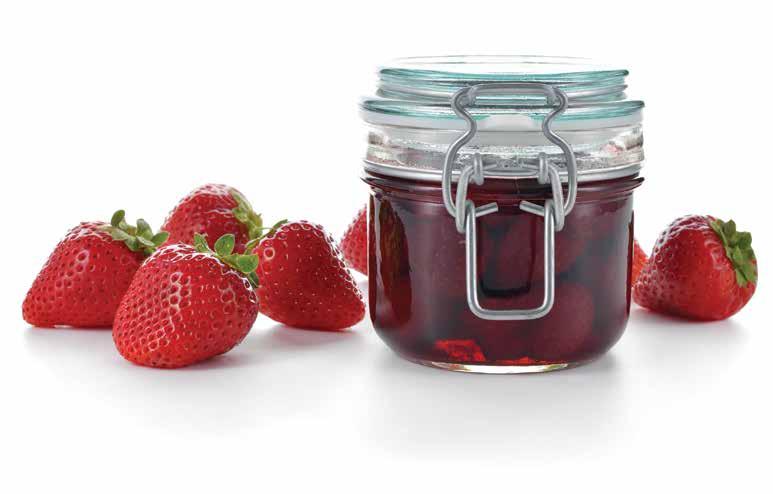
• Store berries in a box with holes and cover with plastic wrap or put in a plastic bag with holes.
• Store at around 40 F.
• One cup of strawberries is only 55 calories.
• Eight strawberries will provide 140 percent of the recommended daily intake of Vitamin C for kids.
• Strawberries are a member of the rose family.
• The flavor of a strawberry is influenced by weather, the variety and stage of ripeness when harvested.
• On average, there are 200 seeds in a strawberry.
• Ninety-four per cent of United States households consume strawberries.
• According to the United States Department of Agriculture, the annual per capita consumption of fresh and frozen strawberries is 4.85 pounds per person.
• Strawberries are grown in every state in the United States and every province of Canada.
• Americans eat 3.4 pounds of fresh strawberries each year plus another 1.8 pounds frozen per capita. Although strawberries are available in many forms—frozen, jam and jelly, and ice cream— nothing compares to the taste of a fresh vine ripened strawberry.
76 Cooperative Farming News
FOOD SAFETY
YIELD
1 quart (1 1/2 pounds) = 4 cups
8-quart crate (12 pounds) = 12 pints frozen
24-quart crate = 18 to 24 quarts canned
36 pounds fresh = 36 pints frozen
2/3 quart fresh = 1 pint frozen
HOW TO PRESERVE
Freezing
Choose firm, ripe, red berries, preferably with a slightly tart flavor. Large berries are better sliced or crushed. Sort the berries. Wash them in cold water but do not soak. Cap and drain well. Using the sugar and syrup pack methods will produce better quality frozen strawberries than packing berries without sweetening.
• Syrup pack method: pack berries into containers and cover with cold 50 percent syrup (1 part water to 1 part sugar), leaving 1/2-inch headspace. Seal, label, date and freeze the berries.
• Sugar pack method: add 1 part sugar to 6 parts strawberries and mix thoroughly. Put into containers, leaving 1/2-inch headspace. Seal, label, date and freeze the berries.
• Unsweetened pack method: pack into containers, leaving 1/2-inch headspace. To ensure better color, cover with water containing 1 teaspoon ascorbic acid to each quart of water. Seal, label and freeze the berries.
• Pectin pack method: this alternative uses pectin and less sugar than the syrup pack method and retains the fresh berry flavor, color and texture. Follow the manufacturer’s directions on the box. Pack into freezer bags or containers, leaving 1/2-inch headspace. Seal, label, date and freeze the berries.
Canning
Strawberry Syrup (9 half pints)
6 1/2 cups of fresh or frozen berries
6 1/2 cups of sugar
You may also use this procedure with fresh juices from fresh or frozen strawberries, and with fresh or frozen blueberries, cherries, grapes or raspberries. Select fresh or frozen fruit. Wash, cap and stem fresh fruit and crush in a saucepan. Heat to boiling and simmer until soft, 5 to 10 minutes. Strain hot through a colander and drain until cool enough to handle. Strain the collected juice through a double layer of cheesecloth or a jelly
bag. Discard the dry pulp. The yield of the pressed juice should be about 4 1/2 to 5 cups. In a large saucepan, combine the juice with sugar. Bring to a boil, and simmer 1 minute. To make syrup with whole fruit pieces, save 1 or 2 cups of the fresh or frozen fruit, combine these with the sugar, and simmer as in making regular syrup. Remove from heat, skim off foam, and fill clean, hot, half-pint or pint jars, leaving 1/2-inch headspace. Wipe jar rims, adjust lids and process in a boiling-water canner for 10 minutes (both half-pints and pints).
Lower Sugar Strawberry Jam (For 10 – 8-ounce jars)
6 2/3 crushed strawberries (can chop in food processor)
1 2/3 cups unsweetened fruit juice or water
7 1/2 Tablespoons Ball Low or No Sugar Needed Pectin
1/2 to 3 cups granulated sugar or honey
1/2 teaspoon butter to prevent foaming so bad
Prepare water bath canner, jars and lids according to manufacturer's instructions.
Combine prepared fruit with fruit juice or water in a large saucepan. Gradually stir in Ball RealFruit™ Pectin. Add butter, if using. Bring mixture to a full rolling boil that can’t be stirred down, over high heat, stirring constantly.
Add sugar, sugar substitute or honey, if using. Return mixture to a full rolling boil. Boil hard 1 minute, stirring constantly. Remove from heat. Skim foam if necessary.
Ladle into hot clean canning jars, place two-piece lid on and tighten fingertip tight. Then process in the water bath canner for 10 minutes. Remove from canner and let set on a towel on the counter for 24 hours. Check for seal, rinse and clean jar, label and enjoy. If it did not seal put in refrigerator or reprocess in the canner.
**One thing to remember when you are doing lower sugar jams and jellies is that the shelf life is shorter because sugar acts as preservative of the color of the fruit. Full sugar jam will last about 8-10 months on the shelf without turning but with lower sugar jams and jellies, they begin to turn after about 3 months. It’s fine to eat, but won’t stay that bright strawberry red. The best way to retain the color is do low sugar in small batches and when the strawberries are so abundant freeze them in preparation of making jam several times a year. Frozen strawberries tend to make a sweeter jam.
April / May 2023 77
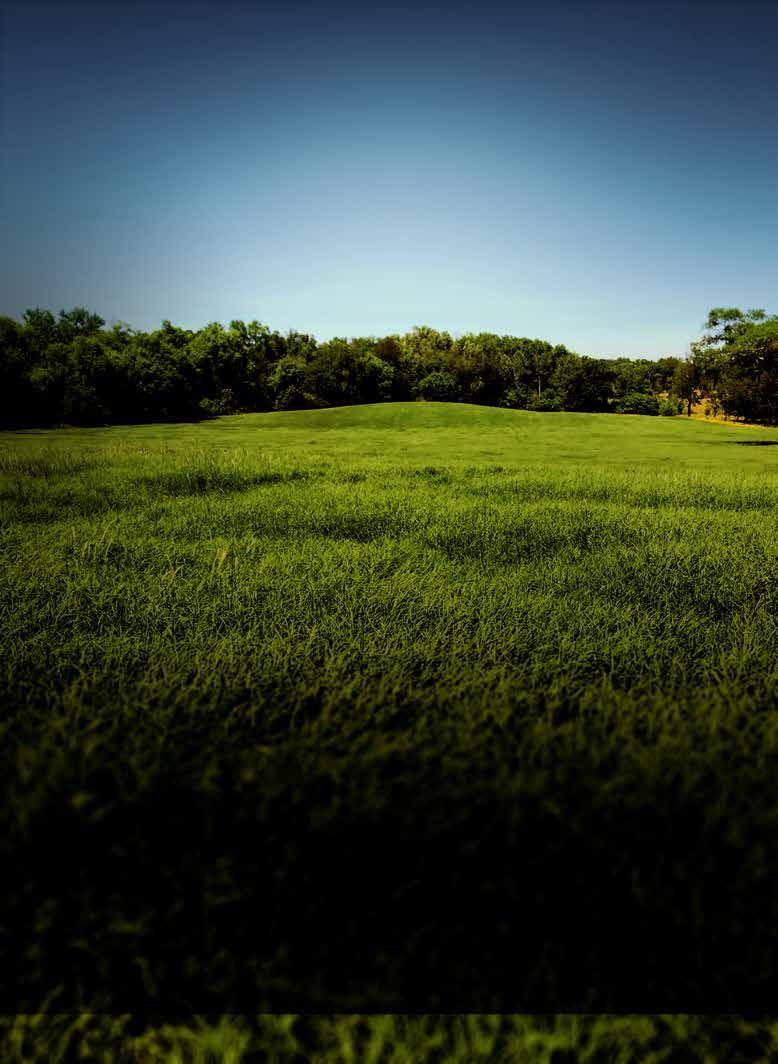


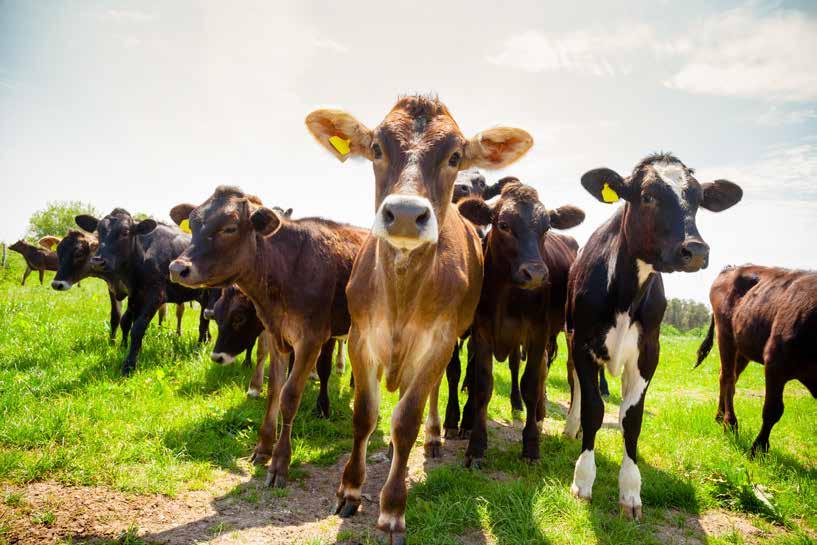
78 Cooperative Farming News PRODUCTIVE A consistent, top-yielding variety PERSISTENT Deep rooted for increased heat and drought tolerance* *compared to common bermudagrass PROFITABLE Excellent for high quality hay and grazing 1-800-285-SEED or pennington.com Follow us on Facebook at Pennington Seed Forage Products Pennington with design is a registered trademark of Pennington Seed, Inc. YOUR CATTLE AREN’T COMMON... WHY SHOULD YOUR BERMUDAGRASS BE? SHOP OUR FULL LINEUP AT TriGreen.com CLAY COUNTY STOCKYARD 1050 Airport Road - Ashland, AL Sale Every Tuesday at 12:30 p.m. Tad and Kim Eason, Owners Barn: 256-354-2276 Tad: 397-4428 Hauling available Check us out on Facebook! SAND MOUNTAIN STOCKYARD, LLC 19509 AL Hwy 68 - Crossville, AL 256-561-3434 Cattle Auction - Every Wed. & Sat. at 11:30 a.m. Call for any hauling & catching needs VALLEY STOCKYARD 13130 AL HWY 157 - Moulton, AL Cattle Auction - Wed. at 11:00 a.m. Benjy McCafferty (C) 256-740-9648 Phone: 256-974-5900 Fax: 256-974-5899 Your Full Service Stockyard MID STATE STOCKYARDS TOP RANKED MARKET RECEIPTS SINCE 2006 8415 State HWY 97 South Letohatchee, AL 36047 Sale Day: Tuesday at 10:00 a.m. 1-877-334-5229 or 334-227-8000 www.midstatestockyards.com If you would like to advertise your stockyard, please contact Wendy McFarland at mcfarlandadvantage@gmail.com
THE DEODORANT INCIDENT OF 1989
BY GREG A. LANE
When I was an older teenager, back in the early 1980s, I saw a commercial on TV that promoted a particular men’s deodorant brand which was supposedly popular with the opposite sex. According to the commercial, if I were to wear the deodorant, I’d be practically irresistible to womankind. Being the unmarried, red-blooded American male that I was, I went out and bought it. Back in those days, I needed all the help I could get in trying to lure a prospective bride.
Before long, I was completely sold on that brand of deodorant. I bought it religiously, to the exclusion of all other brand names. I was certain that the scent of my deodorant drove women wild, just like the commercial promised, so I knew it was only a matter of time before I would land the woman of my dreams.
In 1988, my deodorant had finally achieved the desired effect … it lured my future wife to me. I proposed to her on Christmas Eve of 1988 and we were married on April 29, 1989. Because the deodorant was partly responsible for my marital bliss, I decided to continue using it (even though I was aware of its seductive powers … wink, wink).

One day, about three months after we had gotten married, my wife came home from the grocery store with several bags of groceries. I was helping her unpack the groceries when I noticed a stick of deodorant in one of the bags. I
held it up and said, “Have you changed deodorants?” She replied, “No, I bought that for you.” “Why did you do that?” I questioned. “Don’t you like the smell of the deodorant I’ve been using?” I almost said it jokingly, knowing that its aroma is what had lured her to me in the first place.
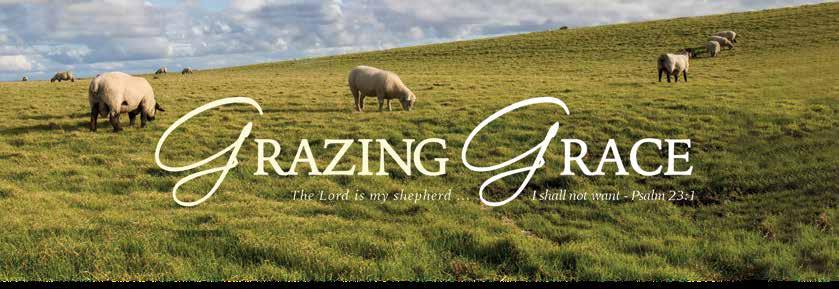
February / March 2023 80
“I just thought you might like this deodorant better,” she replied. I retorted, “Well, I prefer my deodorant. I’ve been using it for 10 years now and I don’t want to change.” There was a long, hesitant pause before she replied, “Um … actually … I’ve been meaning to tell you something … your deodorant doesn’t work.” “What?” I replied in stunned disbelief. She was so brave and honest … and blunt, “I’m trying to tell you, your deodorant doesn’t work … it has never worked. There are times when you’ve put your arm around me and your underarm odor almost made me choke! You need a new deodorant!”
us, God loved us. And, the beautiful thing about that love is that He didn’t try to clean us up before He took us into His heart. He pulled us close to Himself and loved us in spite of the stench, because that’s what love does.

I heard a story about a preacher that went to visit a man who wanted to return to church after many years of being wayward. The man told the preacher, “My life is so messed up now, I don’t know if the Lord will take me back. So, I’ve been trying to clean up my life before I go back to church.” The wise old preacher replied, “Do you ever go fishing?” With a questioning look, the man responded, “Yes, I love to go fishing.” The preacher said, “Tell me, do you clean the fish before you catch them or after?” The man smiled and replied, “After, of course!” To which the preacher said, “Same thing with God … He’ll clean you up after He catches you. Cleaning you up is His job … not yours.”
Oh! What a startling revelation I received on that day! I thought my deodorant was something that made me a more enticing eligible bachelor throughout my younger years. But, I came to find out it was more likely that it had made me repulsive to the opposite sex! My wife wasn’t lured to me BECAUSE OF my deodorant’s alluring powers … she was lured to me IN SPITE OF IT! Obviously, I was very embarrassed by this new-found revelation, but I’m glad it finally came out, and I’m glad my wife was brave enough to mention it. I said to her, “Why haven’t you said something sooner?” She replied, “I didn’t know where our relationship was going and didn’t want to cause a problem by mentioning it to you before. But, now that we’re married, I thought it was time to tell you.”
Love is an incredible force in our world today. It has great power to overlook the flaws and imperfections in others. I think of all my wife went through during our months of courtship and how her olfactory senses were pushed to the brink of endurance, yet her love refused to give up on me. She knew I was the man she wanted to marry, stinky armpits and all! She didn’t try to clean me up before she took me into her heart. She loved me the way I was. The “clean-up” took place after the relationship had been fully established. Good thing for me!
Our human ability to love comes directly from God. As a matter of fact, 1 John 4:8 plainly states that “God is love." It stands to reason, then, that God’s love would be greater than our own human love. How great is God’s love? Romans 5:8 puts it this way: “But God demonstrates his own love for us in this: While we were still sinners, Christ died for us.” While we were still in our mess, while the stench of our sin and selfishness was all over
The truth is that we all have things about ourselves that make us less-than-lovely … things that need improvement and cleaning up. Sometimes we’re not even aware of how unlovely we can be, or how stinky our attitude and behavior is. Thankfully, there’s a God who loves us right where we are. He loves us so much that He accepts us just the way we are … and, too much to let us stay that way.
80 Cooperative Farming News
MY WIFE WASN’T LURED TO ME "BECAUSE OF" MY DEODORANT’S ALLURING POWERS … SHE WAS LURED TO ME IN SPITE OF IT!
BY JESSIE SHOOK
As the cold and cozy winter fades away, Spring is here and so is fresh produce! The April/May Co-op Pantry is packed full of salad recipes that will make you want to pack away those winter clothes and get outside in the garden!
Strawberry and Watercress Salad
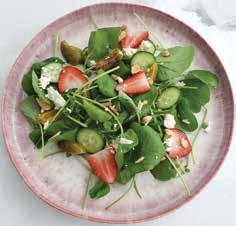
1/2 medium rhubarb stalk, very thinly sliced on a diagonal
6 ounces strawberries, hulled, halved, sliced if large
2 Tablespoons fresh lemon juice
2 teaspoons honey
1 bunch watercress, tough stems removed
1/2 cup basil leaves
1/2 cup cilantro leaves with tender stems
2 scallions, thinly sliced on a diagonal Kosher salt
Crushed red pepper flakes
2 Tablespoons extra-virgin olive oil
Poppy seeds (for serving)
Toss rhubarb, strawberries, lemon juice and honey in a medium bowl to combine. Arrange watercress, basil, and cilantro on a platter, then scatter scallions over. Season with salt and sprinkle with red pepper flakes. Spoon berry mixture and juices over; drizzle with oil and sprinkle with poppy seeds.
Egg Salad Sandwiches

5 hard-cooked eggs, grated
1 Tablespoon onion, grated
2 Tablespoons celery, finely chopped
2 Tablespoons sweet pickle relish
2 Tablespoons mayonnaise (or more to taste)
1 Tablespoon sour cream

3/4 teaspoon dried salad seasoning
1/2 teaspoon Dijon mustard
1/4 teaspoon salt
1/4 teaspoon sugar
1/8 teaspoon ground black pepper
22 slices white bread
Mix hard-cooked eggs, onion, celery, sweet pickle relish, mayonnaise, sour cream, dried salad seasoning, Dijon mustard, salt, sugar, and pepper in a bowl until blended. Cover and chill three hours. Evenly spread egg mixture on 1 side of 11 bread slices. Create sandwiches by topping with remaining slices. Cut each sandwich horizontally to create 4 finger sandwiches.
Orzo Salad with Shrimp and Lemon Dressing

1/4 cup extra-virgin olive oil
1 teaspoon lemon zest plus 3 Tablespoons fresh juice (from 1 large lemon)
1 1/2 teaspoons kosher salt
1/2 teaspoon black pepper
1 cup uncooked orzo
8 ounces fresh asparagus, trimmed and diagonally sliced into 1-inch pieces (about 1 cup)
4 ounces fresh sugar snap peas, trimmed (about 1 cup)
1 cup fresh or frozen English peas (thawed if frozen)
12 ounces medium peeled, deveined raw shrimp
1/4 cup coarsely chopped fresh chives
1/4 cup coarsely chopped fresh flat-leaf parsley
1/4 cup coarsely chopped fresh tarragon
Whisk together oil, zest, juice, salt and pepper in a small bowl. Set aside. Prepare orzo according to package directions, omitting salt and fat; drain. Transfer orzo to a bowl and cool to room temperature, about 10 minutes. While orzo cooks, bring a large saucepan of water to a boil over high. Add asparagus and sugar snap peas to boiling water. Cook until bright green and tender-crisp, about 2 minutes. Add English peas and stir until softened, about 30 seconds. Using a slotted spoon, transfer vegetables to an ice bath, reserving boiling water in saucepan. Add shrimp to boiling water. Cook until opaque, about 3 minutes and then drain. Transfer shrimp to ice bath with vegetables. Let stand until chilled, about 3 minutes; drain. Toss together shrimp-vegetable mixture with orzo; drizzle with dressing. Add chives, parsley and tarragon, and toss to combine. Serve at room temperature or chilled.
Bright Spring Salad
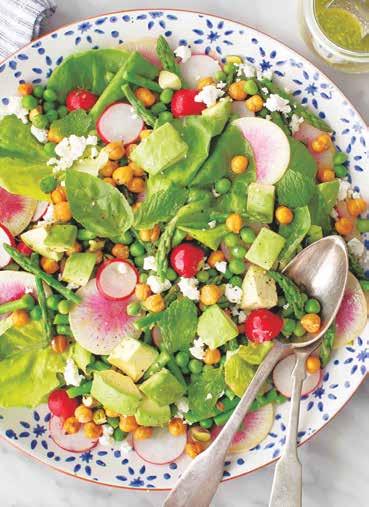
1 bunch asparagus, tender parts, chopped into 1-inch pieces

1/2 cup frozen peas, thawed
A few handfuls of salad greens
2 radishes, thinly sliced
1/2 cup crumbled feta cheese
1/2 avocado, pitted and diced
1/4 cup chopped, toasted pistachios
1/2 cup roasted chickpeas
Fresh herbs, for garnish (basil, mint and/or chives)
Sea salt and freshly ground pepper
Dressing
1/4 cup fresh basil or a mix of basil and mint
1 small garlic clove
1 Tablespoon lemon juice, plus 1/2 teaspoon zest
1 Tablespoon white wine vinegar
2 Tablespoons extra-virgin olive oil, more as desired
1/4 teaspoon sea salt
Bring a large pot of salted water to a boil and set a bowl of ice water nearby. Blanch the aspar
82 Cooperative Farming News
agus for about 1 minute, until tender but still bright green. Transfer to the ice water for 1 minute, then drain. Allow the asparagus to dry and transfer it back to the bowl and add the peas. Make the dressing: In a food processor; pulse together the herbs, garlic, lemon juice, zest, vinegar, olive oil, and salt. Add half of the dressing to the bowl with the asparagus and toss to coat. Season to taste with salt and pepper. Assemble the salad. Arrange the salad greens on a platter, then layer the asparagus/pea mixture, the radishes, feta, avocado, pistachios, chickpeas and herbs. Drizzle with remaining dressing, season to taste with more salt and pepper, and serve.
Green Pasta Salad

Kosher salt
8 ounces elbow macaroni
3 cups packed fresh spinach
1 cup frozen green peas or edamame, defrosted and drained
2 Persian cucumbers, quartered lengthwise and chopped
1/2 cup freshly chopped herbs, such as parsley, basil, or cilantro
2 jalapenos, thinly sliced into rounds
3 Tablespoons capers, drained
1 avocado, cubed
Freshly ground black pepper
Crushed red pepper flakes
DRESSING
3 Tablespoons lemon juice
1/2 medium shallot, minced
1 tsp. agave nectar
1/3 cup extra-virgin olive oil
Kosher salt
Freshly ground black pepper
In a large pot of salted boiling water, cook pasta until al dente. Drain pasta in a colander, then run under cold water to stop cooking and rinse off starches. Set aside to drain while you make the dressing. Make dressing: in a medium bowl, whisk together lemon juice, shallot, and agave. Whisking constantly, slowly drizzle in olive oil until mixture is emulsified. Season with salt and pepper. In a large bowl, combine pasta, spinach, peas or edamame, cucumbers, herbs, jalapenos, capers, and lemon zest. Toss for 1 to 2 minutes, until spinach has reduced in volume and becomes slightly wilted. Add avocado and pumpkin seeds and toss gently until just combined. Season to taste with salt, pepper, and crushed red pepper flakes.
Fruit Salad

DRESSING
1/4 cup honey
/4 cup freshly squeezed
orange juice
Zest of 1 lemon
SALAD
pound strawberries, hulled and quartered
6 ounces blueberries
6 ounces raspberries
3 kiwis, peeled and sliced
1 orange, peeled and wedges cut in half
2 apples, peeled and chopped
1 mango, peeled and chopped
2 cups grapes
In a small bowl whisk together honey, orange juice, and lemon zest. Add fruit to a large bowl and pour over dressing, tossing gently to combine. Chill until ready to serve.
April / May 2023 83
“OF MEN AND OF MYTHS: JOE STILLWELL CAIN, JULIAN LEE RAYFORD, AND MAKING OF CHIEF SLAC”
April 1-15, 2023
Mobile - Mobile Carnival Museum
Monday, Wednesday, Friday and Saturday - 9:00 a.m. - 4:00 p.m.
Call 251-432-3324
YAM 2023: EXHIBITION FOR YOUTH ART MONTH
April 1-23, 2023
Huntsville - Huntsville Museum of Art - Admission
Call 256-535-4350
CRAWDAD AND MUSIC FESTIVAL
April 1, 2023
Ozark - Downtown
9:00 a.m. -6:00 p.m.
Call 334-774-2618
POW MEMORIAL SERVICE
April 1, 2023
Orrville - Old Cahawba
Archaeological Park
11:30 a.m. - 12:30 p.m.
Call 334-872-8058
RAPTOR RUN 5K & DINO DASH 1K
April 1, 2023
Anniston - Anniston Museums and Gardens - Admission
8:00 a.m. - Until Call 256-237-6766
JOHN PAUL WHITE WITH ALABAMA SYMPHONY ORCHESTRA
April 6, 2023
Birmingham - Alys Stephens Center Admission
7:00 p.m.
Call 205-975-2787
PIONEER DAY - QUILT & ART CONTEST
April 8, 2023
Fort Mitchell - Fort Mitchell Historic Site - Admission
9:00 a.m. - 3:00 p.m. EST Visit www.visitfortmitchell.org for more information
TO KILL A MOCKINGBIRD THEATRICAL PERFORMANCE
April 10 - May 20, 2023
Monroeville - Monroe County Museum - Admission
2:00 p.m. & 7:00 p.m. Call 251-743-3386
23RD ANNUAL ALABAMA CHEF CHALLENGE

April 13, 2023
Mobile - Mobile Convention Center
Admission - 21 and over call 251-653-1617
MILLION DOLLAR QUARTET
April 13 - May 7, 2023
Montgomery - Alabama Shakespeare Festival - Admission Call 334-271-5353
DIXIE DIVISION MILITARY VEHICLE SHOW
April 14-15, 2023
Mobile - USS Alabama Battleship Memorial Park - Fee for parking
Noon - 3:00 p.m. Call 251-433-2703
MORGAN COUNTY MASTER
GARDENERS ANNUAL PLANT SALE
April 15-16, 2023
Decatur - Point Mallard
Saturday: 8:00 a.m. - 4:00 p.m.
Sunday: 1:00 p.m. - 4:00 p.m. Call 251-433-2703
DAUPHIN ISLAND ART TRAIL
April 15, 2023
Mobile - Daulphin Island
Various Locations
9:00 a.m. - 4:00 p.m. Call 251-861-5524
ART ON THE LAKE
April 15-16, 2023
Guntersville - Guntersville
Recreational Center - Admission
Saturday: 10:00 a.m. - 5:00 p.m.
Sunday: 10:00 a.m. - 4:00 p.m. Call 256-653-0991
HERB DAY
April 15-16, 2023
Montgomery - 5 Bell Road
8:00 a.m. - 3:00 p.m. Call 334-272-3940
MAGNOLIA FESTIVAL
April 21-22, 2023
Gardendale - Civic Center Call 205-913-0538
SMOKE ON THE WATER
BBQ FESTIVAL
April 23, 2023
Florence - McFarland Park
Admission
9:00 a.m. - 2:00 p.m. Call 256-913-0538
THE GREAT AMERICAN TRAILER PARK MUSICAL
April 25-29, 2023
Dothan - Dothan Cultural Arts Center
Admission - 7:00 p.m. Call 334-794-0400
84 Cooperative Farming News
GRAND RIVERFEST
April 29, 2023
Leeds - The Outlet Shops of Grand
River - 11:00 a.m. - 5:00 p.m.
Call 205-535-4350
ALDRIDGE GARDENS SPRING PLANT SALE
April 27-29, 2023
Hoover - Aldridge Gardens
Thursday: 9:00 a.m. - 5:00 p.m
Friday: 9:00 a.m. - 5:00 p.m.
Saturday: 8:30 a.m. - Noon
Call 205-682-8019
RAINBOW RUN
April 29, 2023
Foley - CMP Talladega
Marksmanship Park
Admission
Call 251-923-2111
2023 PANOPLY ARTS FESTIVAL
April 29-30, 2023
Huntsville - Big Spring Park
Friday: 5:00 - 9:00 p.m.
Saturday: 10:00 a.m. - 9:00 p.m.
Sunday: 11:00 a.m. - 6:00 p.m.
Call 256-519-2787
19TH ANNUAL GULF COAST HOT AIR BALLOON FESTIVAL
May 4-6, 2023
Foley - OWA Parks & Resort
Thursday: 5:00 - 9:00 p.m.
Friday: 2:00 - 10:00 p.m.
Saturday: 11:00 a.m. - 10:00 p.m.
Call 251-943-3291
RECALL LAGRANGE
May 6, 2023
Leighton - LaGrange College Site
Park - Food Vendors on site
Call 256-446-9324
UNFRAMED: OFF TO THE RACES
May 6, 2023
Huntsville - Huntsville Museum of Art Guild - Admission
5:00 - 8:00 p.m.
Call 256-535-4350
IF BUGS COULD TALK WALKING TOUR AT OLD CAHAWBA
May 6, 2023
Orrville - Old Cahawba
Archaeological Park Admission
10:00 - 11:00 a.m.
Call 334-872-8058
JOHNNY RAY CENTURY
May 6, 2023
Opelika - Red Clay Brewing Company
Registration Fees
7:00 a.m. - 4:00 p.m.
Call 334-501-3281
PROPAGATION 101: BASIC TRIED-AND-TRUE METHODS
May 6, 2023
Huntsville - Huntsville Botanical
Gardens - Admission
10:00 a.m. - 12:00 p.m.
Call 256-830-4447
LORDS OF THE RING
May 6-7, 2023
Mobile - Saenger Theatre
Admission
Saturday: 7:30 p.m.
Sunday: 2:30 p.m.
Call 251-432-2010
BELLE MONT CELTIC FESTIVAL
May 12-13, 2023
Tuscumbia - Belle Mont Mansion
Admission
Call 256-381-5052
AZALEA CITY QUILT
GUILD FESTIVAL OF QUILTS: BACK TO TRADITION
May 12-13, 2023
Mobile - 7701 Hitt Road
Admission
10:00 a.m. - 5:00 p.m.
Contact: ACQG18@yahoo.com
51ST ANNUAL ART IN THE PARK
May 13-14, 2023
Foley - John B. Foley Park
Saturday: 9:00 a.m. - 5:00 p.m.
Sunday: 9:00 a.m. - 4:00 p.m.
Call 251-943-4381
TINKER BELL
May 13-14, 2023
Huntsville - Huntsville Botantical
Saturday: 10:00 a.m. & 1:00 p.m.
Sunday: Noon & 3:00 p.m.
Call 256-539-6829
ARTS ALIVE FESTIVAL
May 19-21, 2023
Florence - Wilson Park
Saturday: 9:00 a.m. - 5:00 p.m.
Sunday: 10:00 a.m. - 5:00 p.m.
Call 251-743-3386
BLUE STAR SALUTE
May 20, 2023
Mobile - USS Battleship Memorial
Parkway - Admission for parking
7:00 a.m. - 2:00 p.m.
Call 251-433-2703
2023 URIAH COTTON
PATCH FESTIVAL
May 20, 2023
Uriah - 25 Davis Ave
9:00 a.m. - 3:00 p.m.
Call 251-862-2279
ARMED FORCES DAY FESTIVAL
May 20, 2023
Centre - 7290 Co. Rd. 16
Veterans Free - $6.00 Donation
Call 706-584-0386
RXR FEST
May 26-27, 2023
Alexander City - Russell Crossroads
6:30 - 9:30 p.m.
Call 256-397-1019
ALABAMA JUBILEE HOT AIR

BALLOON FESTIVAL
May 27-28, 2023
Decatur - Point Mallard Park
6:00 a.m. - 10:00 p.m.
Call 800-524-6181
MEMORIAL DAY WEEKEND PARTY
May 27-28, 2023
Foley - OWA
Various times
Call 251-923-2111
April / May 2023 85 “What’s Happening in Alabama” Policy The AFC Cooperative Farming News publishes event listings as space allows, giving preference to agricultural events of regional or statewide interest and those that are annual or one-time events. The magazine assumes no responsibility for the accuracy of information
for publication and advises calling ahead to confirm dates, locations, times and
admission fees.
be
submitted
possible
To be included in the calendar, send listings to: Cooperative Farming News Calendar of Events P.O. Box 2227 Decatur, AL 35609 -oremail to Calendar of Events at subscribe@alafarm.com *Please include name of event, where it will be held (both town and physical location), a phone number for more information, and an email or website.* *Event Listings must
received at least two months in advance and will be accepted up to a year in advance.*





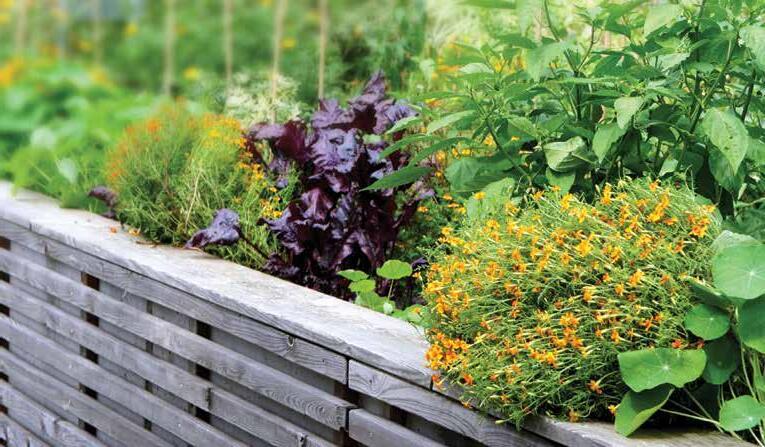

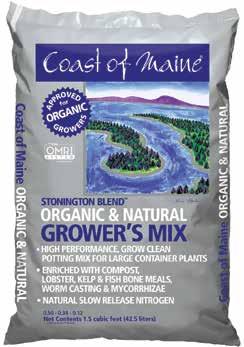
86 Cooperative Farming News DAREPRODUCTS.COM | 1.800.922.3273 LEARN ABOUT THE DARE ADVANTAGE - HOW IT WORKS - FENCE DESIGN TOOL - PRODUCT VIDEOS - STORE LOCATER ELECTRIC FENCING O VE R 75 YEA RS OF SCAN TH E QR CODE Dare_Ad_AFC-Farming_7-22_7.875x5_v2.pdf 1 5/24/22 12:01 PM www.coastofmaine.com Coast of Maine For Organic Use OMRI.org STONINGTON BLEND™ Organic & Natural Grower’s Mix STONINGTON BLEND™ Organic & Natural Grower’s Mix CASTINE BLEND™ Organic & Natural Raised Bed Mix CASTINE BLEND™ Organic & Natural Raised Bed Mix
Pick
Top Pick Top
Pinkeye Pinkeye Cream Cream Brown Crowder
Crowder
“In the six plus years I have observed peas growing, the Top Pick Pinkeye’s and Top Pick Creams are two of the best peas. They have excellent germination; seedling vigor; high yielding and easy to pick. Plus their food quality is great.

They are good for “U Pick” operations because the peas set on top and the outside of the plant making a real showy bush type plant, which makes it easy for picking by hand and by machine. They are also easy to shell by hand or by sheller and make a good shell out. There are also no problems with disease.


If you have a market operations, you definitely need both types of peas – Top Pick Pinkeye’s and Top Pick Creams. These are by far the best peas on the market today. They are exceptional peas.”
Jason Barkett - J.E.B. Agriculture Consultant



“I grew up farming and I’m impressed with Top Pick Pinkeyed peas. We had early rains and the Top Pick peas loaded up. Some we planted late; some we no-tilled; plus we had more rain, but they really made peas. They pick great and shell out good and best of all they taste great.
We sold them at the Fresh Market, along with shelled peas. The customers came back asking for Top Pick peas. We will plant more Top Pick Pinkeyed peas next year and years to come.”
Bo Levins - Planterville, Alabama
“I first saw Top Pick Pinkeyed peas growing at the E. V. Smith Research Center and really liked the way they put out on top and around the outside of the plant. They were really loaded up with peas.
I have been planting these pinkeyed for ten years now. They produce more than the old bush running pinkeyed purple hull peas. They just out produce any other pinkeyed on the market. They shell out great and taste great.
Top Pick Pinkeyed peas work for me and there is no need to plant any other pinkeyed pea.”

Rob Peacock - Pike Road, Alabama
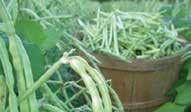
Seeds for Southern Soils
PATENT PROTECTED
Top Pick Peas gives you top yields plus pods on top of the plant.
UTILITY
“My Top Pick Pinkeye Peas just plain out-yield any other variety I have planted...”
“My Top Pick Pinkeye Peas just plain out-yield any other variety I have planted...”

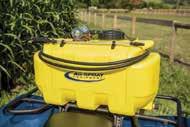

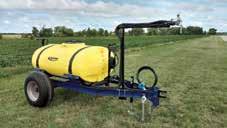
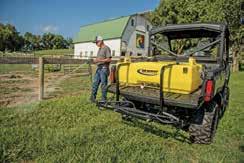

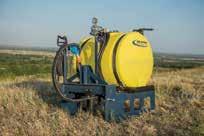
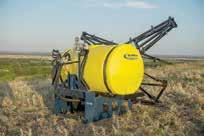
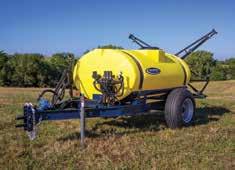



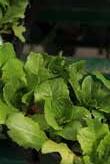
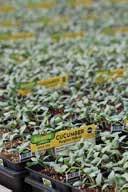
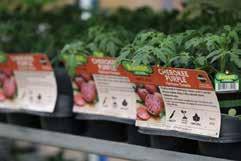






88 Cooperative Farming News LOW PROFILE DELUXE TRAILER SPRAYERS • 500 Gallon Elliptical Tank • Heavy Duty Low Profile Frame • Pressure, Agitation & Strainer Assemblies • Strainer Assy On Top Of Frame In Front Of Tank • Adjustable Hitch Height • 15” Jack • 11L-15 Implement Tread Tires • Hypro 8 Roller Pump Visit or Call a Co-op Store Near You. Supply May Vary at Participating Stores. SPRAYING MADE EASY AND AFFORDABLE 12 VOLT SPOT SPRAYERS REPAIR PARTS AVAILABLE AT YOUR LOCAL CO-OP BRONZE 15 Gallon 404799 25 Gallon 404803 SILVER 15 Gallon 404800 25 Gallon 404804 GOLD 15 Gallon 404801 25 Gallon 404805 GOOD BETTER BEST UTV & 3 POINT SPRAYERS 12 Volt 45 Gallon - 454198 12 Volt 65 Gallon - 454079 *Boom Kits Sold Separately 55 GALLON 3 POINT Hamilton - 36’ Swath 404798 BXT - 36’ Swath 404848 7-Nozzle - 140” Swath 480442 110, 150 & 200 GALLON BOOMLESS, 6 & 8 ROW BOOMS IN STOCK LOW PROFILE PASTURE SPRAYERS TR300E-MBXT22PS 300 Gallon 416791 With BXT Boomless Nozzles - 36’ Broadcast Sprays Left Or Right Or Both CALL FOR PRICING WE LIVE AG WE LIVE AG At participating Co-op stores. Selections may vary.




















 Editor-in-Chief
Editor-in-Chief




















 BY JARED DANIEL
BY JARED DANIEL




 THOMAS VAUGHAN
BY DR. TONY FRAZIER
THOMAS VAUGHAN
BY DR. TONY FRAZIER





























 BY JAMIE MITCHELL
BY JAMIE MITCHELL


















































 BY JESSIE SHOOK
BY JESSIE SHOOK














 This old black and white photo shows the Church of Christ building in its heyday, next to Gates Motor Service.
This old black and white photo shows the Church of Christ building in its heyday, next to Gates Motor Service.











 Lacewing larvae prey on garden pests.
Potted ferns do well in a shaded entrance.
Lacewing larvae prey on garden pests.
Potted ferns do well in a shaded entrance.









 BY BETHANY O’REAR
BY BETHANY O’REAR




































































